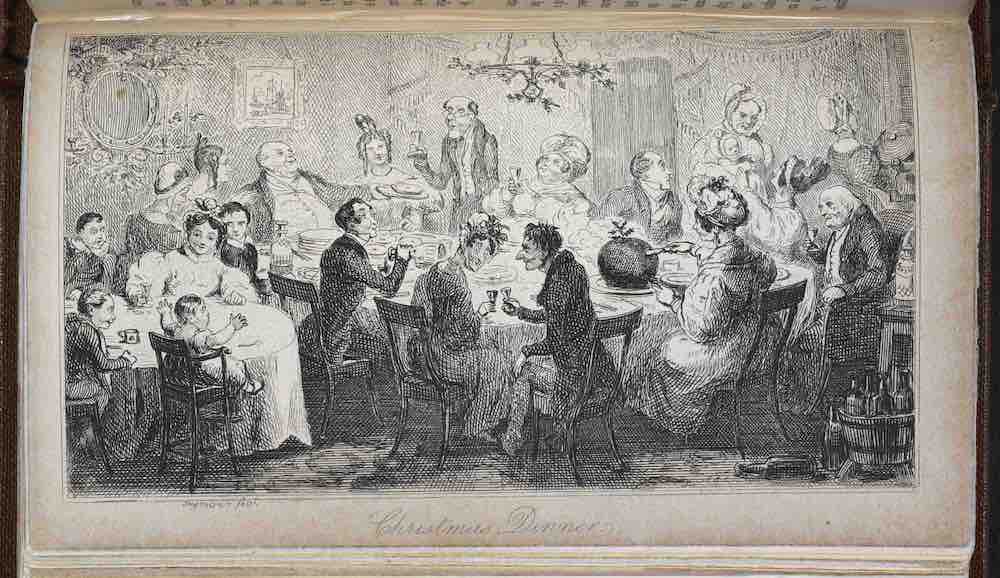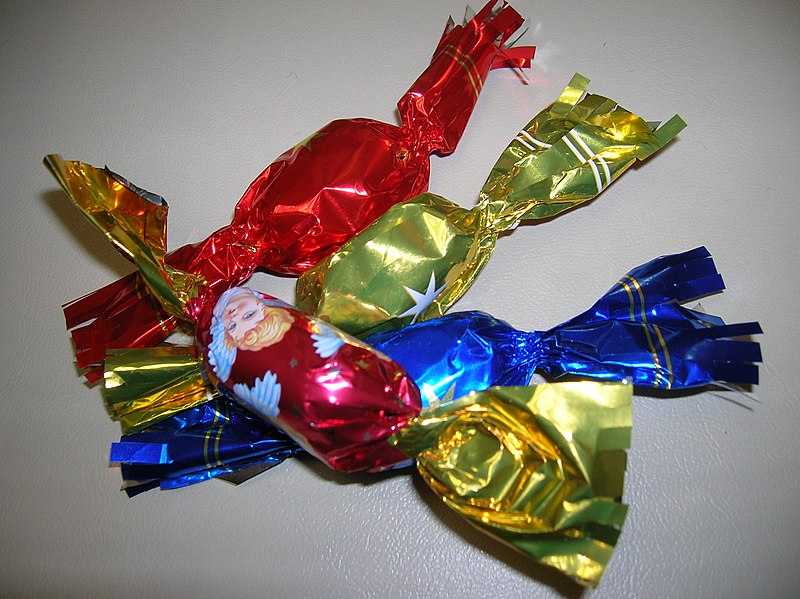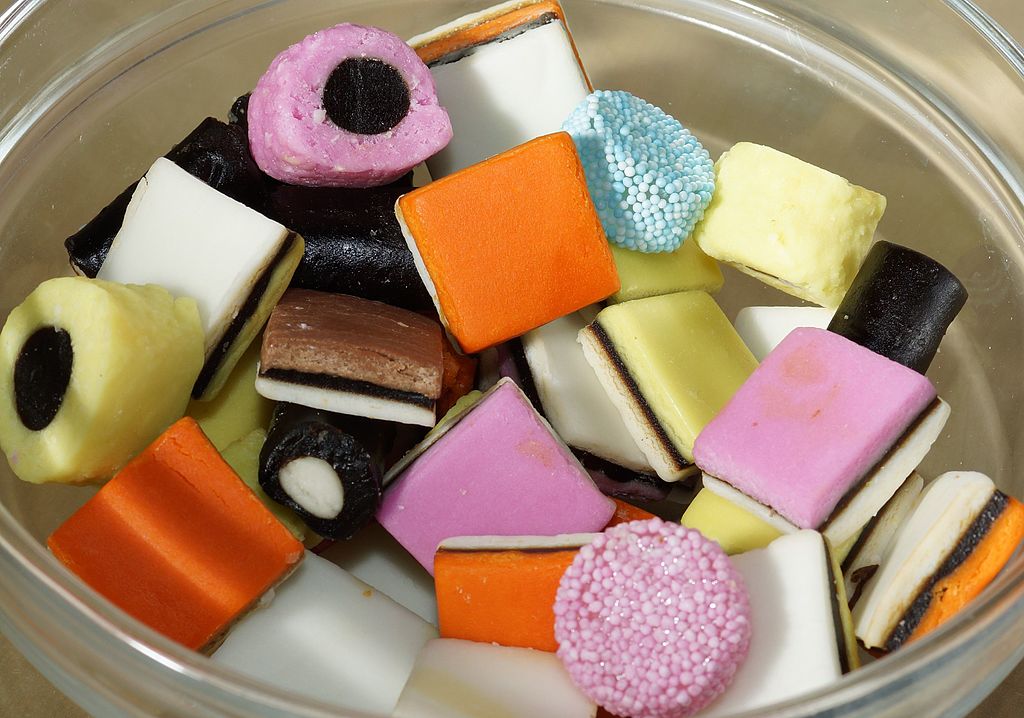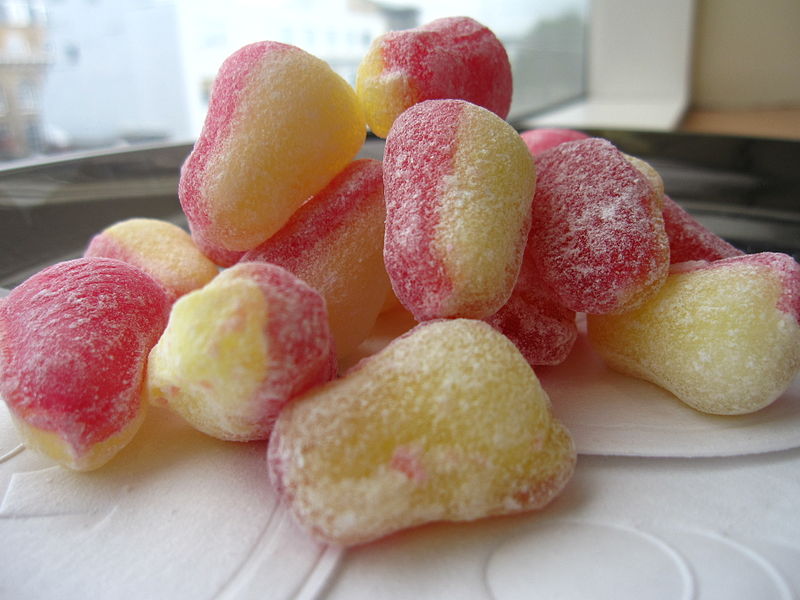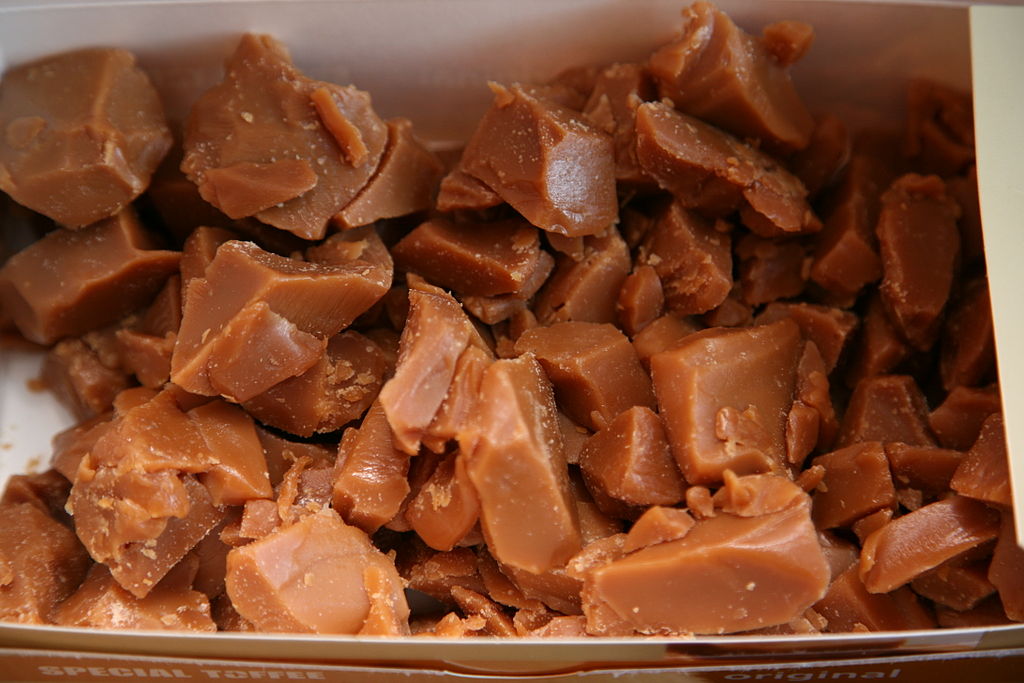Welcome to the Victorian Christmas Exhibit curated by the Diefenbaker Canada Centre! This annual event is usually held in the Little Stone Schoolhouse on the University of Saskatchewan campus with fun games, activities, crafts, and learning. Due to unprecedented times, we have used this opportunity to create a virtual exhibit for families to learn about Victorian Christmas traditions and complete activities together in their own homes!
In this exhibit, you will learn how Victorian children celebrated Christmas at school and at home with their families! You will also see many historic photos, fun family-friendly information and links to games, crafts, and printables!
At the end of the exhibit, a supplemental learning section provides a more detailed look at the history of Victorian Christmas, including the origins of famous Christmas figures throughout the world. This section is recommended for advanced readers who would like to learn more.
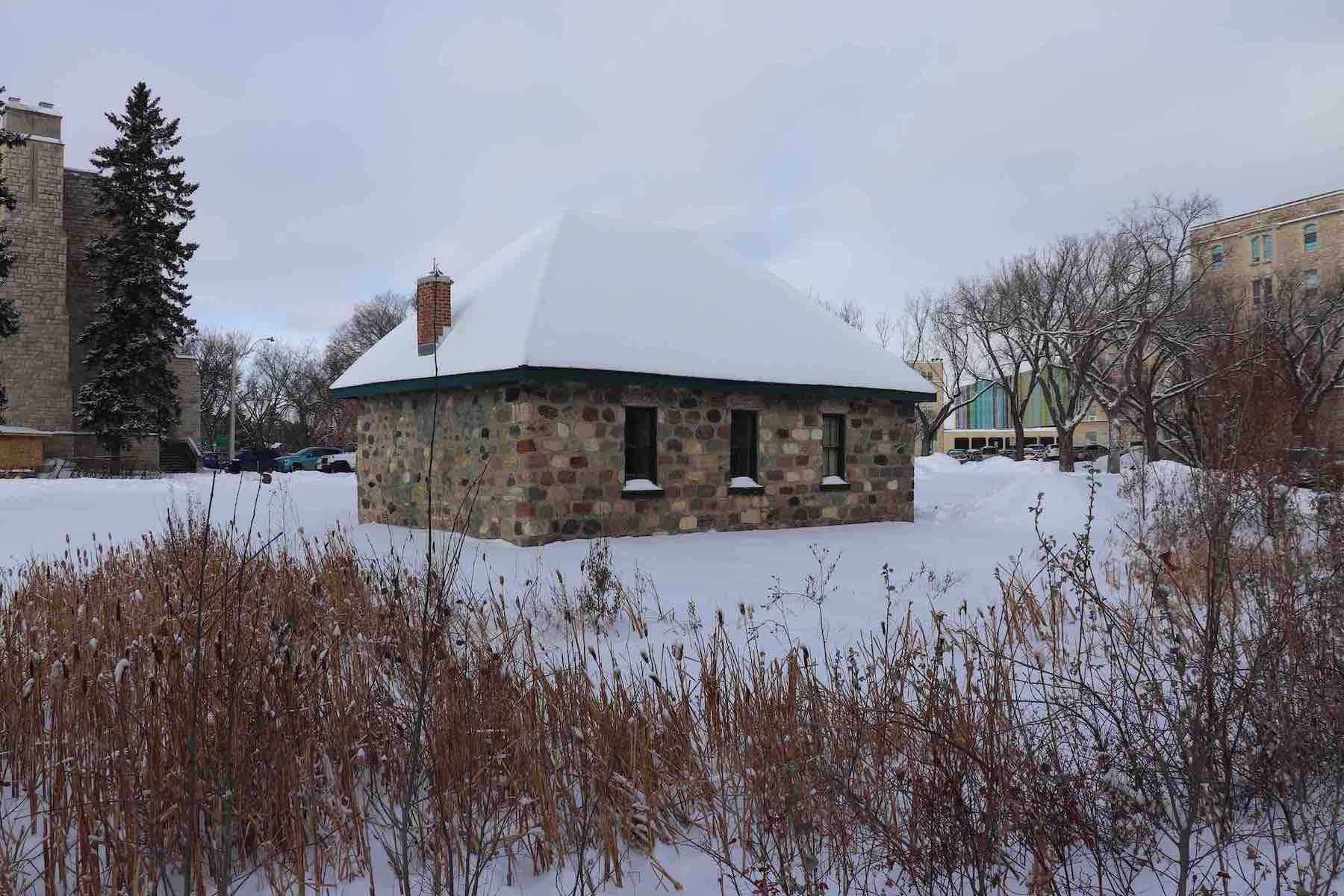 |
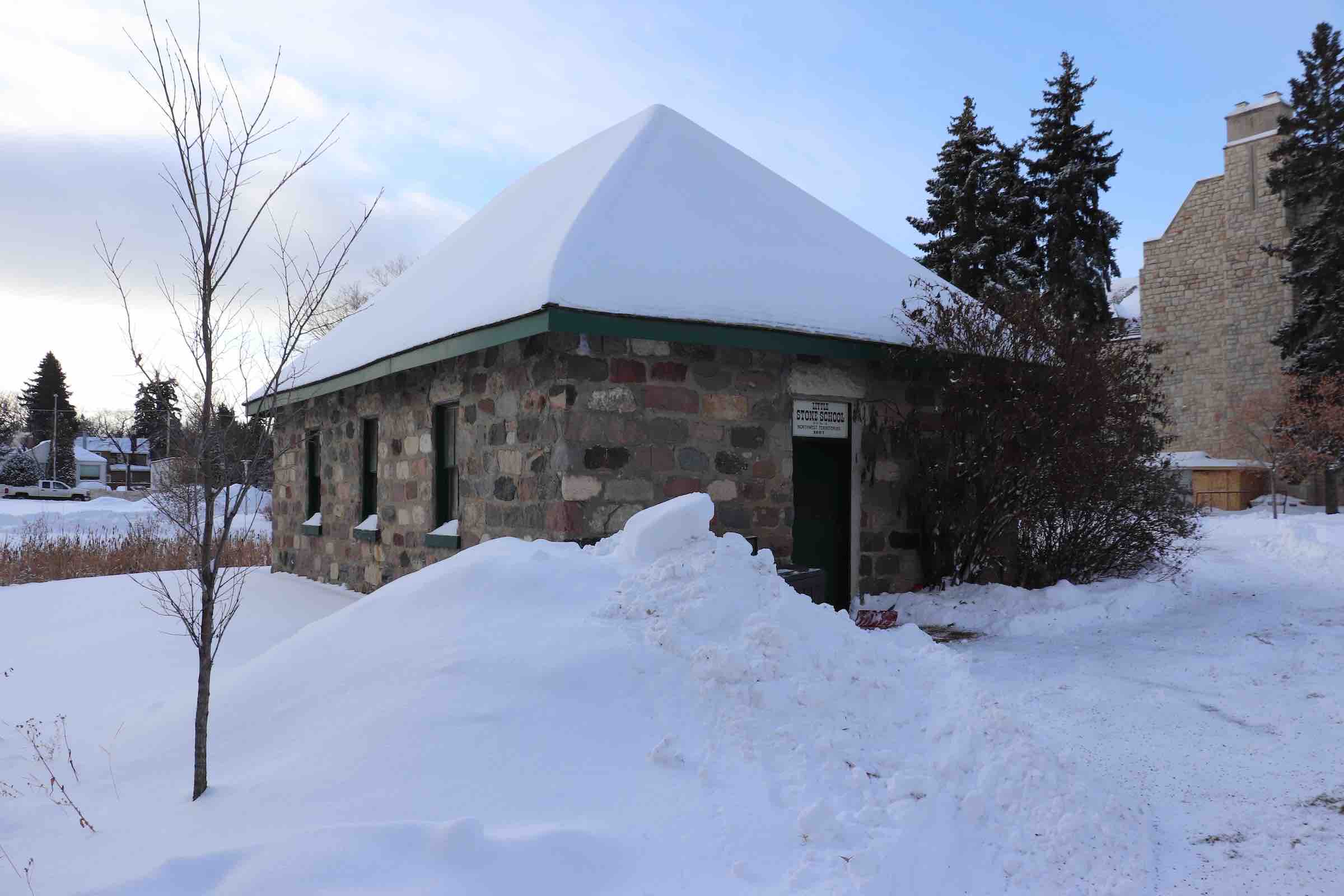 |
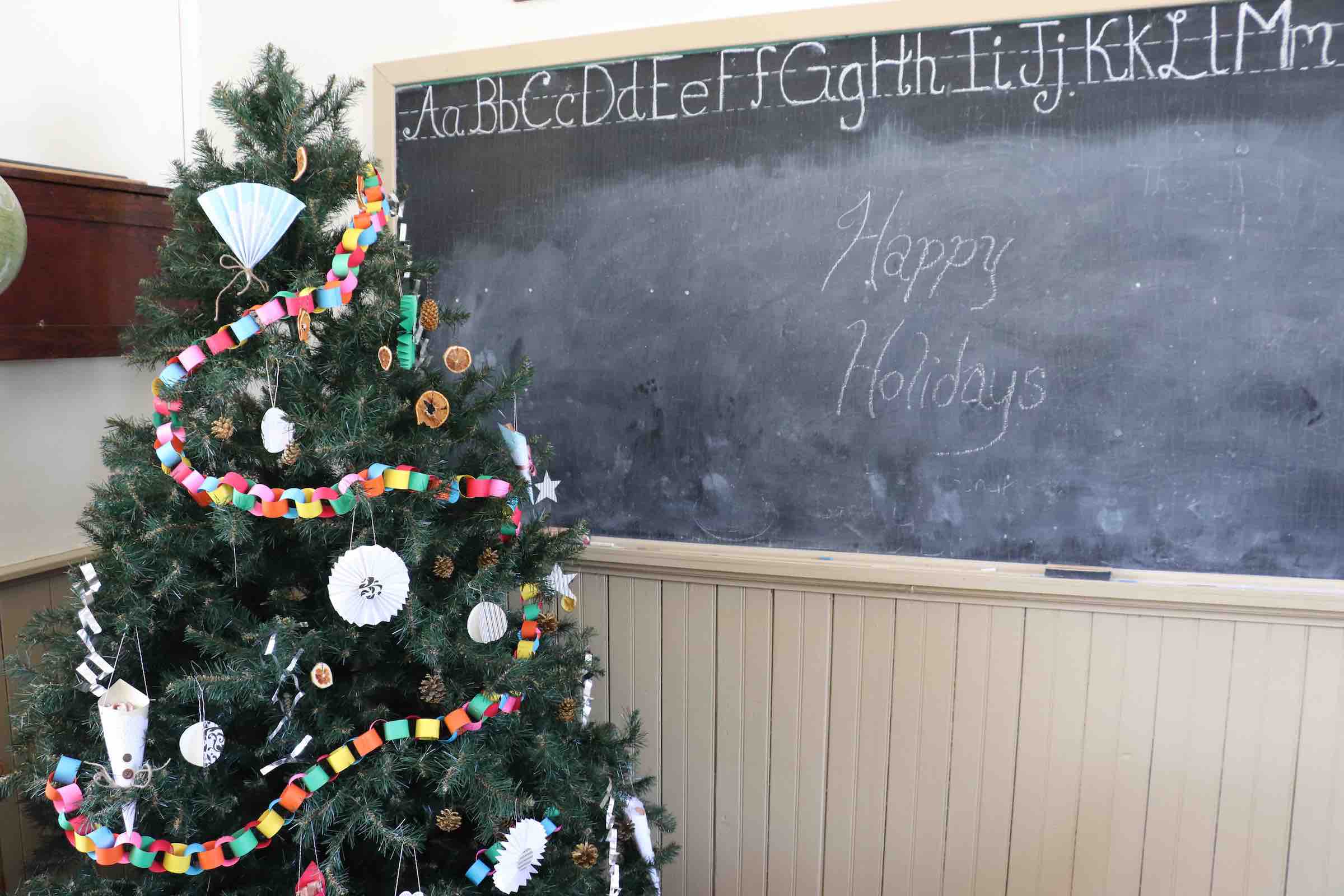 |
The Little Stone Schoolhouse
The Little Stone Schoolhouse (LSS) is a small stone building located on the University of Saskatchewan Campus in Saskatoon, Saskatchewan. It opened in 1887 (over 130 years ago!) as the Victoria School and was the first public school in the city. The school was originally located near the current Ecole Victoria school on Broadway Avenue until it was disassembled and moved to campus in 1911.
The LSS is a one-room schoolhouse, which was very common in the Victorian era. The school held about 40 students ranging from grades one through eight with one teacher. How many classrooms are in your school? Can you imagine having eight grades in one room?
To learn more about the history of the Little Stone Schoolhouse, please check out our new online exhibit! (Coming Soon!)
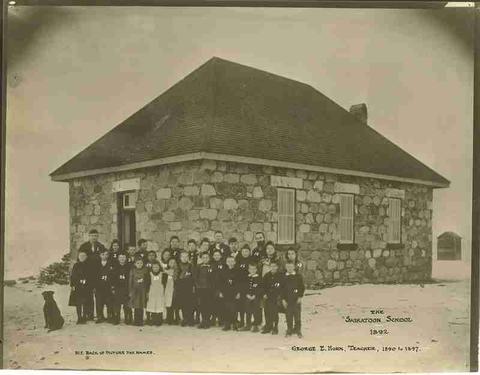 |
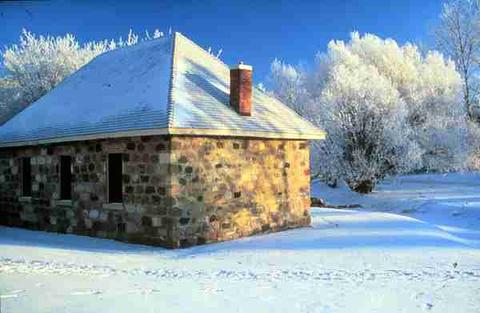 |
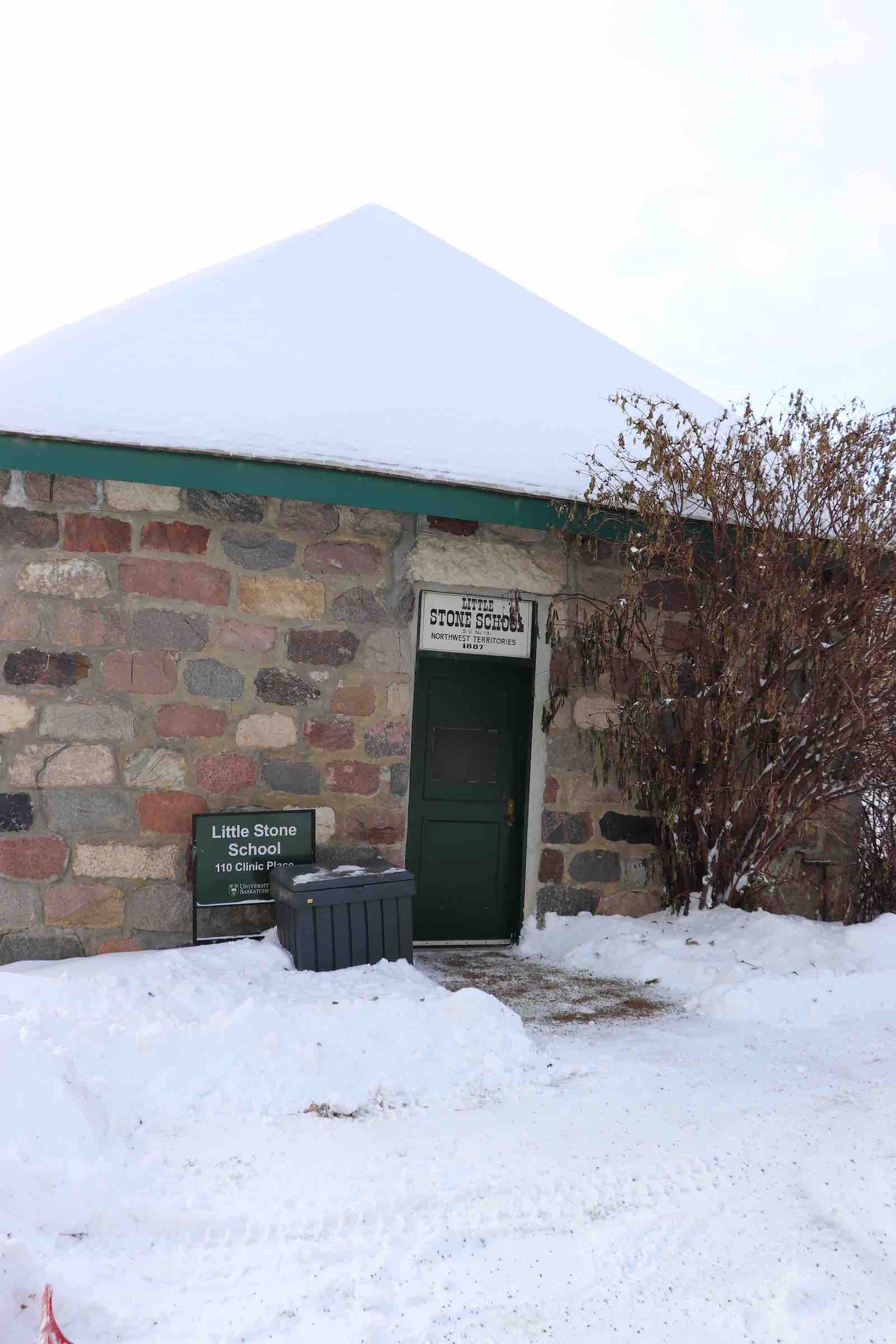 |
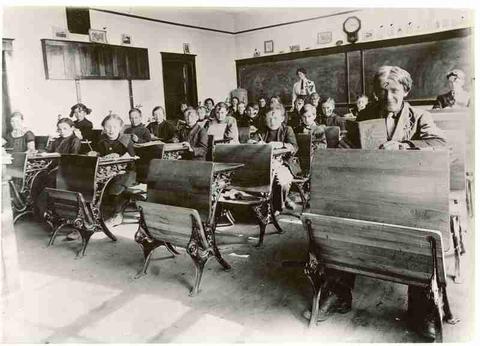 |
 |
Wintertime in the Classroom
The Road to School
How do you usually get to your school? Do you take a yellow school bus? Does someone drop you off in their car? Do you walk? Does it change in the wintertime? Students who attended the original Victoria School would usually walk but many of them did not live close to the school. Sometimes the walk could take one hour each way! In the winter, many students had to trudge through deep snow in the harsh cold weather. Some students were fortunate enough to ride a horse-drawn sleigh to school.
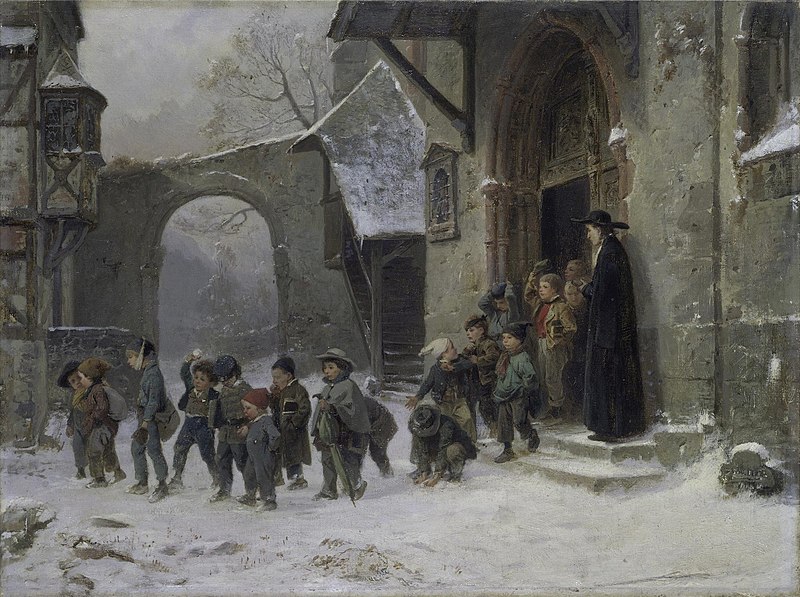 |
 |
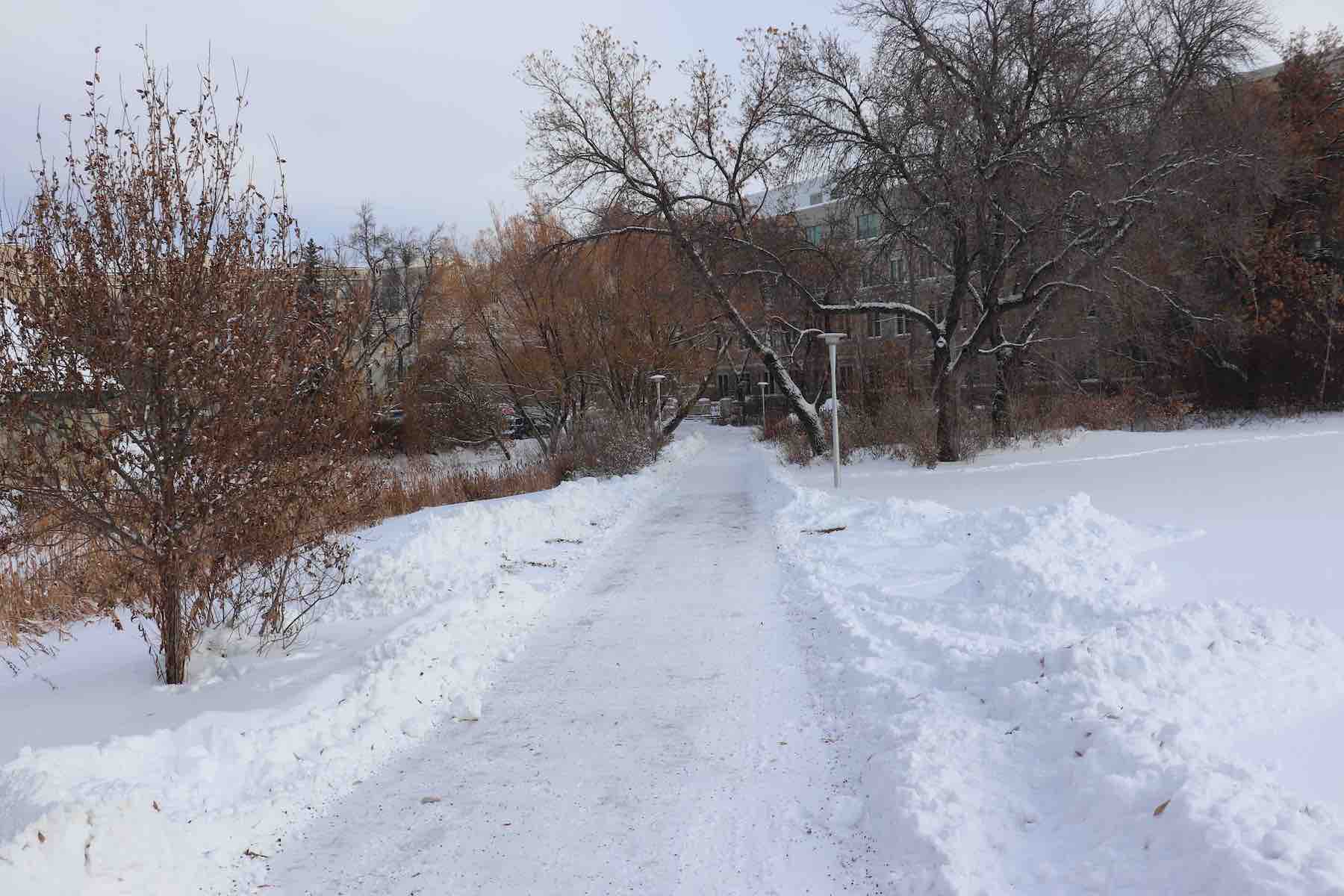 |
Where’s the Light Switch?
Do you notice that in the winter it’s still a bit dark on your way to school and when you leave it starts getting dark again? Does your classroom have light switches to light up the room? The LSS did not have light switches, because they didn’t have electricity! They relied on sunlight from the windows but in the winter when it was dark, they had to light kerosene lamps. Kerosene lamps were glass and metal lamps that hung on the walls. They had a flat wick that was lit by a match and fueled by kerosene oil to keep it burning throughout the day.
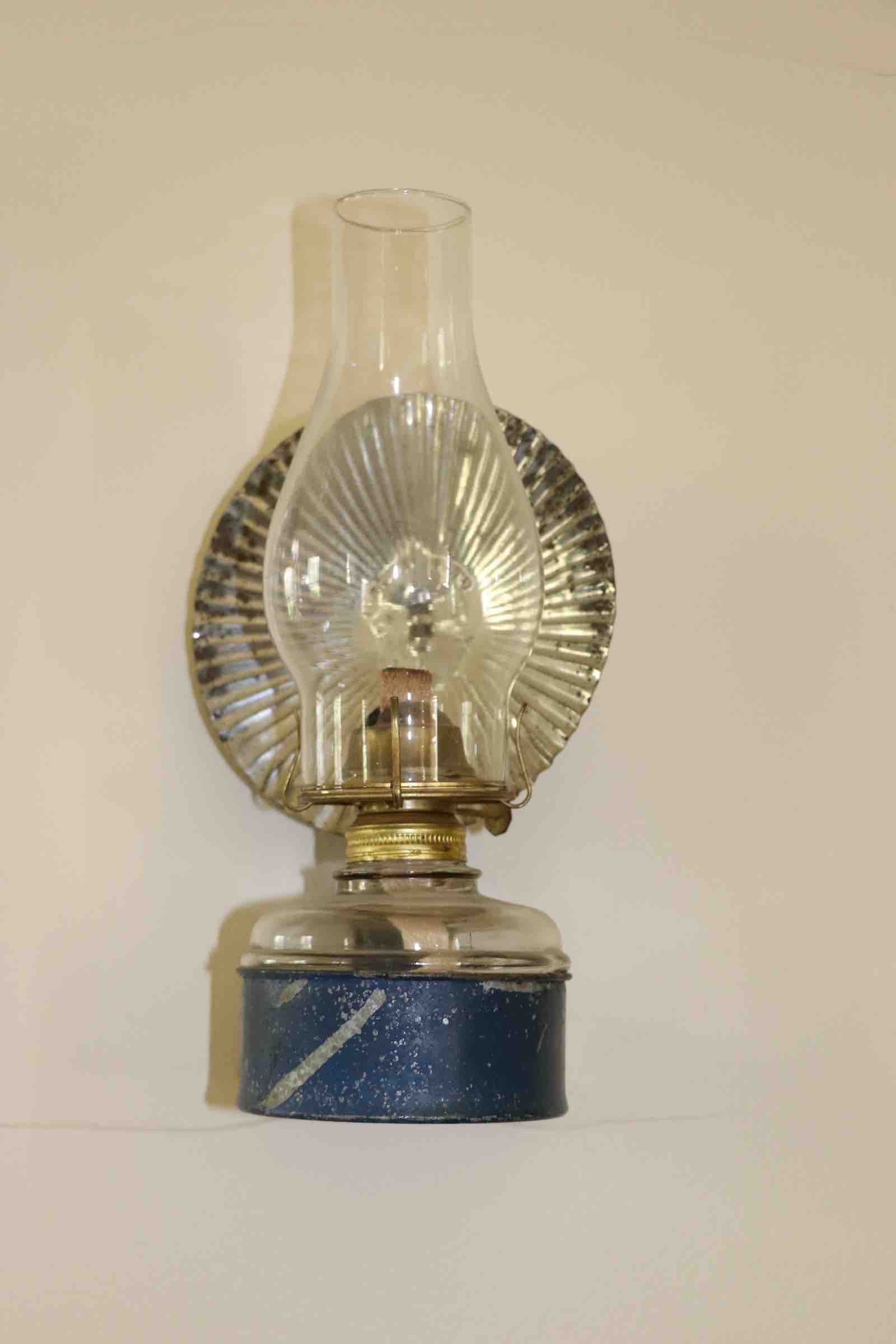 |
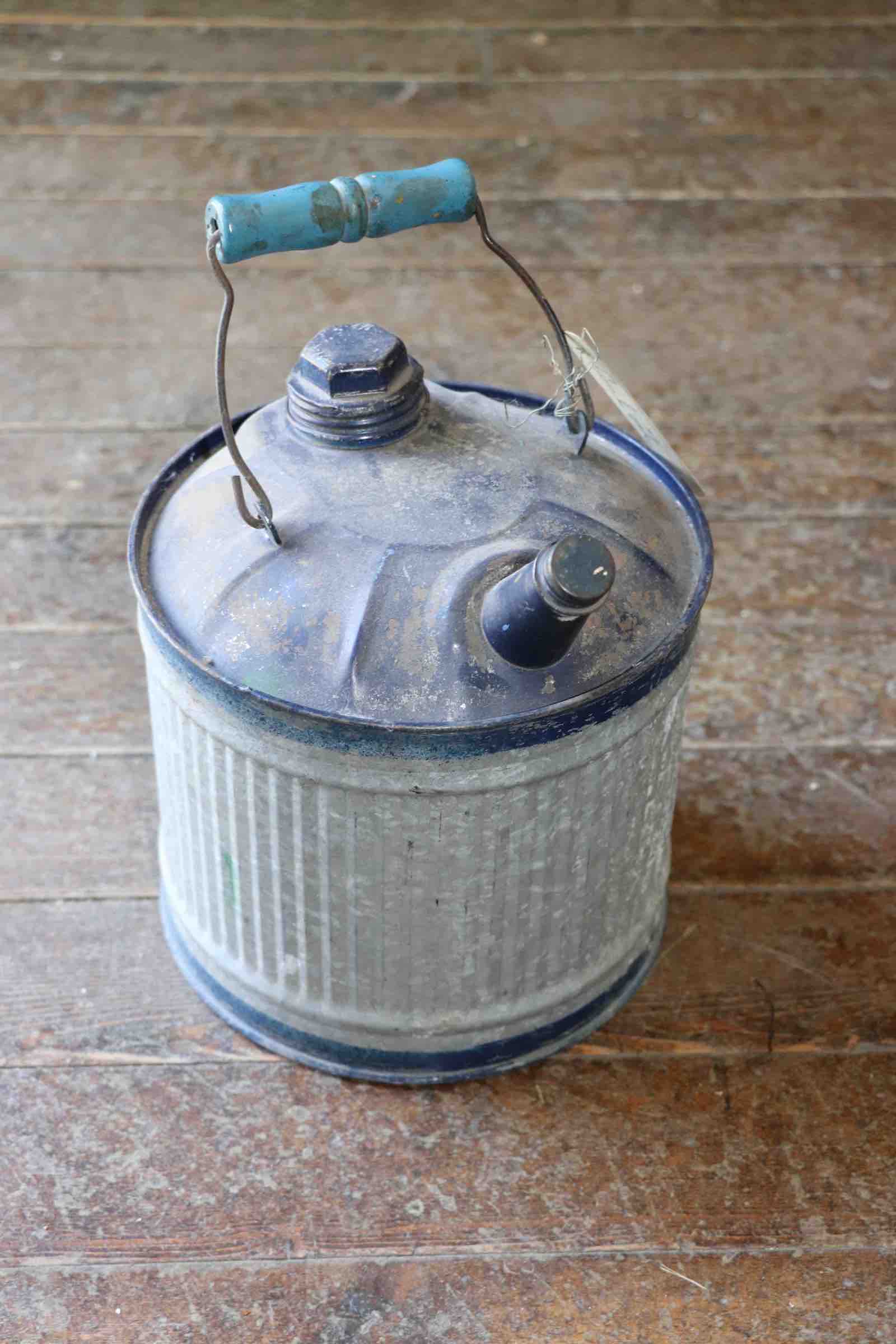 |
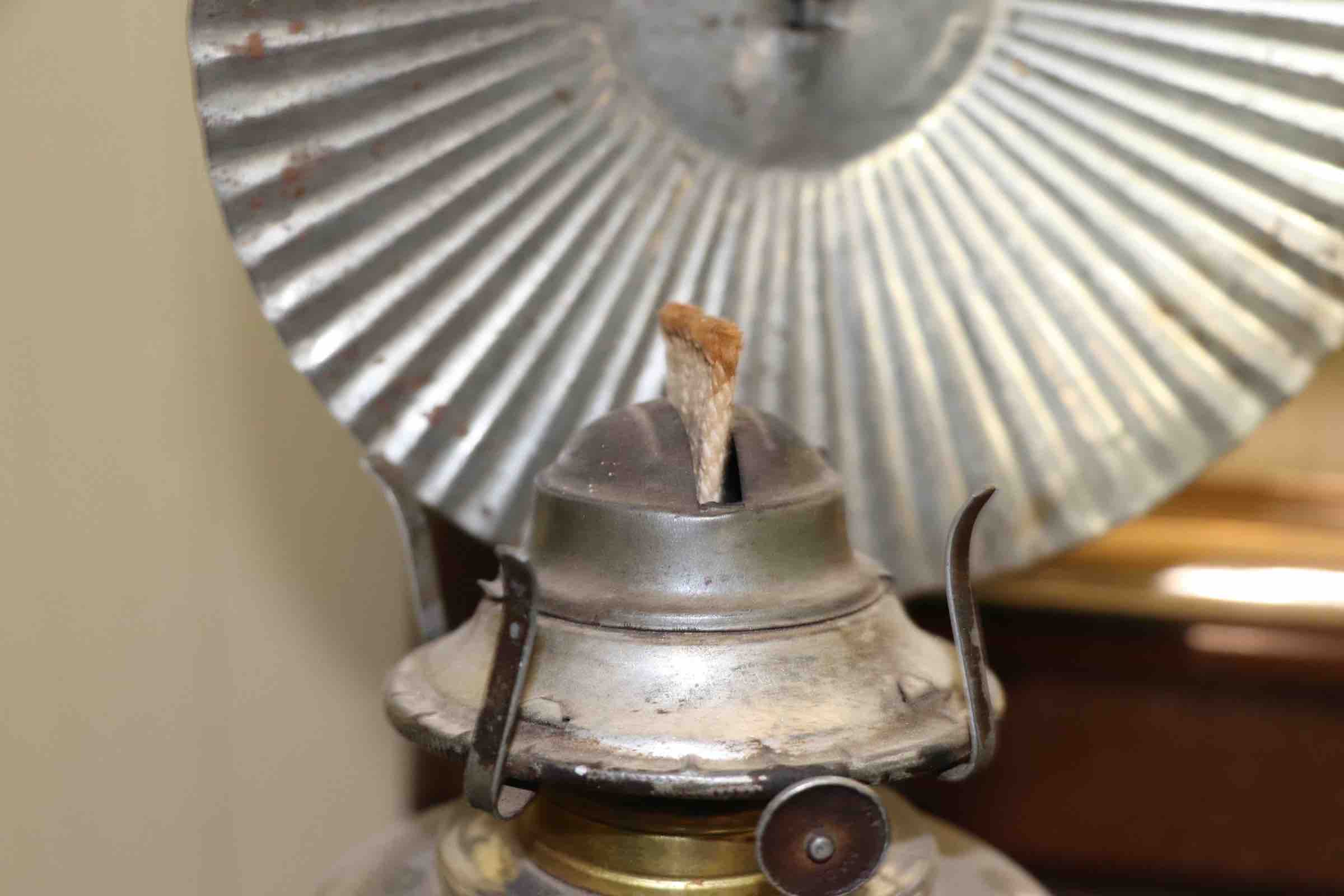 |
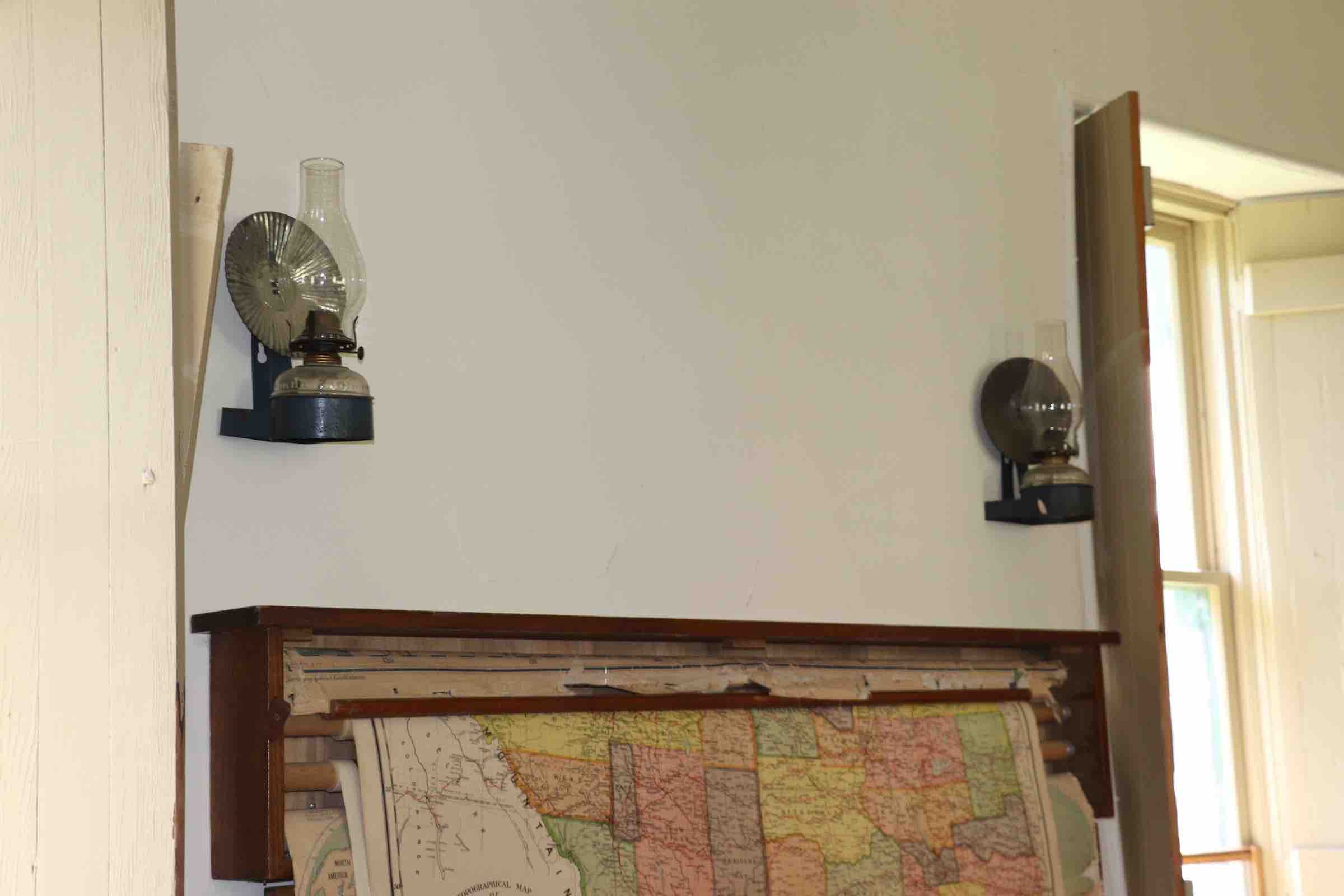 |
Keeping Warm
Is it warm in your classroom during the winter? Since the LSS had no electricity, the room was heated by a wood burning stove. This stove was not like the one in your kitchen; the stove in the LSS had to be continually filled with logs to keep the fire burning all day. Teachers usually got to school early to light the stove because it took a while to warm up the room. It was then up to the students to bring logs from home or collect them from the schoolyard after they were chopped.
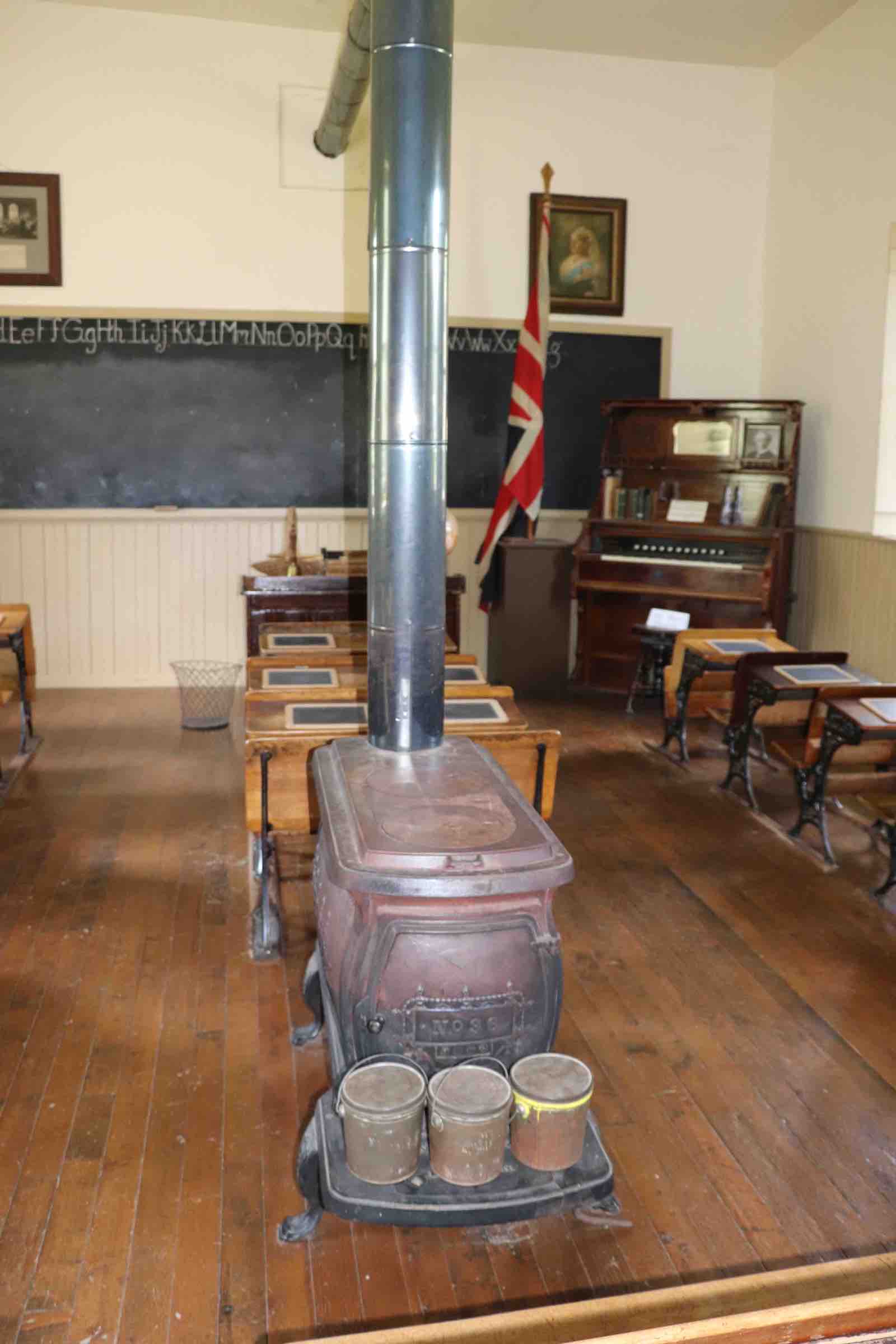 |
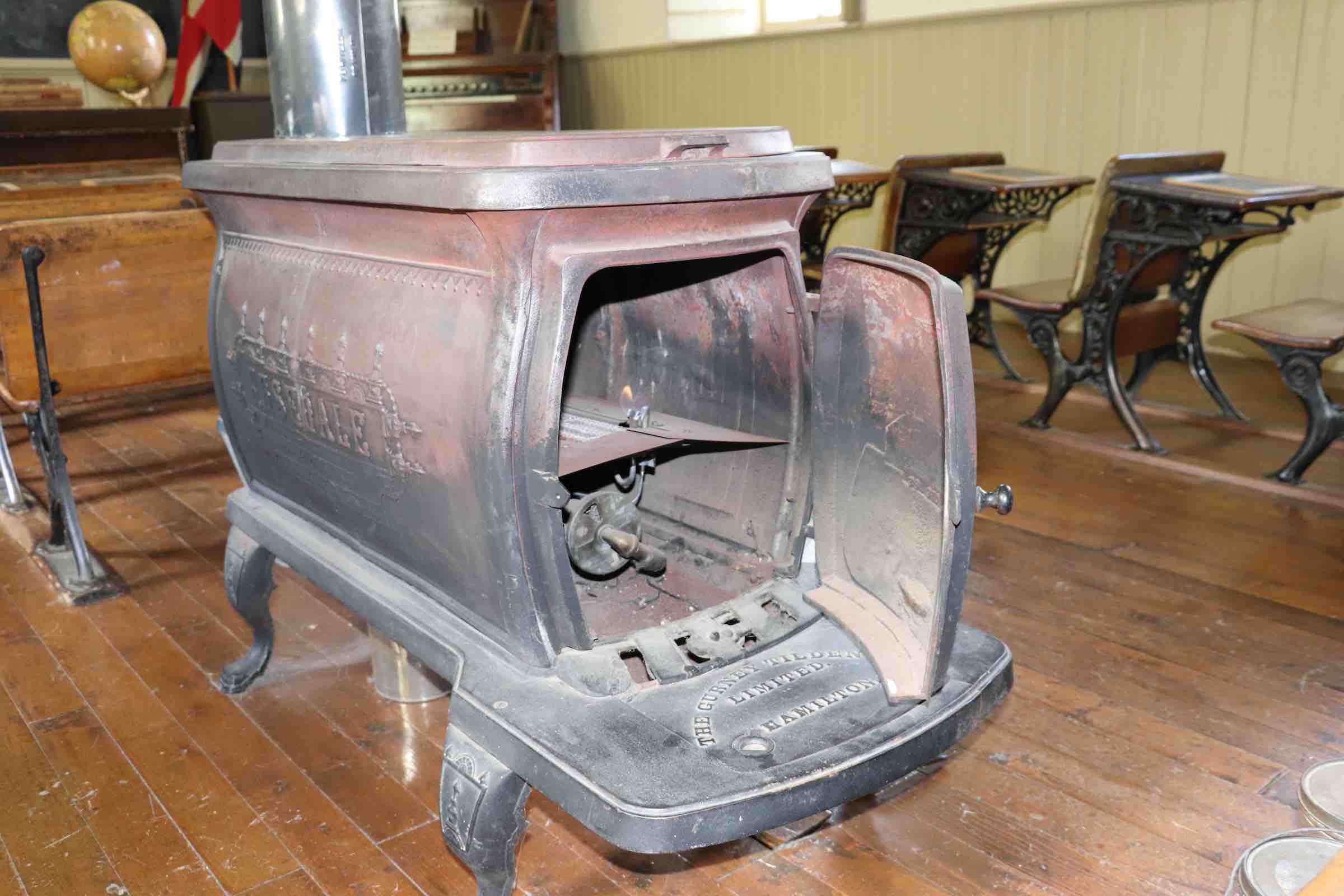 |
When is Lunchtime?
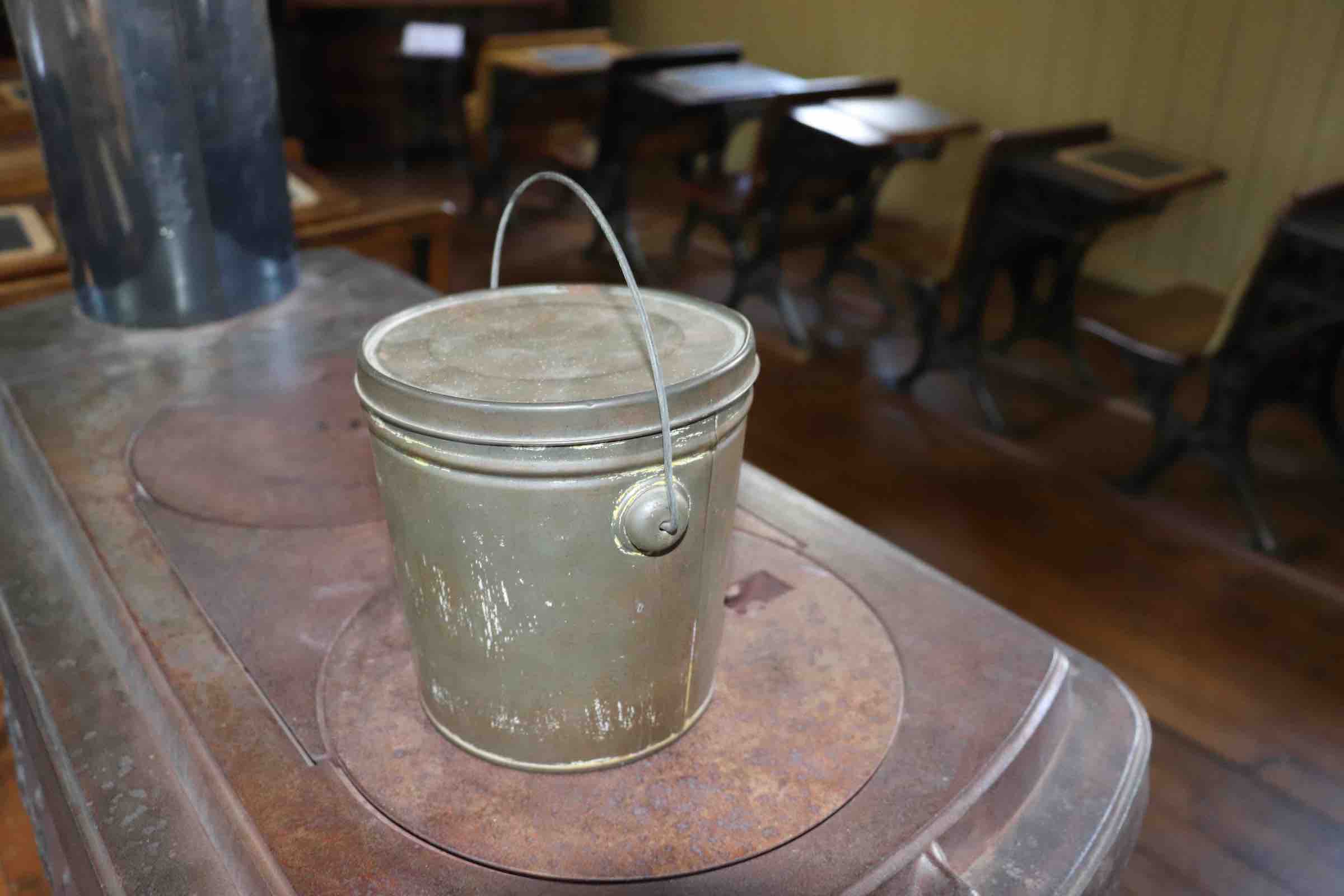 How do you bring your lunch to school? Students at the LSS usually brought lunch to school in metal pails with lids that were originally used for foods such as lard or honey before they were cleaned out. In the winter when students took their long journeys to school through the snow, their lunches would freeze inside the pails so they placed them by the stove so they would thaw in time for lunch.
How do you bring your lunch to school? Students at the LSS usually brought lunch to school in metal pails with lids that were originally used for foods such as lard or honey before they were cleaned out. In the winter when students took their long journeys to school through the snow, their lunches would freeze inside the pails so they placed them by the stove so they would thaw in time for lunch.
Where is the Water Fountain?
Unlike today, water did not flow from taps or water fountains in the LSS. Water had to be collected and brought into the school. It would then be placed in water crocks for drinking and pails for washing up. Students usually collected water from a well out in the schoolyard, but what happens to water outside in the winter? How do you think students collected water in the winter? Most schoolhouses had students collect multiple pails of snow throughout the day and melt it down on the stove.
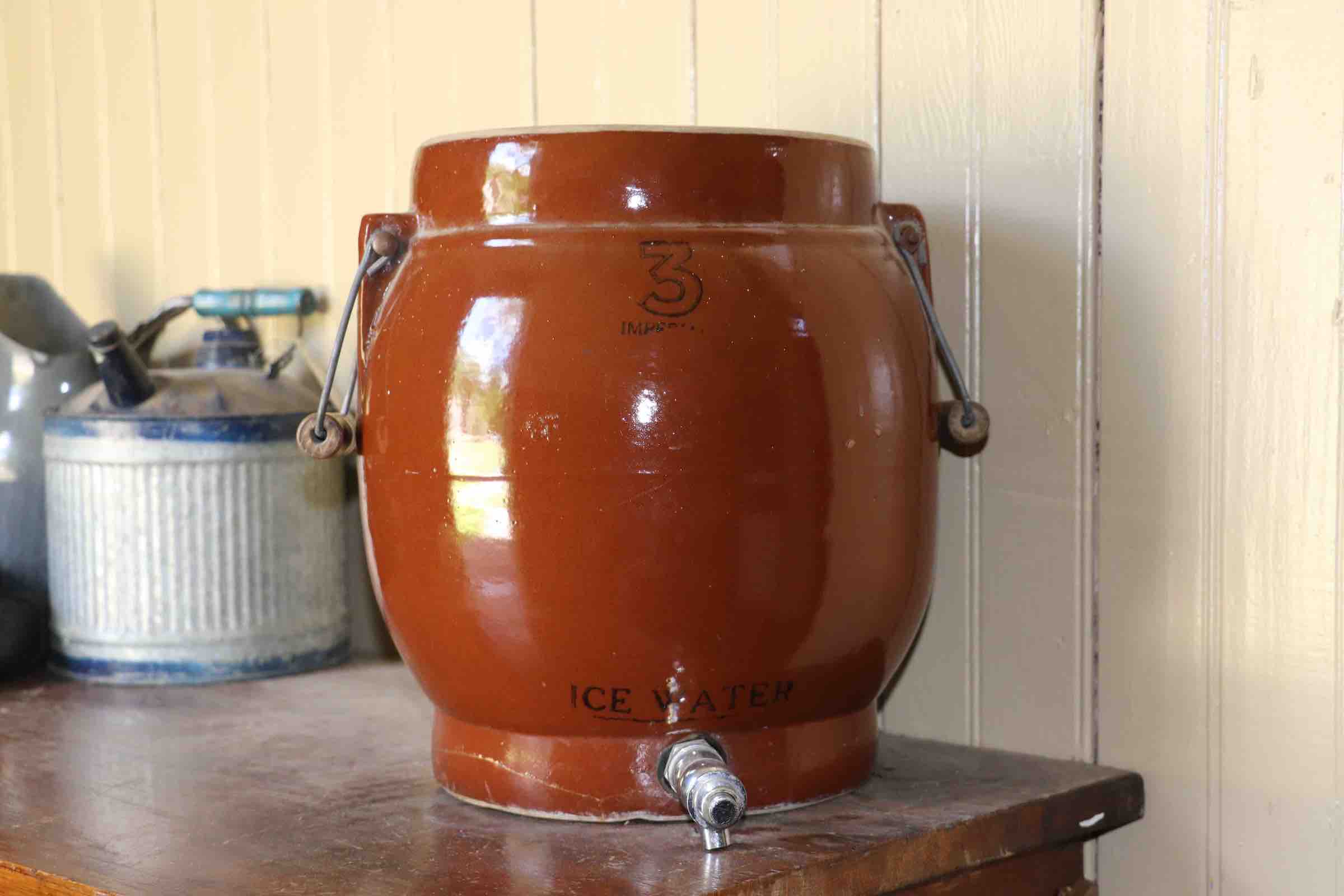 |
 |
Where is the Bathroom?
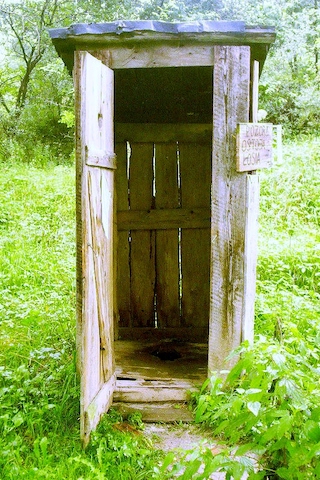 The LSS and other one-room school houses did not have indoor toilets. The bathroom was outside at the edge of the schoolyard in a small separate building called an outhouse. In the winter, students had to get bundled up in all of their winter gear just to get to it and it was very easy to get lost in the snowy weather.
The LSS and other one-room school houses did not have indoor toilets. The bathroom was outside at the edge of the schoolyard in a small separate building called an outhouse. In the winter, students had to get bundled up in all of their winter gear just to get to it and it was very easy to get lost in the snowy weather.
What to Wear?
 What do you or your friends wear to school in the winter? During Victorian times, winter clothing for students depended on what their family could afford. Their jackets and pants weren’t designed for playing in the snow; they were meant for keeping warm. Some students would have worn fur-lined jackets with capes, fur hats, and knit or fur mittens. Most students would have had wool or cotton jackets that often included patches because they were passed down through the children in the family.
What do you or your friends wear to school in the winter? During Victorian times, winter clothing for students depended on what their family could afford. Their jackets and pants weren’t designed for playing in the snow; they were meant for keeping warm. Some students would have worn fur-lined jackets with capes, fur hats, and knit or fur mittens. Most students would have had wool or cotton jackets that often included patches because they were passed down through the children in the family.
Do you share your winter clothing with your brothers and sisters?
Holidays in the Classroom
Lesson Plans
During the holiday season, students in grades one to three would often have Christmas themes in their lesson plans. For example, students would read Christmas-themed stories or poems out loud to practice their reading skills.
Sometimes the entire class would perform a Christmas roleplay together, while decorating the room. Each student would be given a character to play from a famous Christmas story. They would have to act out the character and read from a script.
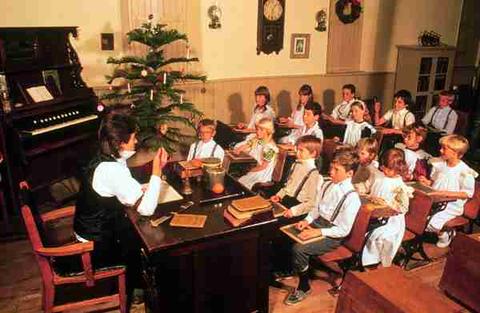 |
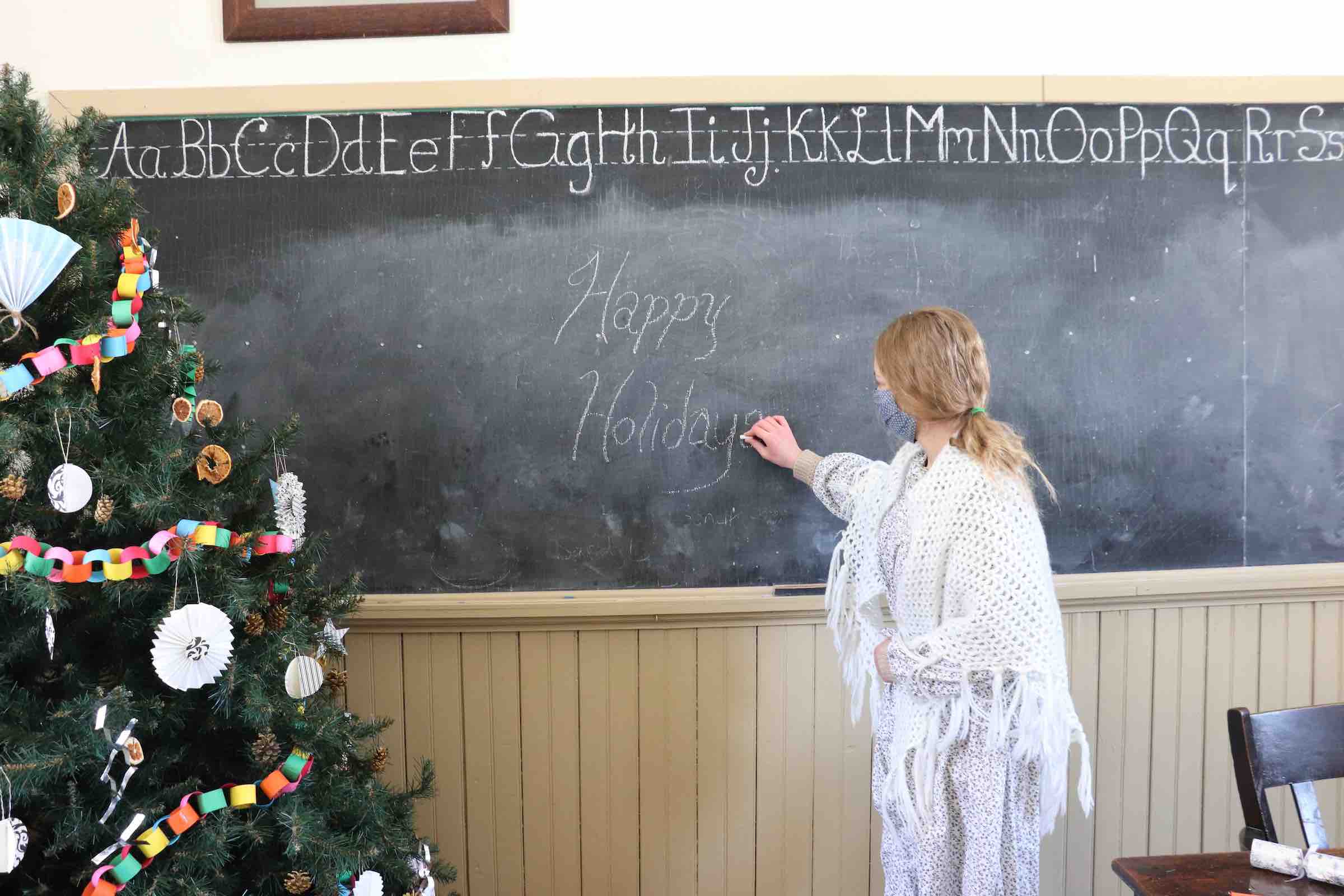 |
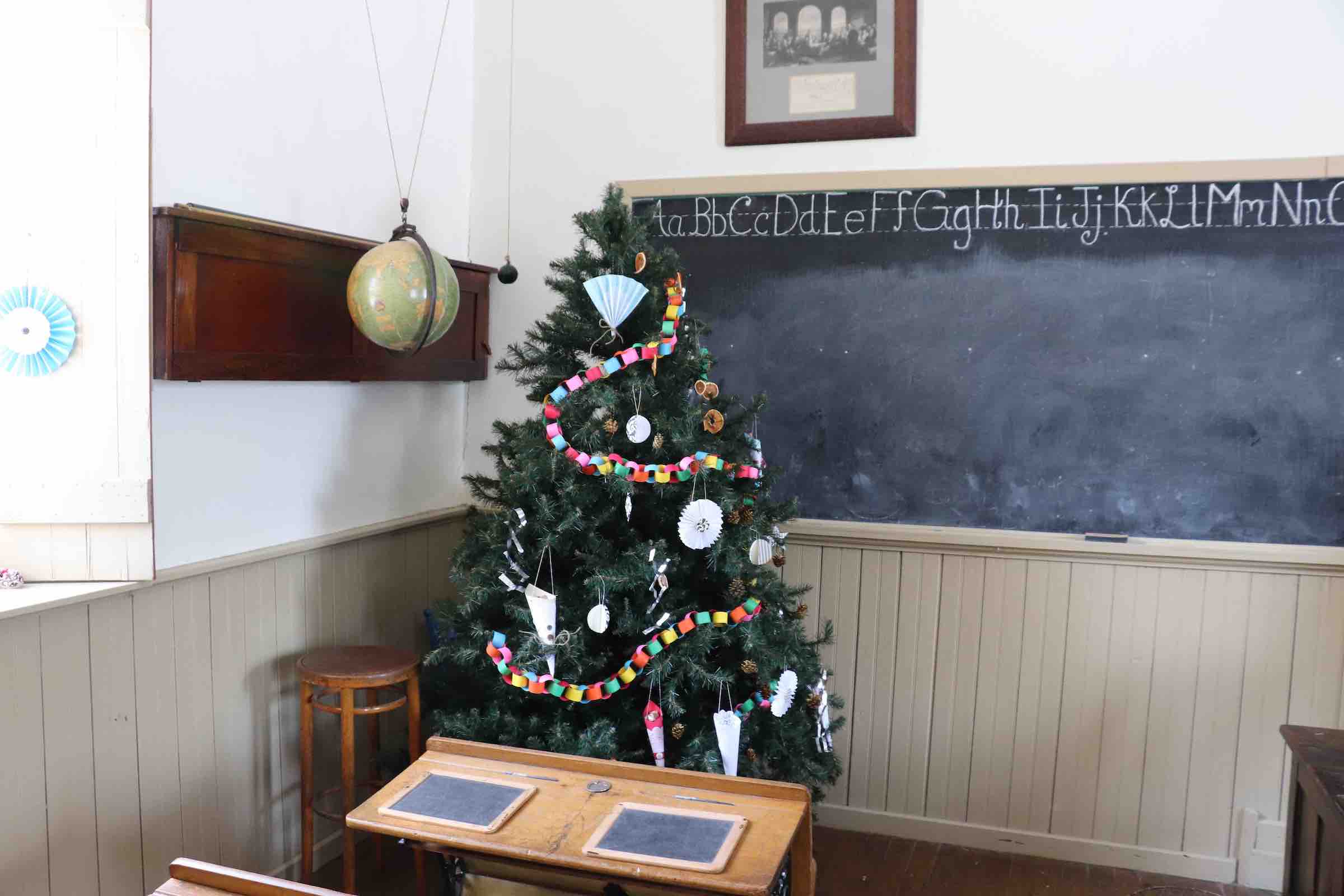 |
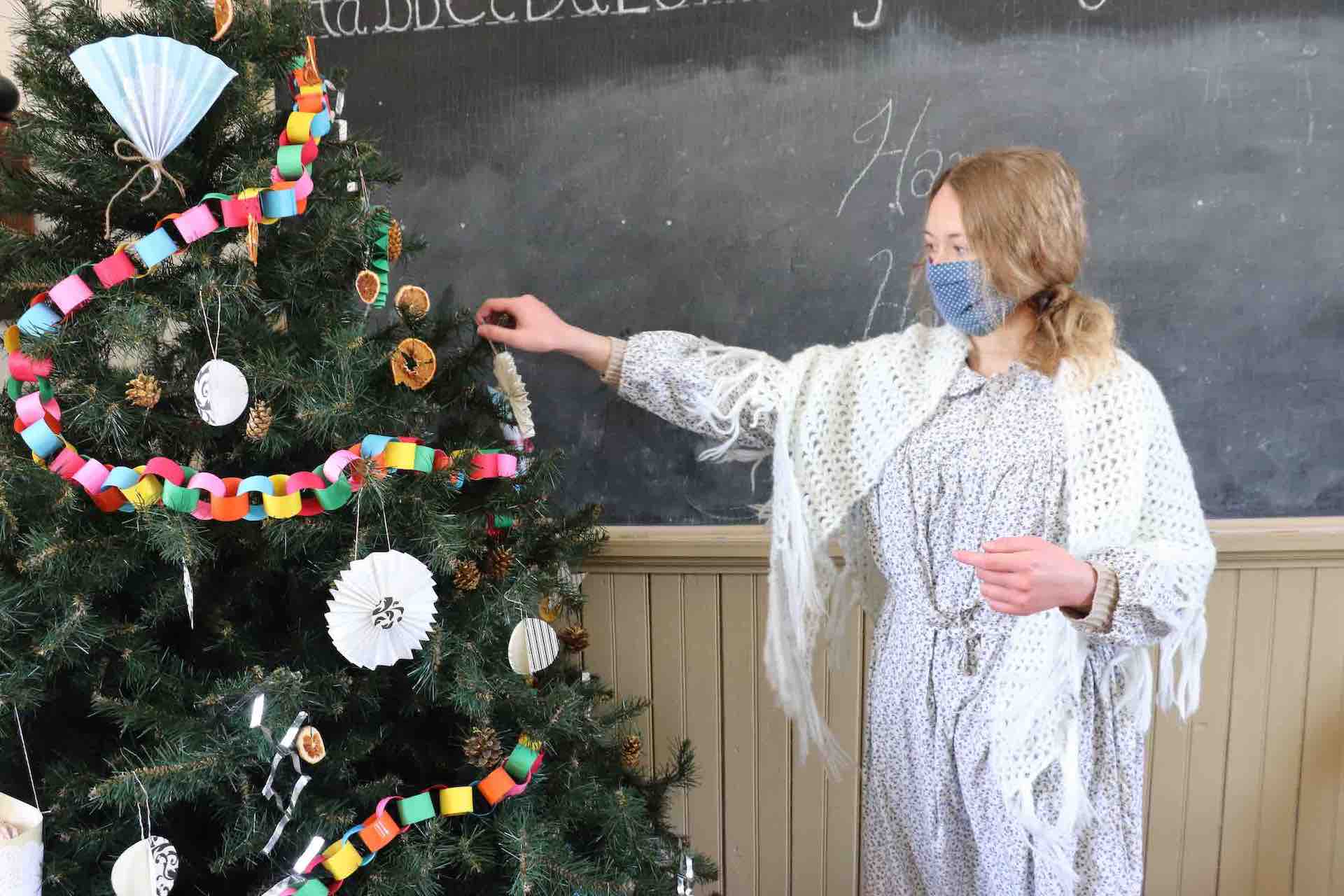 |
 |
Making Gifts
There was usually class time set aside for making small gifts or decorations in the younger grades. Students would make small paper ornaments, paper woven shapes or simple sewn objects. These gifts could be exchanged with other students or taken home. Do you do these types of activities at your school?
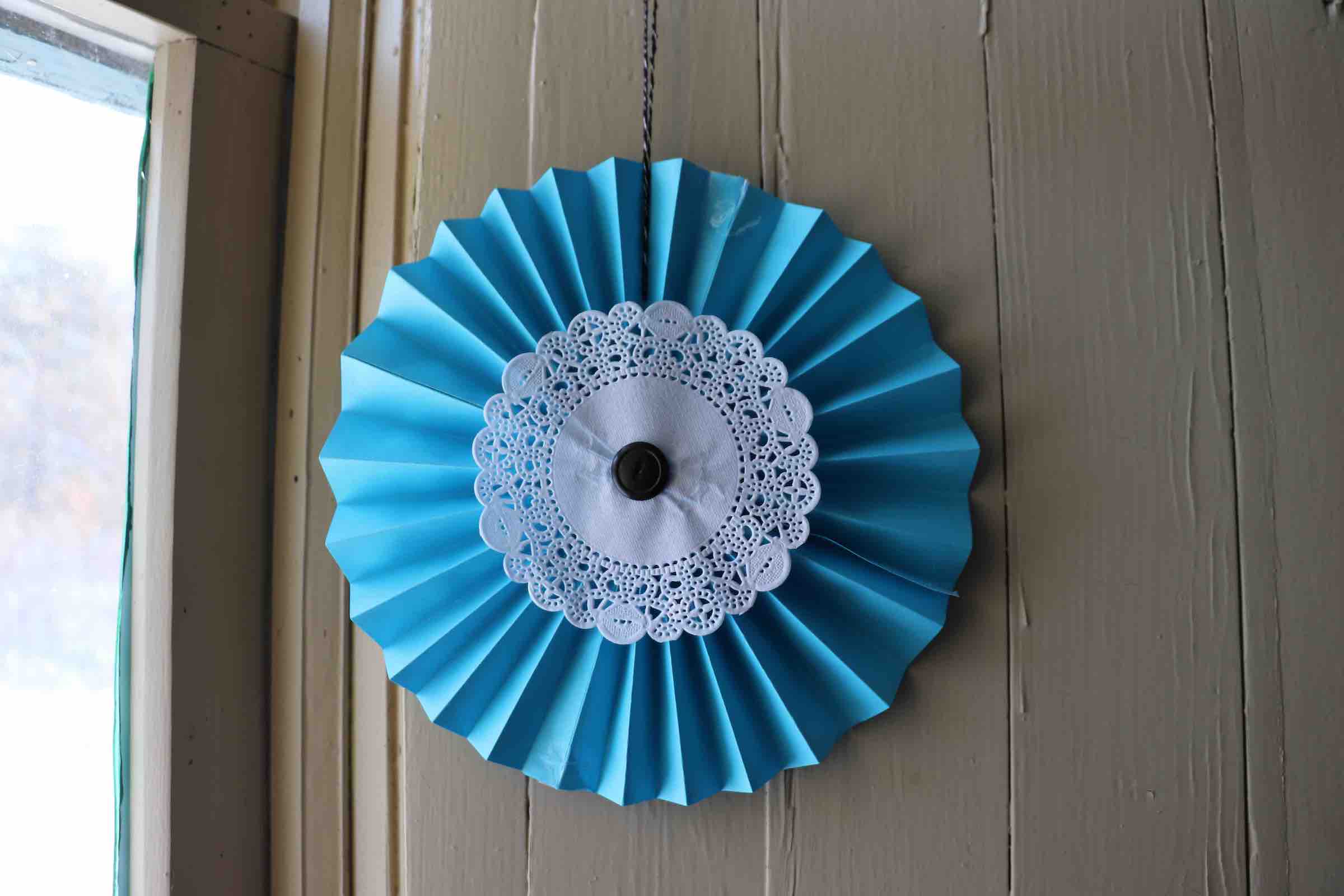 |
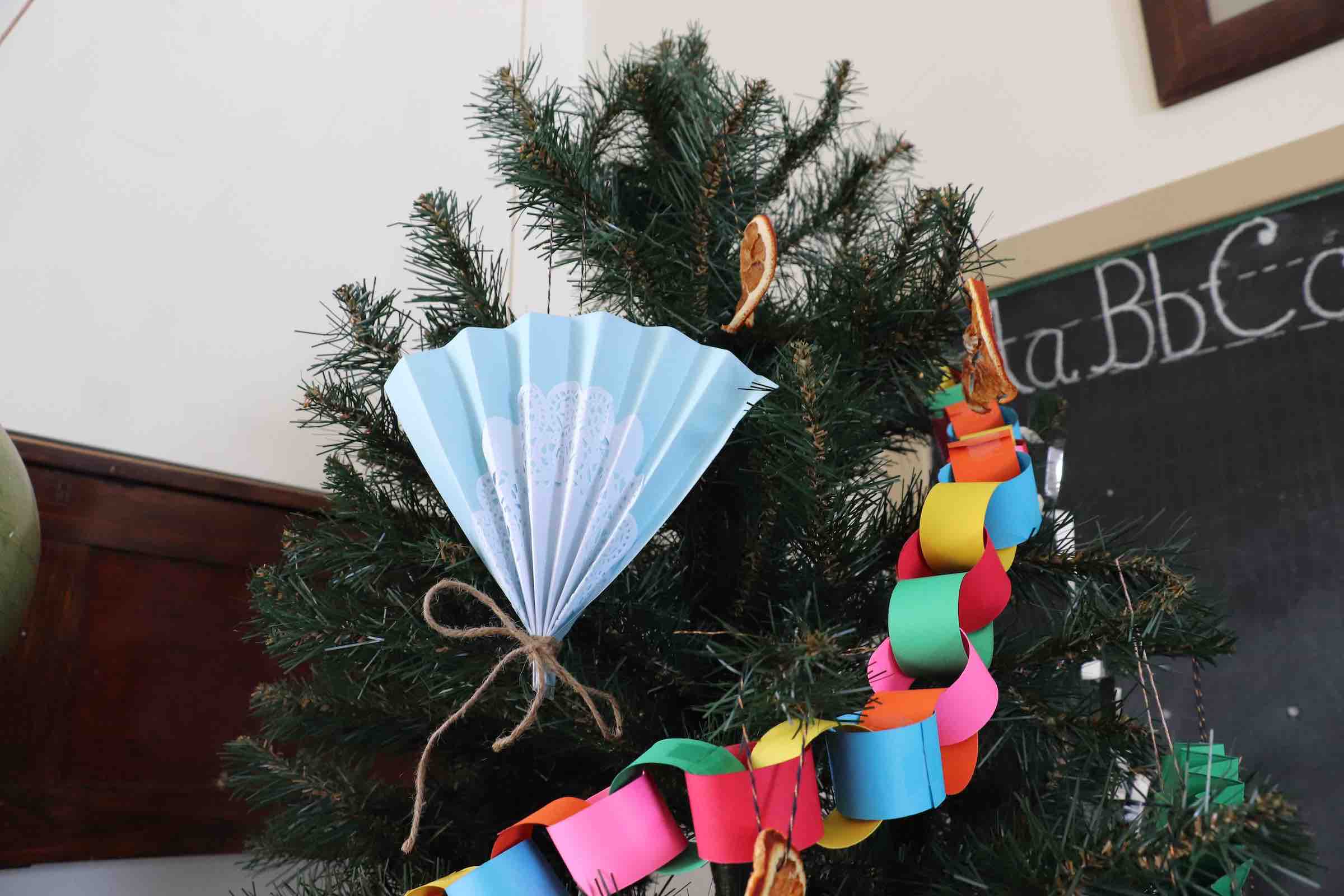 |
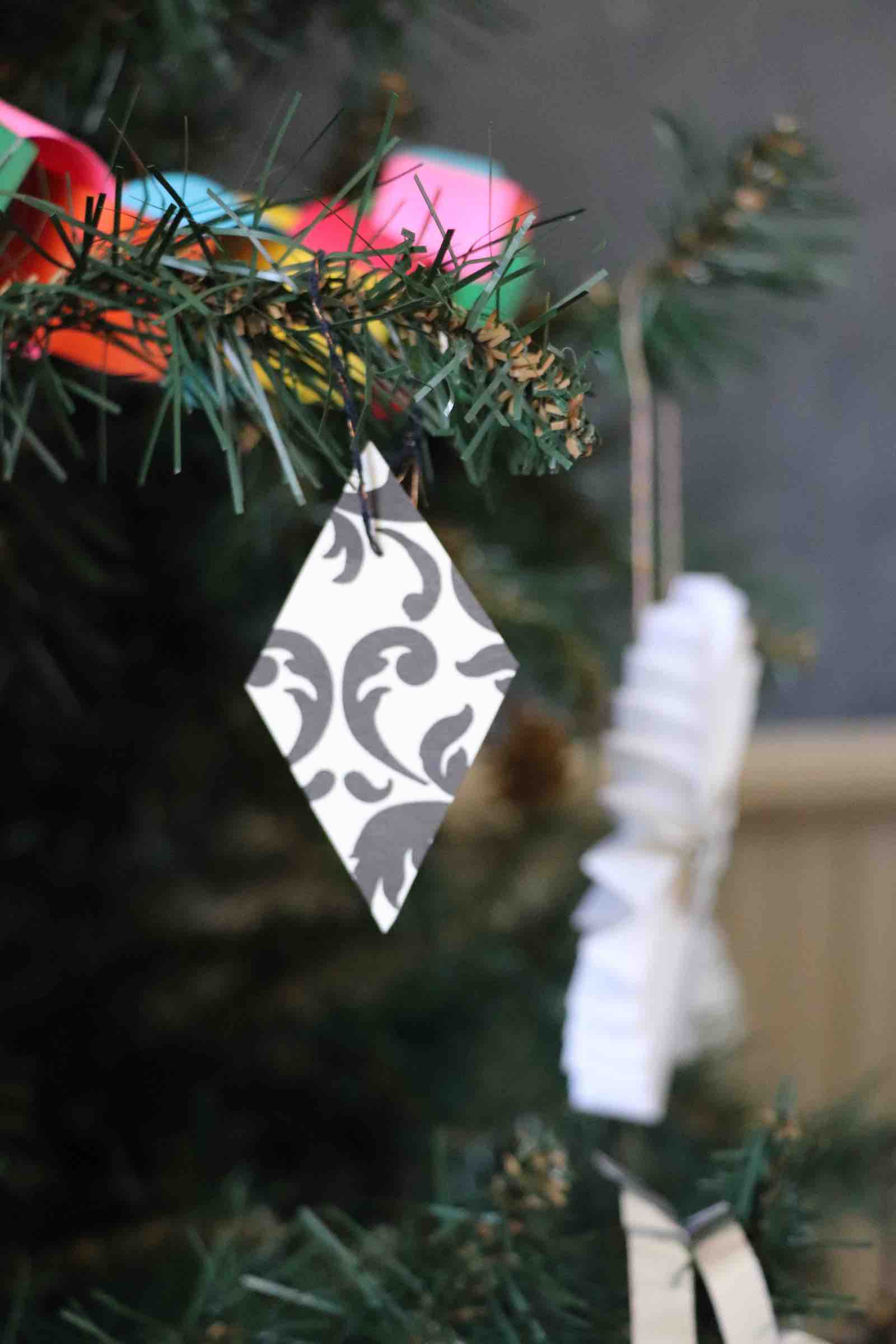 |
Classroom Decorations
Many classrooms would have included a small Christmas tree in December and the students would all work together to decorate it. Do you have any decorations in your classroom or school?
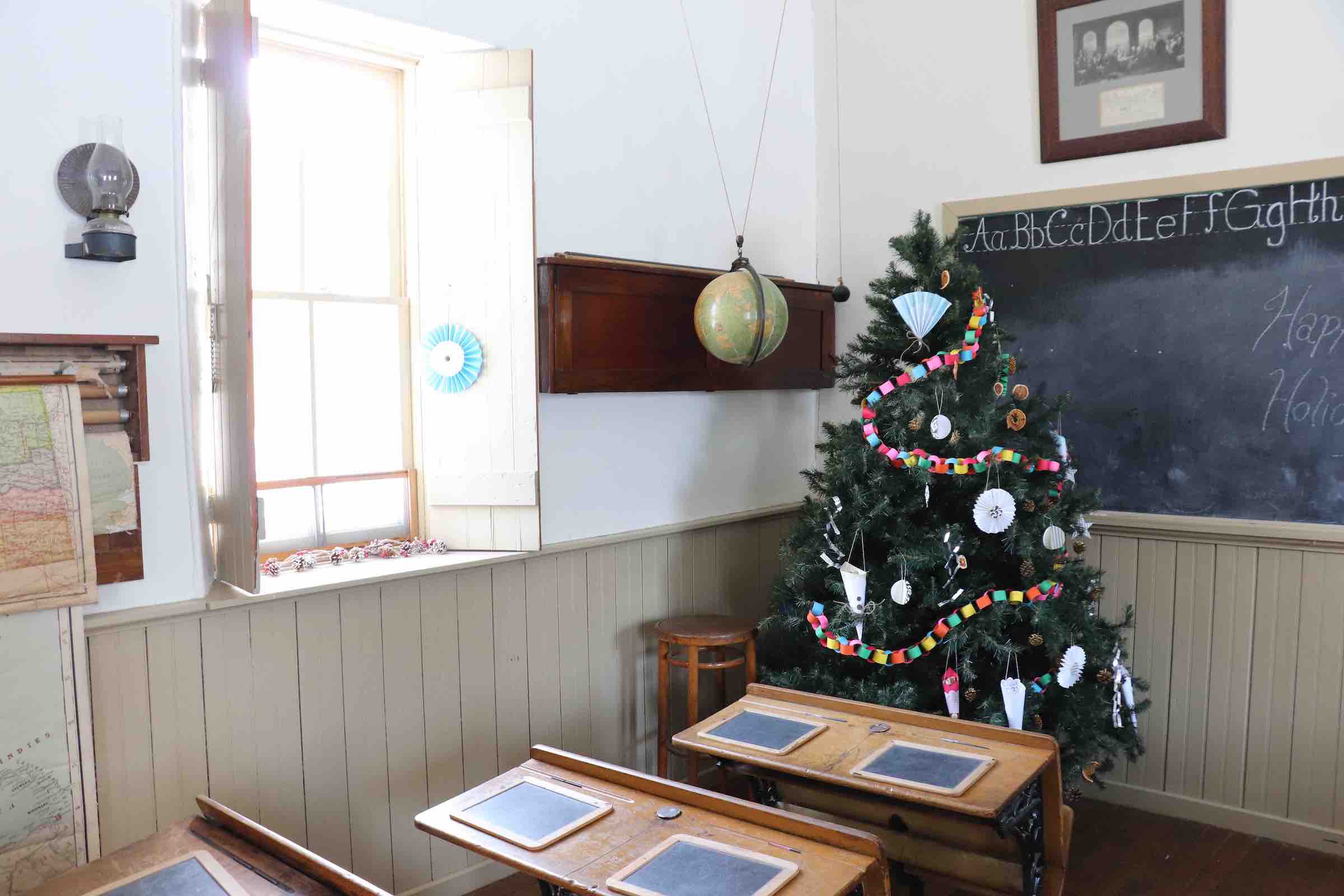 |
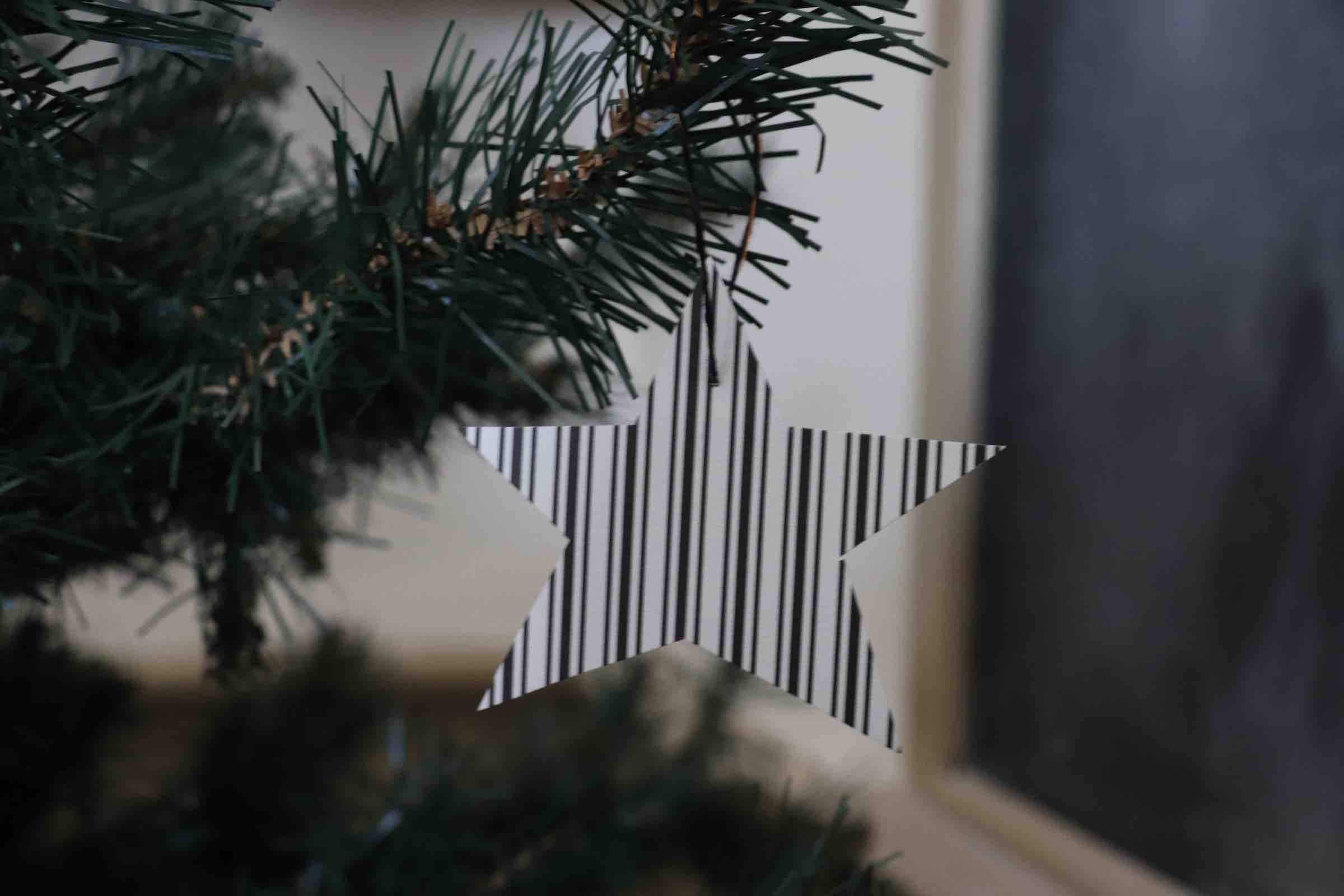 |
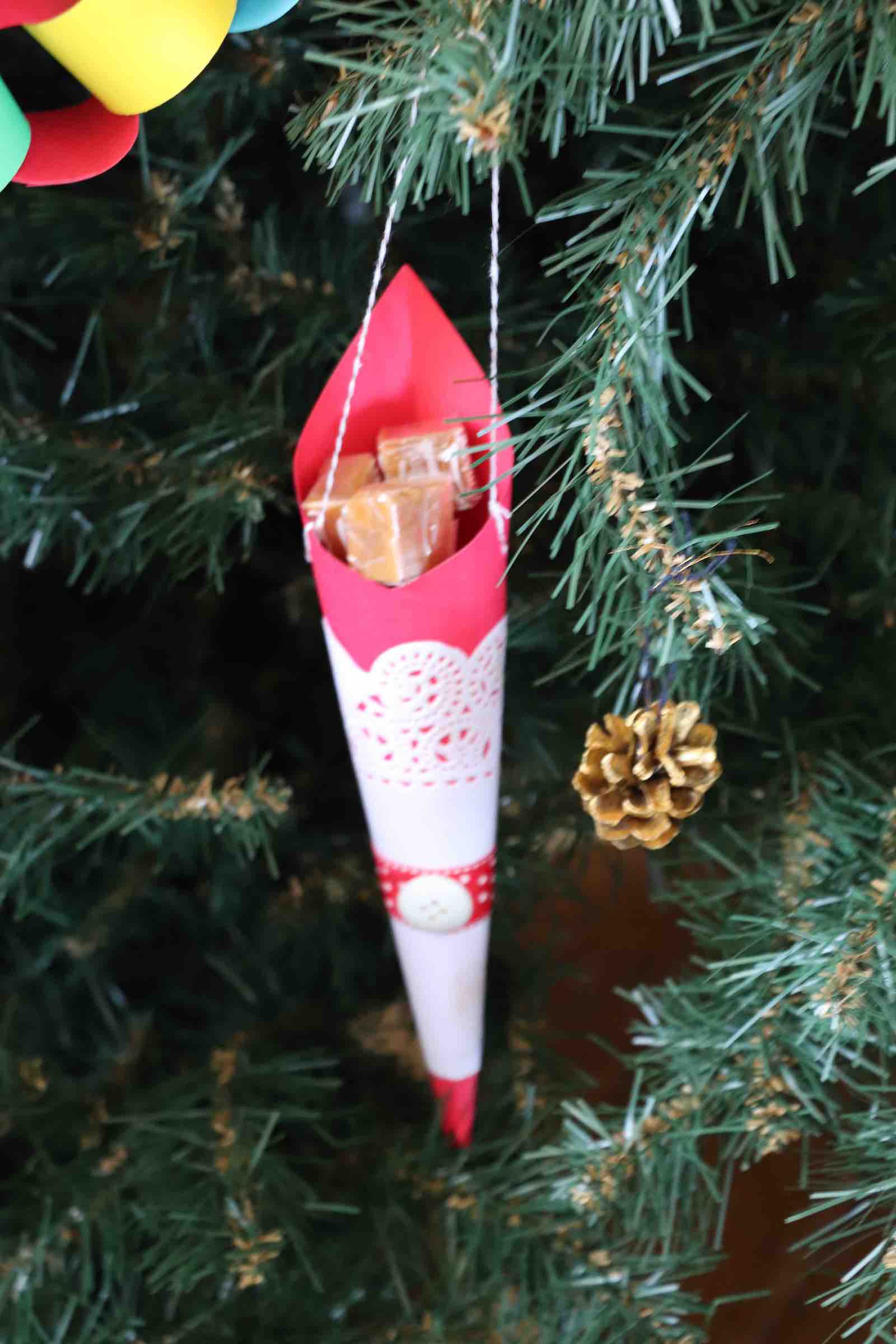 |
Students would take part in making small paper decorations for the tree. These would have been cut-out shapes, paper chains, cornucopias, and medallions. Follow the instructions provided to make your own Victorian decorations!
Cornucopias were traditional Victorian decorations that were hung on the tree. They were made from a decorated paper cone and filled with sweets. Would you like to make a cornucopia? Here you will find instructions and examples to make a cornucopia for any holiday or occasion!
Medallions were another popular decoration made by folding paper into a circular fan so it could also be hung on the tree or around the room. Would you like to make a medallion? Here you will find instructions and photos to make a medallion for any holiday!
Paper chains were a favourite children’s crafts at any time of the year, especially around Christmas because they could be wrapped around the tree as garland or hung on the wall. Students would have made them with scraps of paper from newspapers, magazines, or leftover pieces from wrapped items. Follow the instructions and photos provided below to make a colourful paper chain for any occasion!
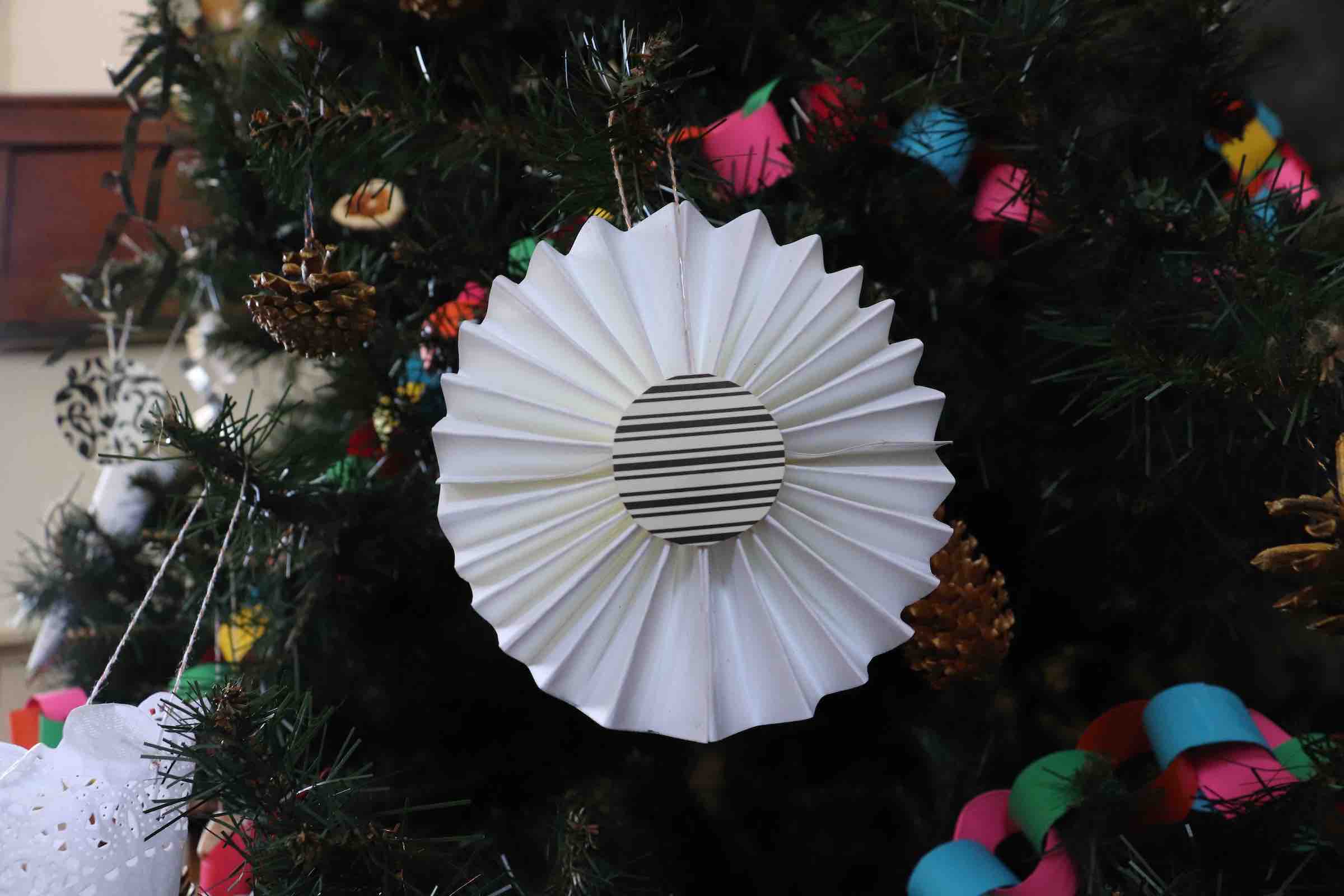 |
 |
 |
It was also common to bring some evergreen boughs and branches inside the classroom to decorate for the holidays. Pinecones and nuts were also hung on the tree and were sometimes painted in gold.
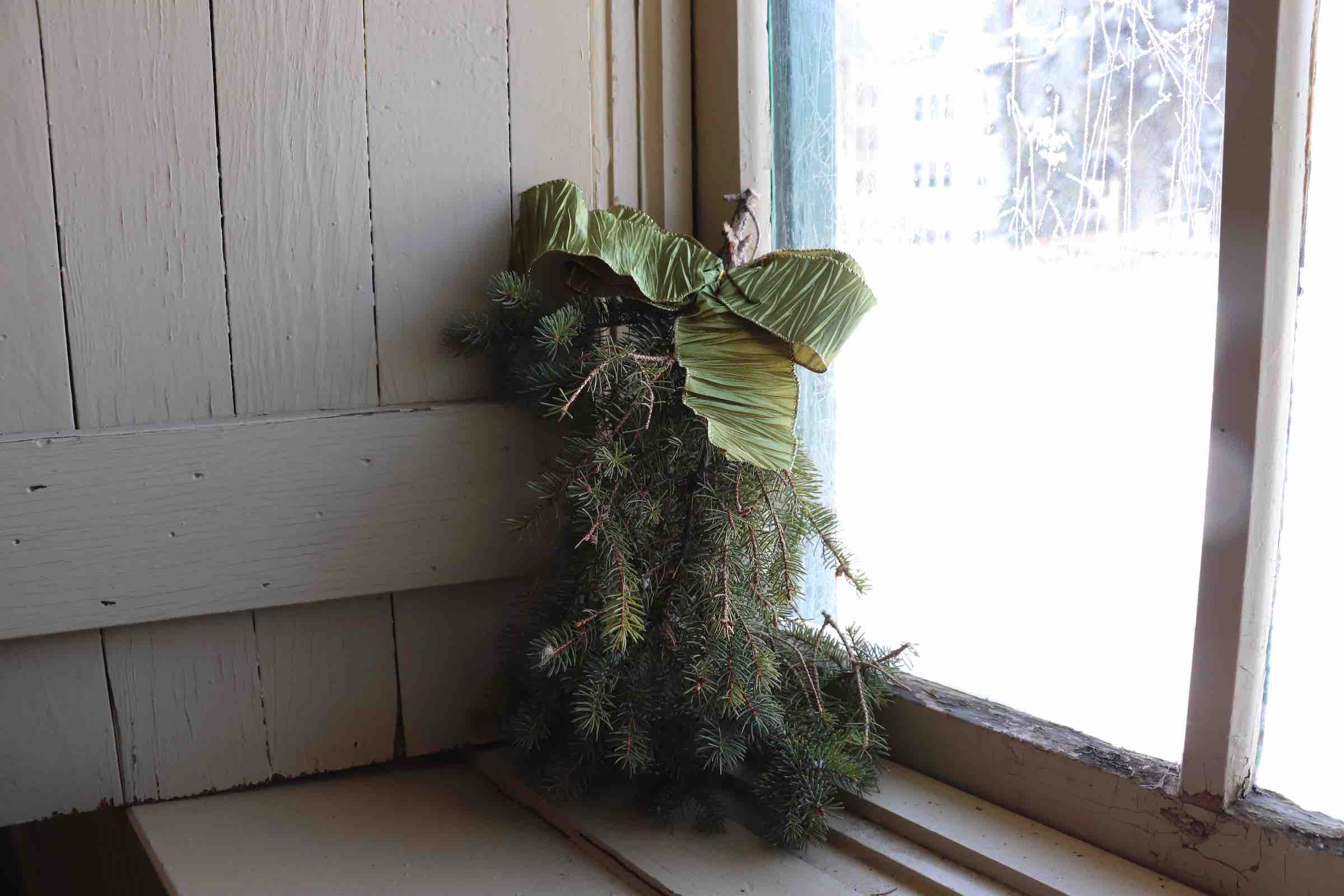 |
 |
Caroling
During the Victorian era, many schoolhouses were the centre of the community during Christmastime. Students would host Christmas concerts and invite community members to attend.
 |
 |
Caroling is the tradition of singing Christmas songs and has been popular for hundreds of years. Caroling was usually done in groups, either as a classroom or with family and friends. It was popular for groups to travel down streets to each of their neighbour’s houses and sing in exchange for food, hot apple cider, or wassail punch: a hot, spiced drink.
Every family had their own recipe for wassail punch, which was placed in a communal wassail bowl before serving to carolers and neighbours. This traditional practice connected communities and families.
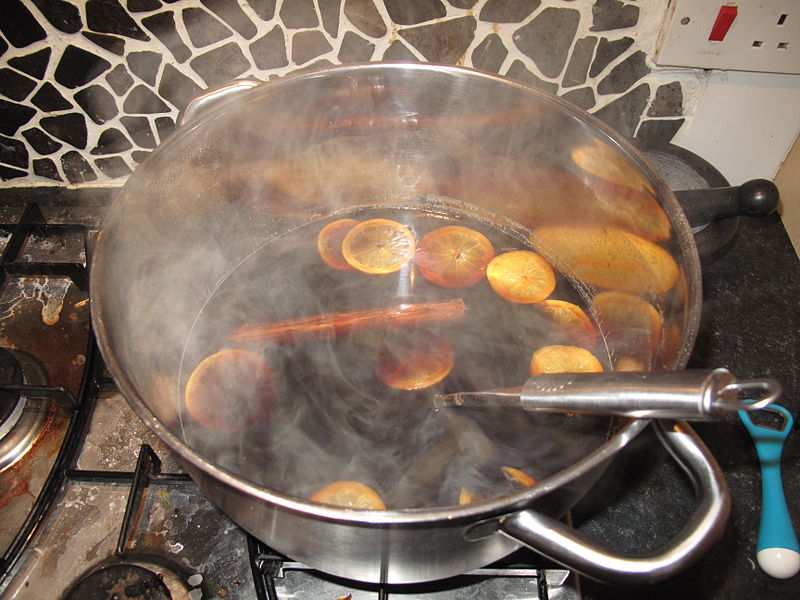 |
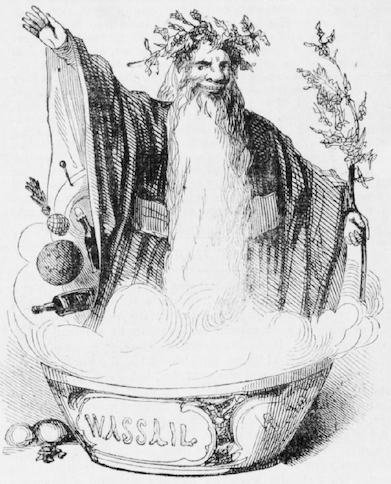 |
Many of the carols that you may recognize were either written in or translated from other languages during the Victorian era. Some of these new or translated songs were O Christmas Tree, Jingle Bells, Deck the Halls, O Holy Night, and The Holly and Ivy. Do you recognize any of them?
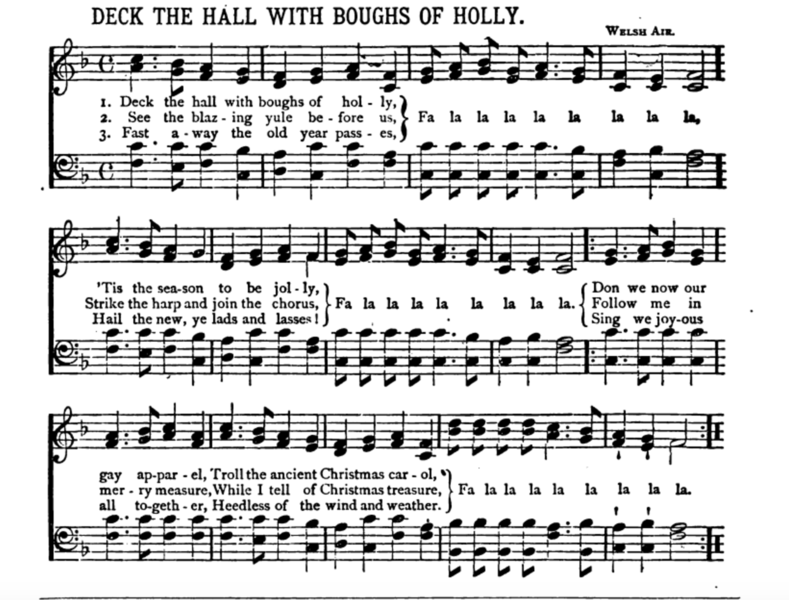 |
 |
Download Printable Original Victorian Christmas Carol Lyric Sheets:
Traditions at Home
Decorating at Home
Before the Victorian era, Christmas decorations were not very popular and families who did decorate, placed only a few decorations indoors. In the Victorian era, decorating grew in popularity and many families started to decorate with store-bought decorations, handmade ornaments, and natural decorations.
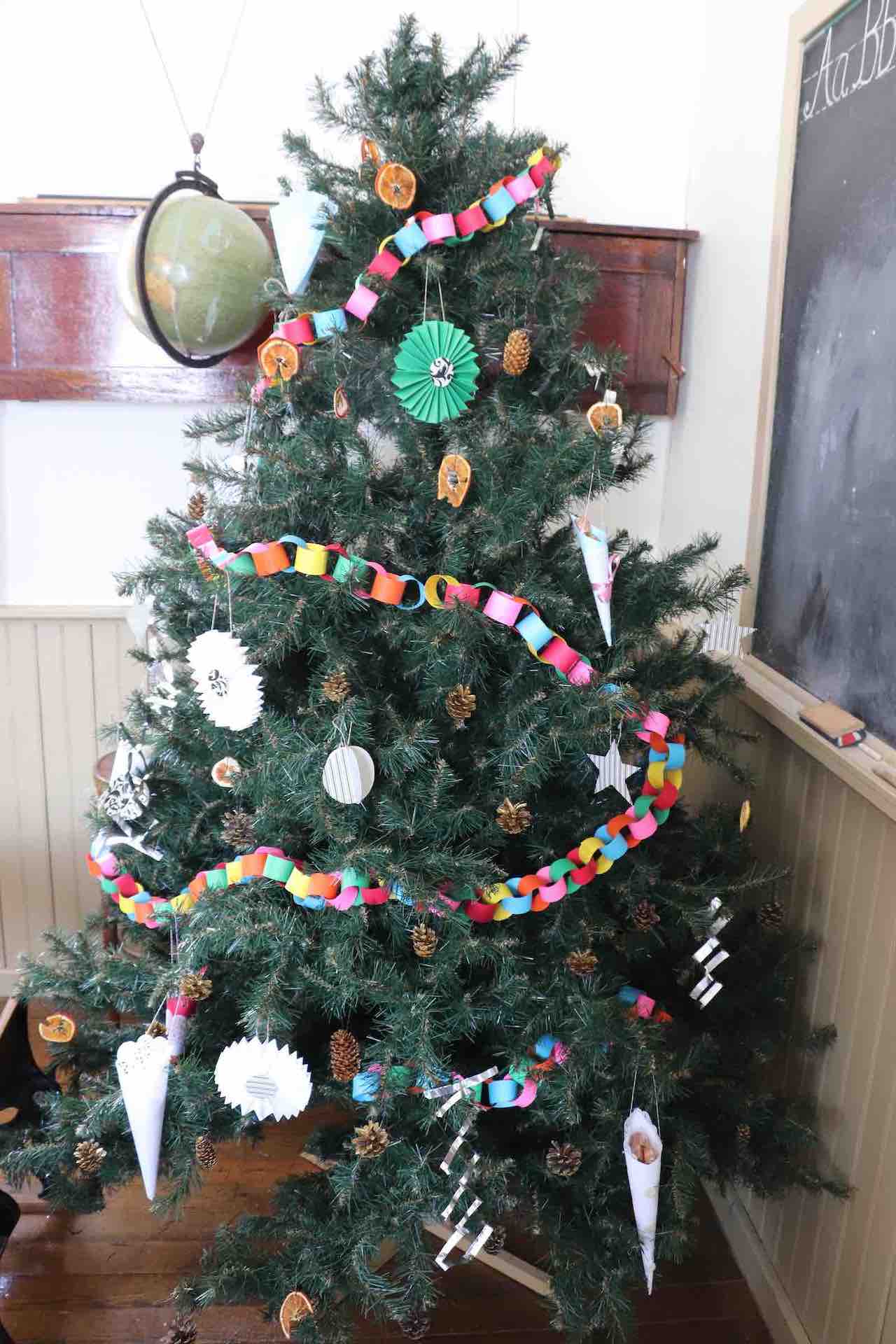 |
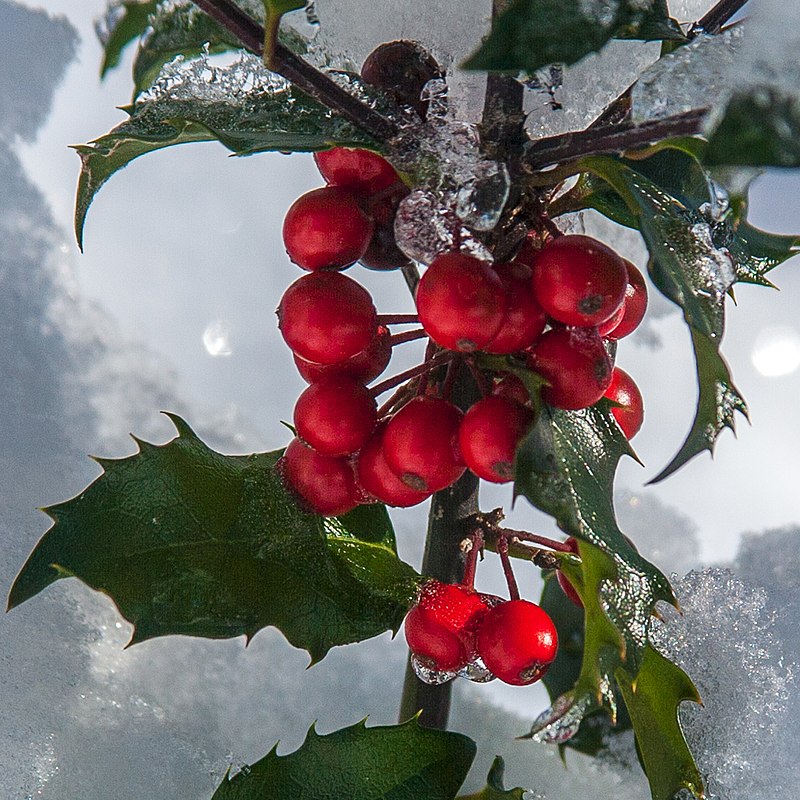 |
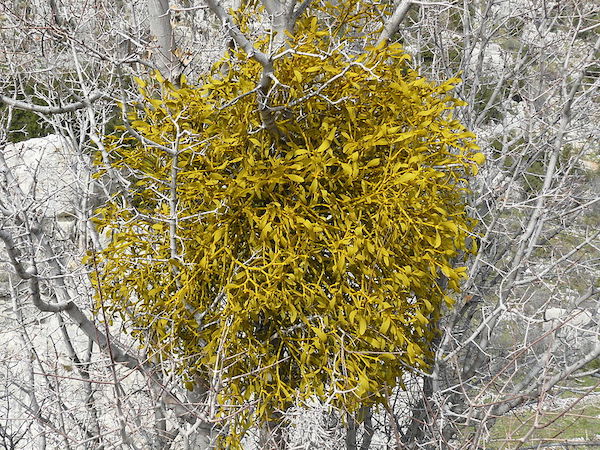 |
Holly, ivy, and mistletoe were very common natural household decorations that had been used for hundreds of years before the Victorian era. Other popular decorations taken from nature included evergreen wreaths and branches of greenery placed throughout the house.
Making decorations was a social activity for friends and family. While chatting, kids would make paper crafts while adults usually created more difficult ornaments, such as silver-coloured balls with gold shapes pasted on.
Making decorations out of fragrant food items was very common. Nuts and cinnamon sticks could be painted in gold and hung from the tree. Candies and cakes would also hang from the tree as decorations that could be eaten later. Garland made from dried orange slices and popcorn would be hung up around the house or wrapped around the tree.
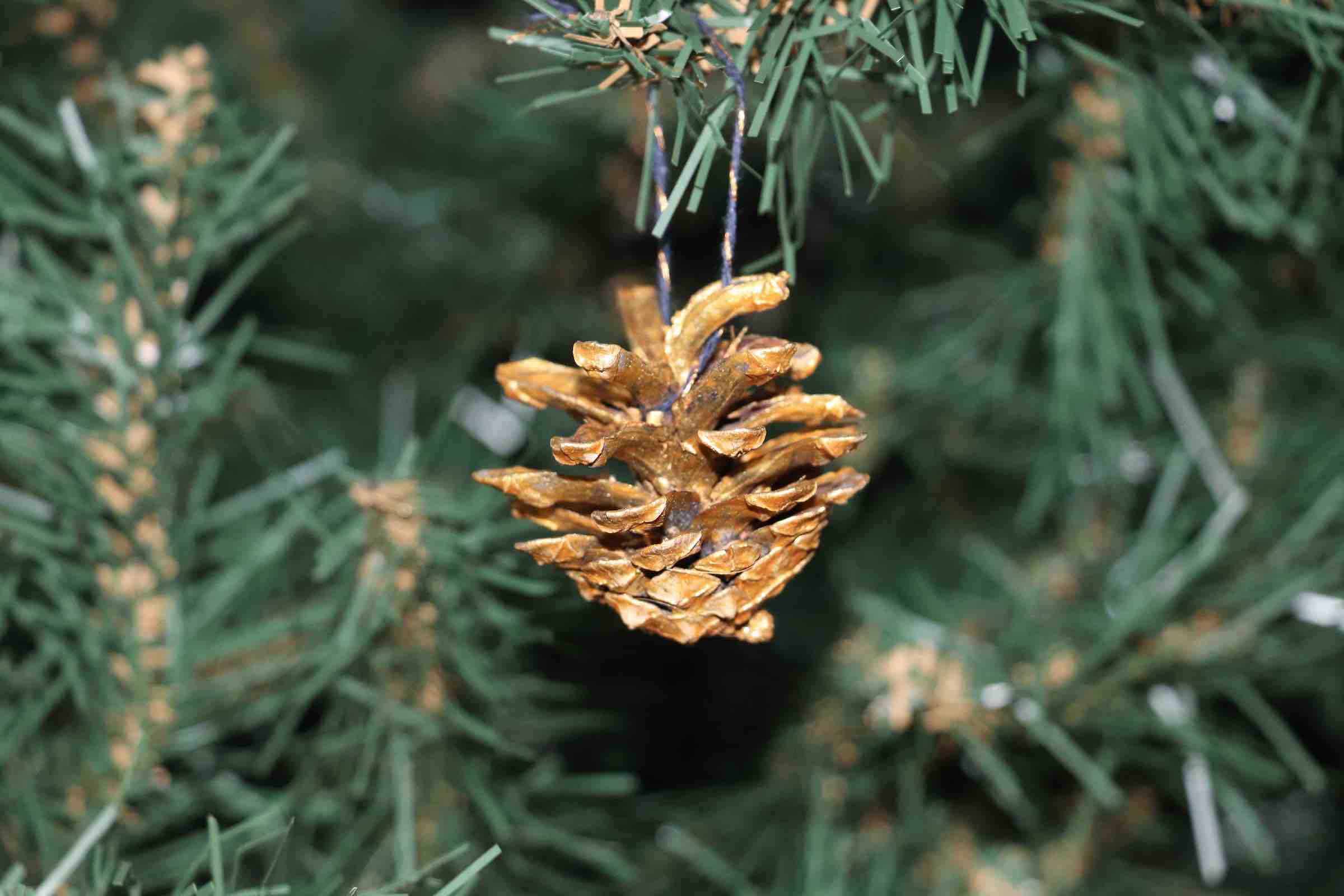 |
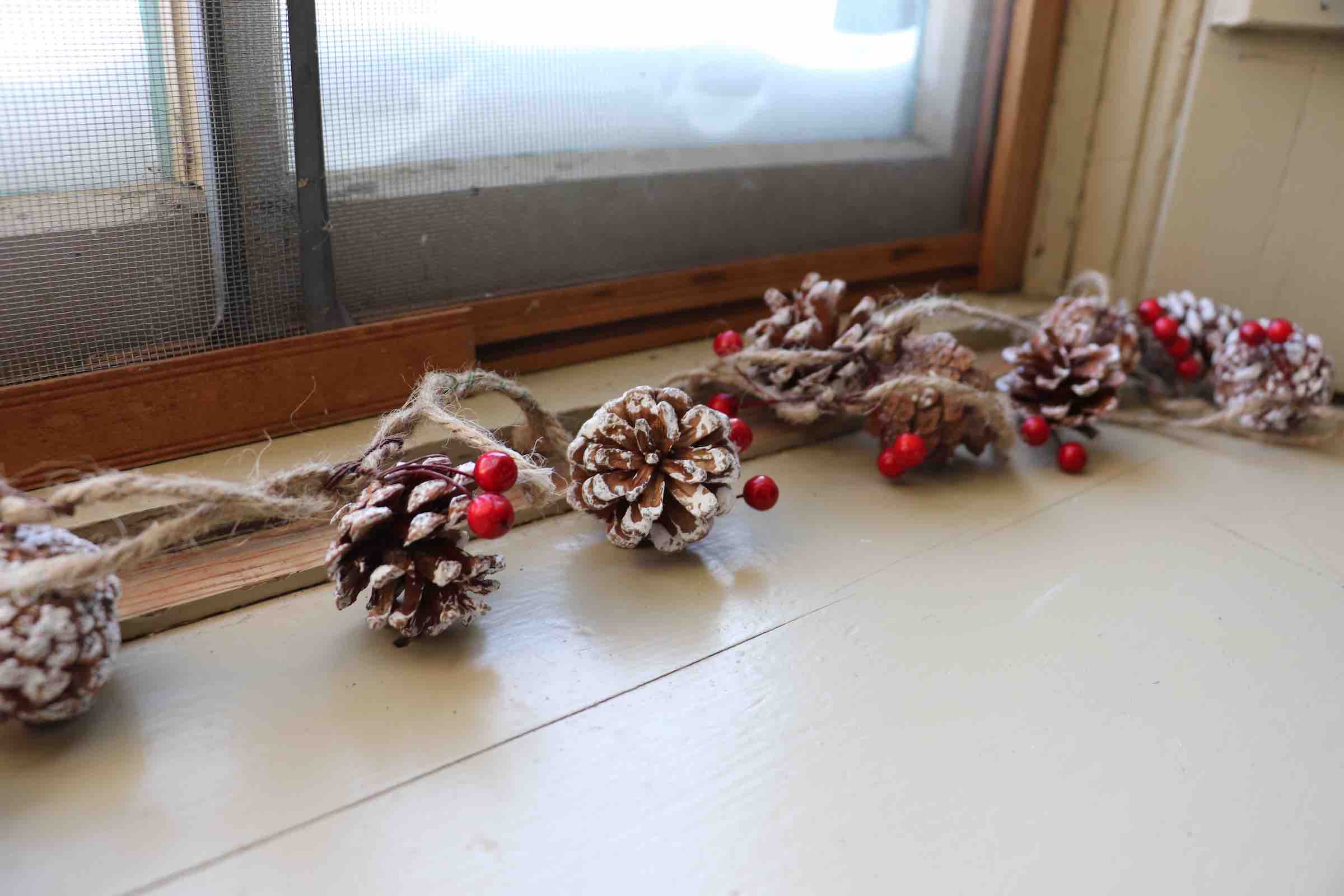 |
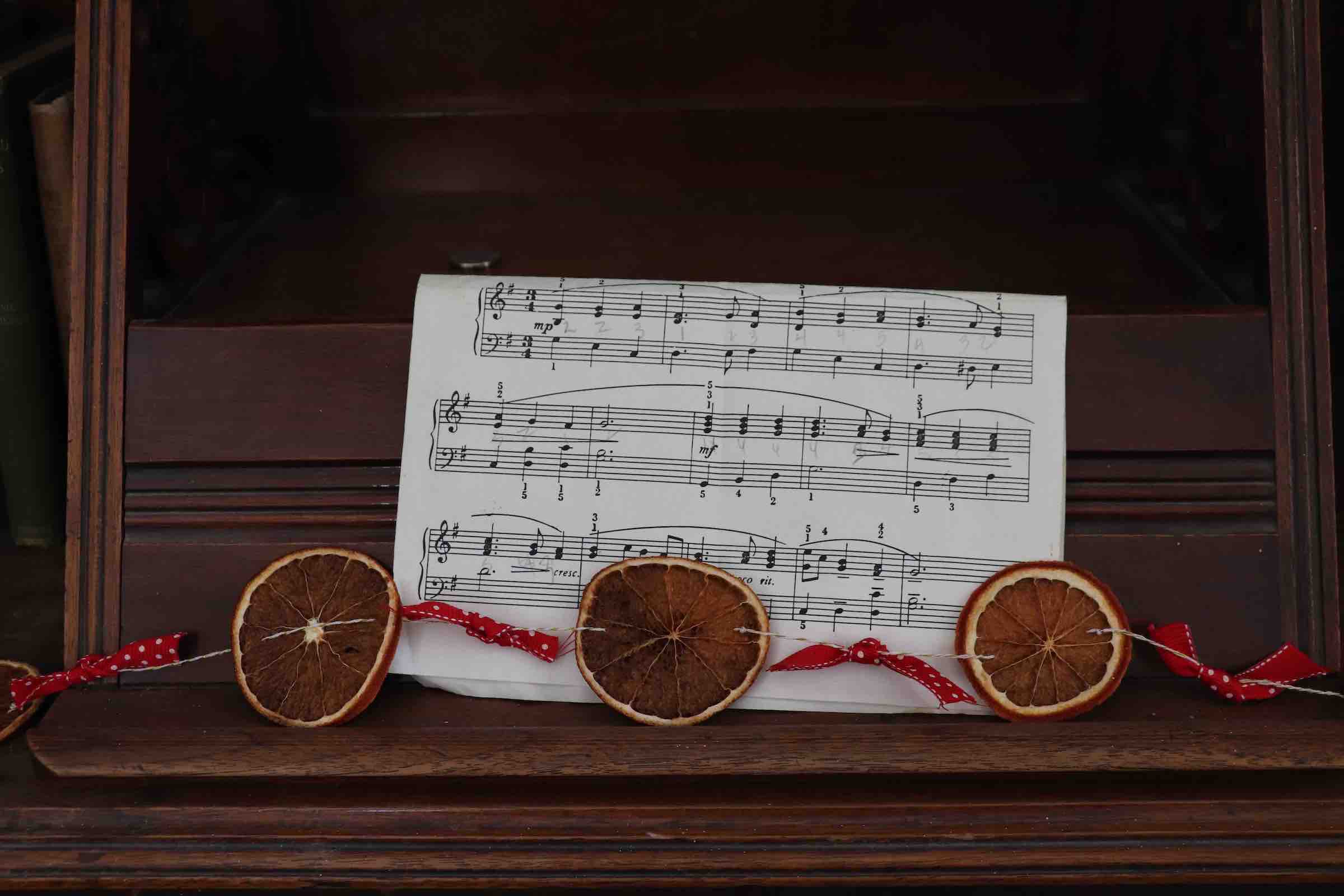 |
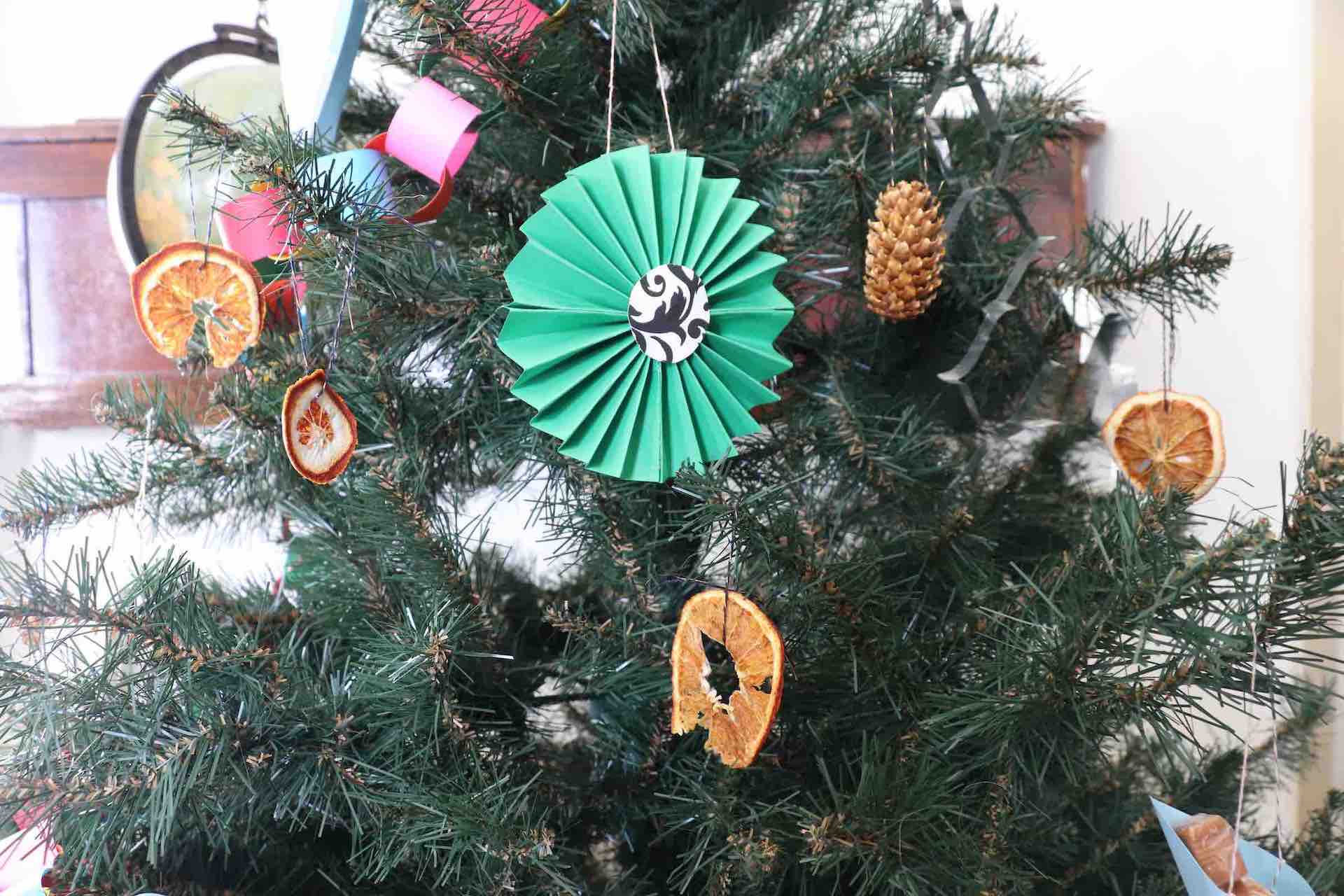 |
Do you put fragile or breakable ornaments on your tree? These are usually blown-glass ornaments and they have been popular since the Victorian era. One of the most popular blown-glass ornaments was the glass pickle that would be hidden in the tree for guests to find. Whoever found the glass pickle first won a prize!
Ladies’ magazines would often have a page or two with paper ornaments to cut out and colour before hanging on the tree.
Foil decorations were popular and easy for kids to create. Throughout the year families would collect the foil from cream cheese packages, chocolate, candies, tobacco, and tea. The foil could be turned into beautiful shining ornaments that reflected light. Would you like to make a foil decoration? Here are the instructions and photos to make one!
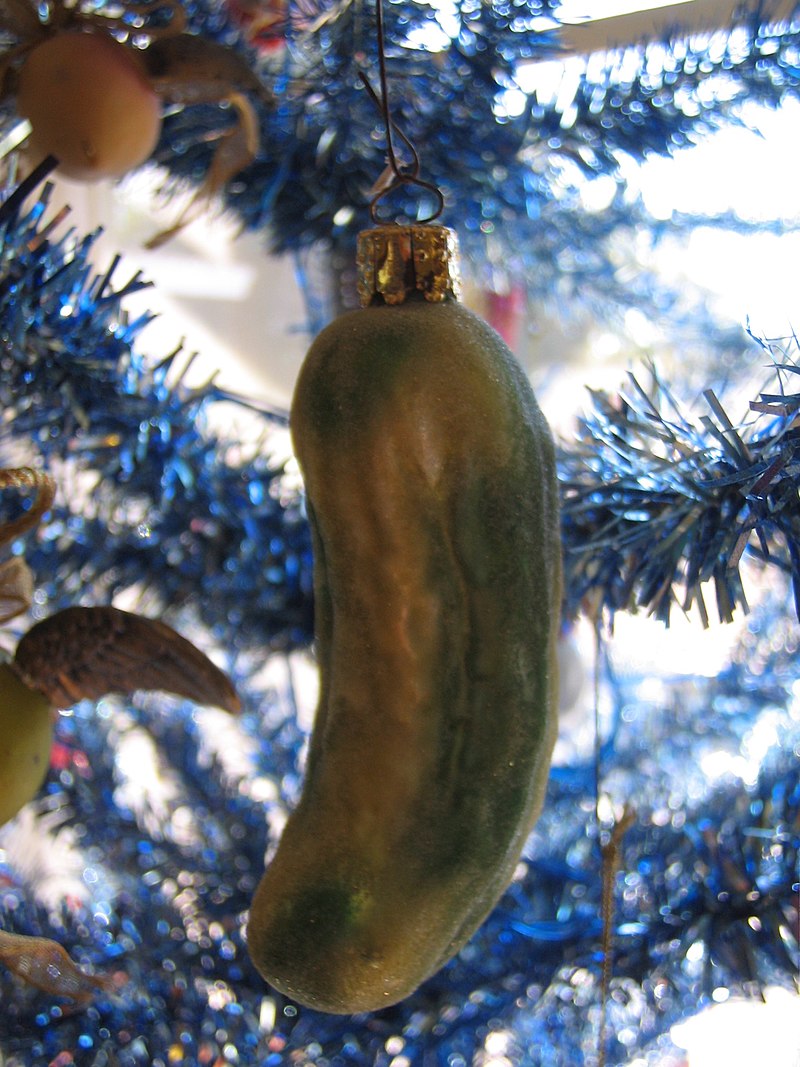 |
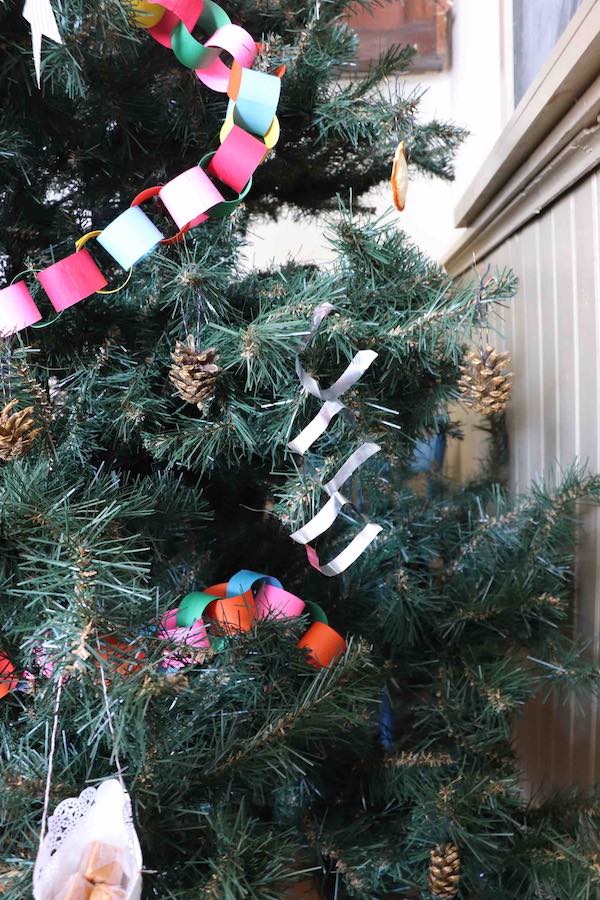 |
DID YOU KNOW? The tradition of kissing under the mistletoe is linked to Norse mythology [A Norse myth is a believed story belonging to Scandinavian people] where it was said that the white berries represent love. One myth states that former enemies used to kiss beneath the mistletoe to prove that they had made up and had become friends.
DID YOU KNOW? Red holly berries were a very popular symbol of Christmas cheer but not every family was able to find some, real or fake. Instead, they used to dip green peas in melted red wax to make imitation holly berries!
The Christmas Tree
Do you set up a Christmas tree at your house? This is an old German tradition that was brought to England and Canada during the Victorian era.
The tradition of setting up an evergreen tree indoors and decorating it became popular in the 19th Century, especially after 1848, when Queen Victoria and her family were pictured in newspapers decorating their tree together.
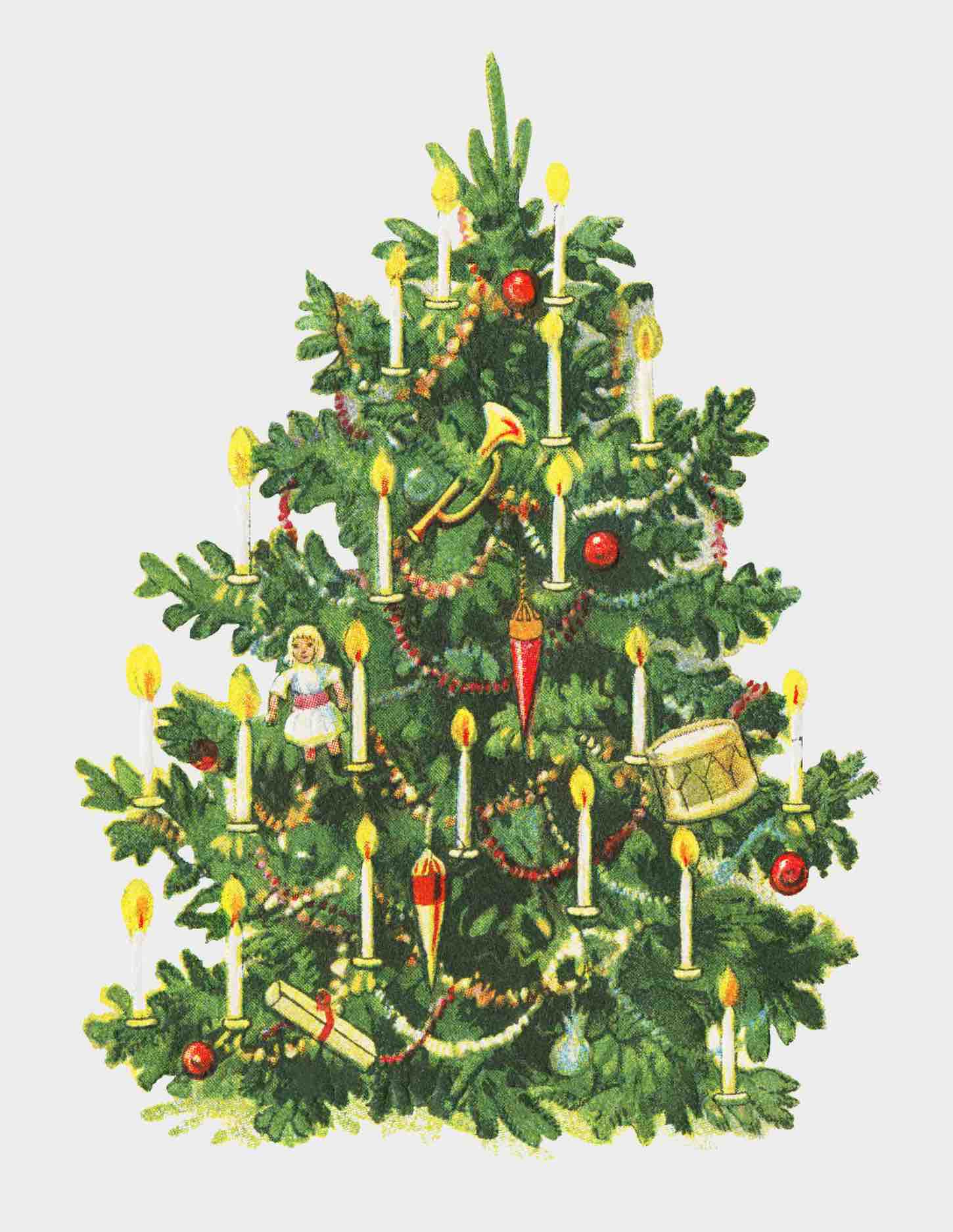 |
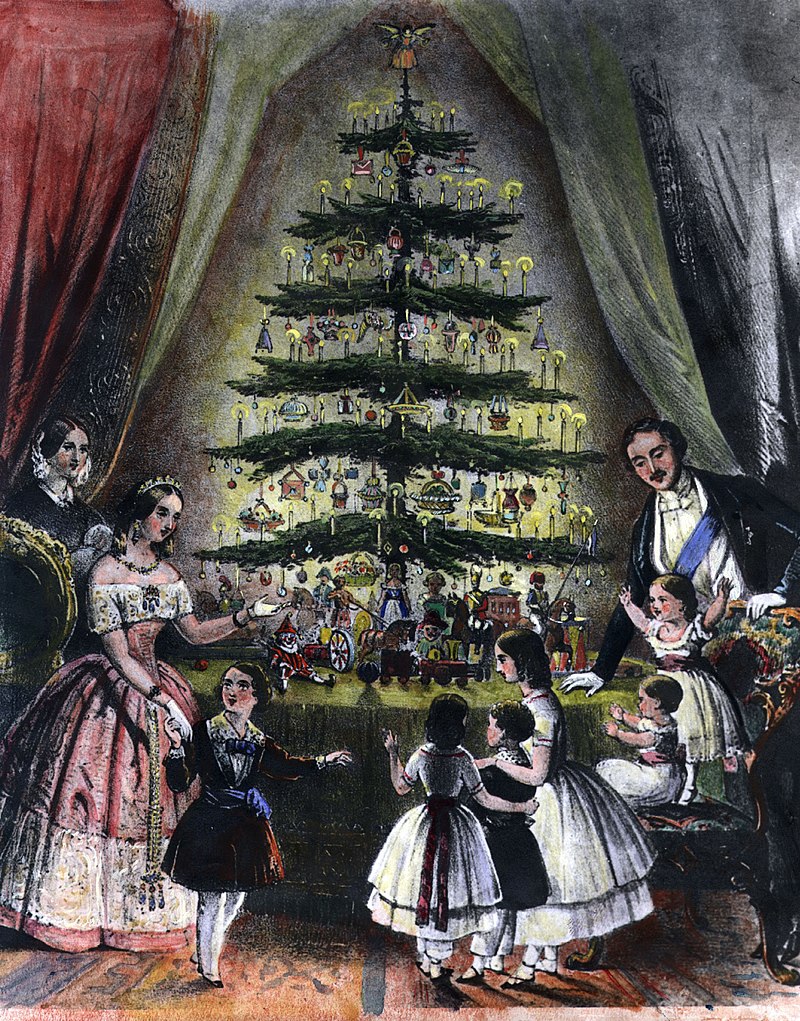 |
A Christmas tree is centered on family. Setting up the tree and decorating as a family is very important to the tradition of having a Christmas tree. During Victorian times, the tree was usually placed in the parlour, the living room, or some type of family gathering space where it would always been seen. Where does your family place your Christmas tree?
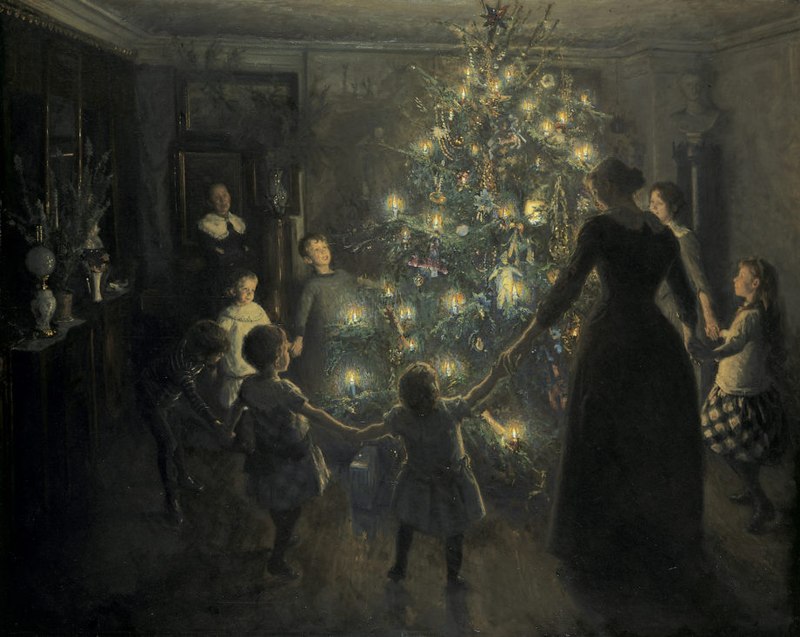 |
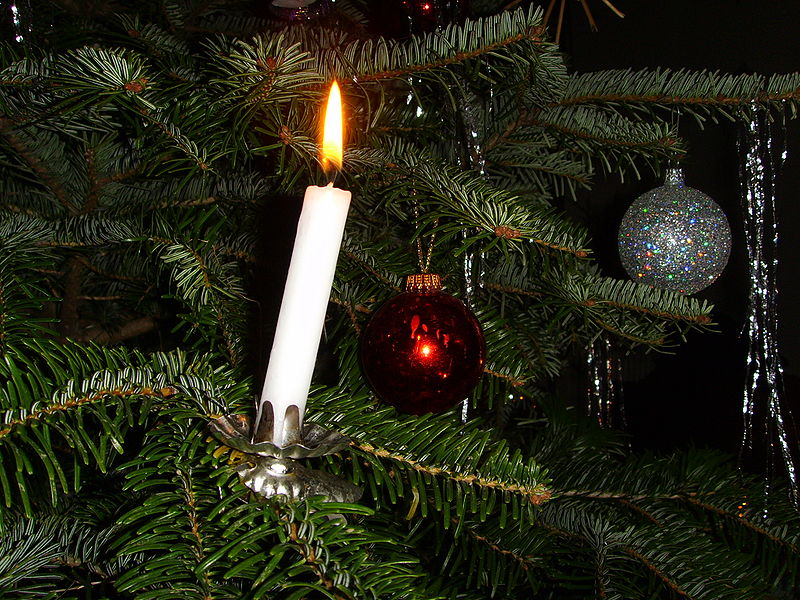 |
DID YOU KNOW? In the Victorian era, many families did not have electricity and electric string lights were not available until 1890. This meant that families actually placed burning candles on the tree branches. This was a serious fire hazard!
Cards
Have you or any of your family members ever sent Christmas cards to friends and family? Did you buy the cards, or did you make them yourself?
Christmas cards were invented during the Victorian era, by a man named Henry Cole who asked an artist to design a special holiday card that expressed the importance of charity at Christmas. At first, the tradition of buying and sending cards was not popular because the cards were too expensive.
When a new printing process was invented that allowed many cards to be printed at one time, card prices became cheaper and sending out Christmas cards quickly became a popular tradition.
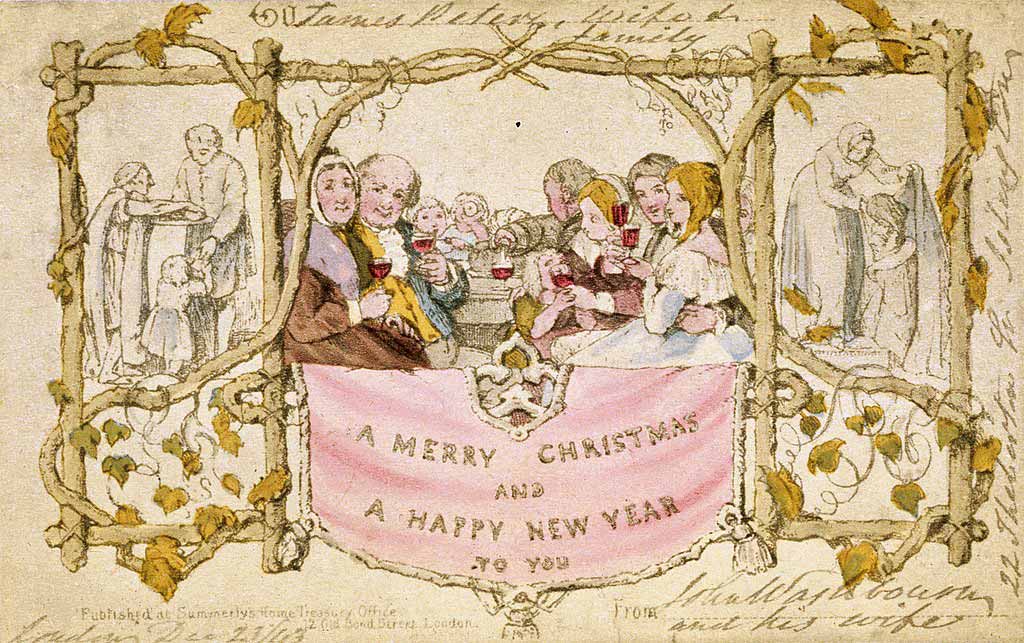 |
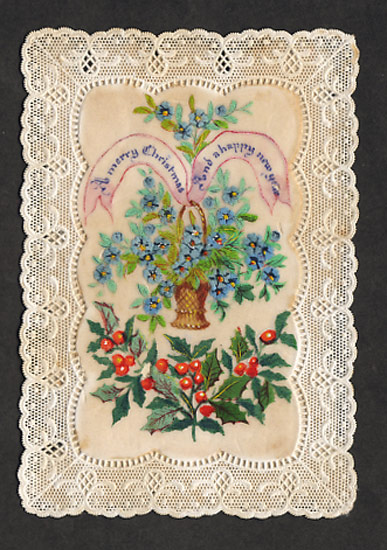 |
Many Victorian Christmas card illustrations look similar to those you see today; but, many of them do not seem to fit a Christmas theme at all! Cards that had funny, confusing, and even scary pictures on the front were common at Christmastime and people would send them to their friends.
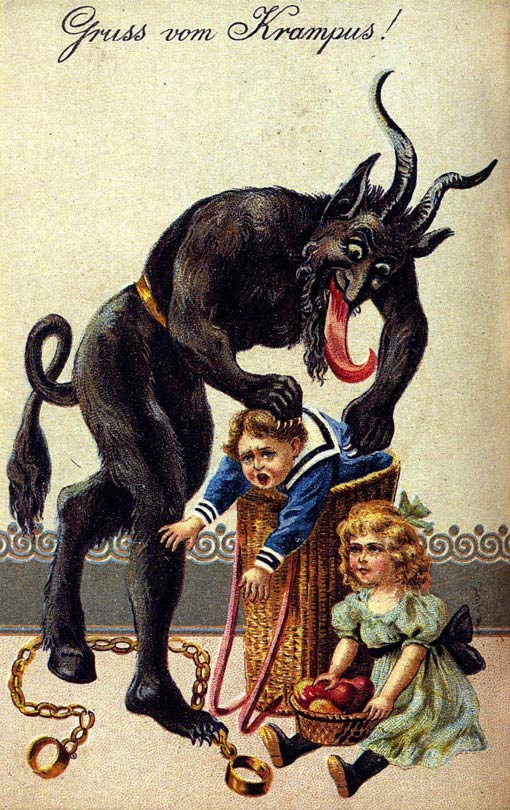 |
 |
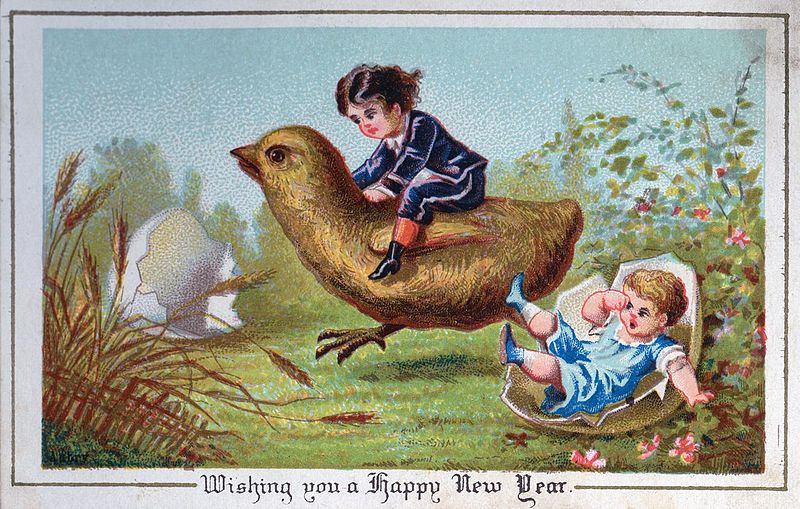 |
Would you like to make a Christmas card (or many of them) to send to your family and friends? Here you will find instructions, examples, and Victorian illustrations to print out so you and your family can make your own Christmas cards!
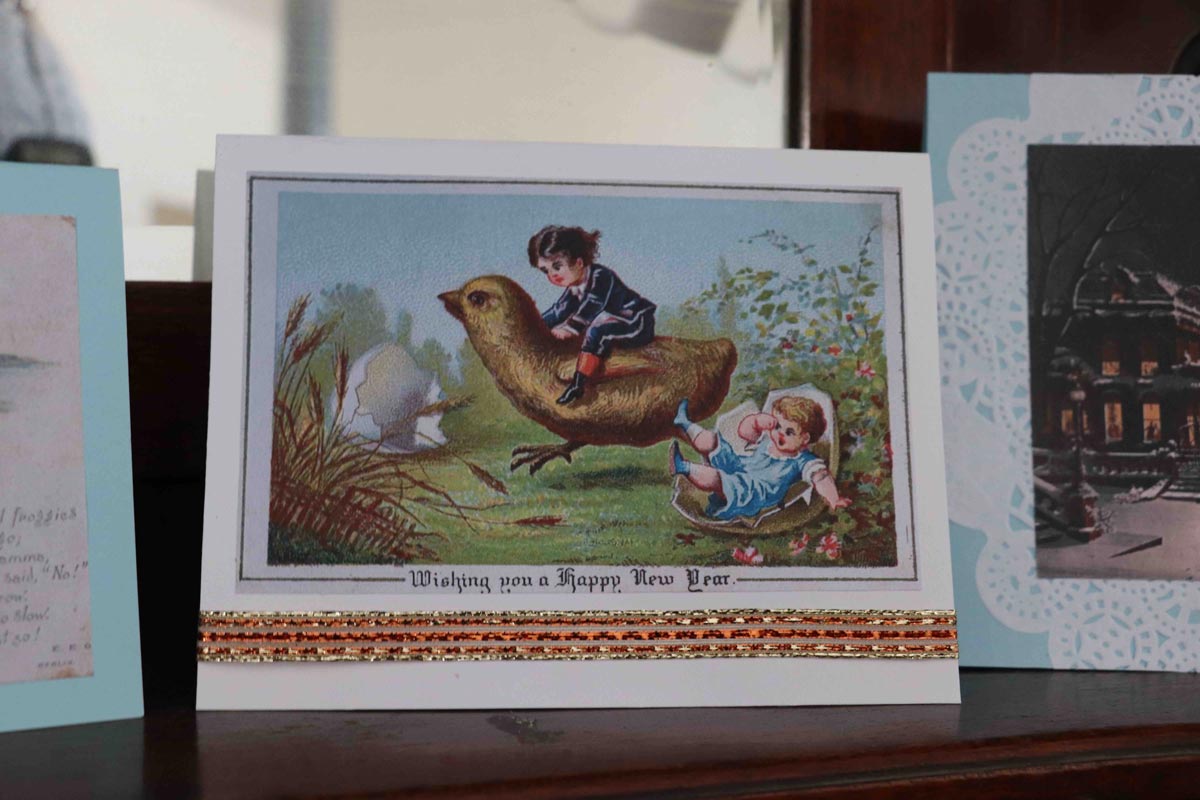 |
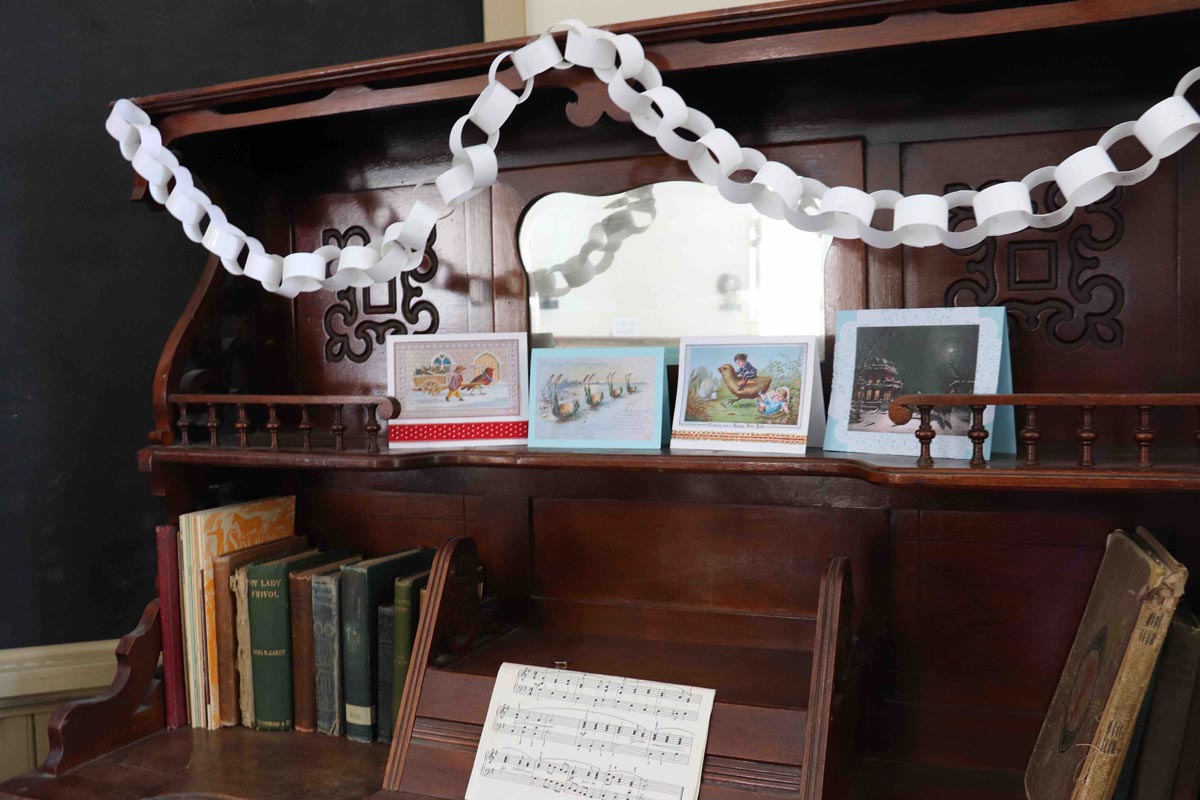 |
Christmas Crackers
Have you ever opened a Christmas cracker during the holidays? They are brightly coloured tubes that are pulled apart to reveal small trinkets, paper crowns and jokes! Best of all, they make a loud ‘popping’ noise when you pull them apart.
Did you know Christmas crackers were invented in the Victorian era? Tom Smith invented the first Christmas crackers, which were just coloured pieces of wrapping or foil wrapped around sweets with special messages inside. When you pulled them apart you could hear a ‘bang’ sound before the sweets spilled out. Tom added the ‘bang’ sound to the crackers because he thought it sounded like the crackle of logs on the fire, a sound he enjoyed.
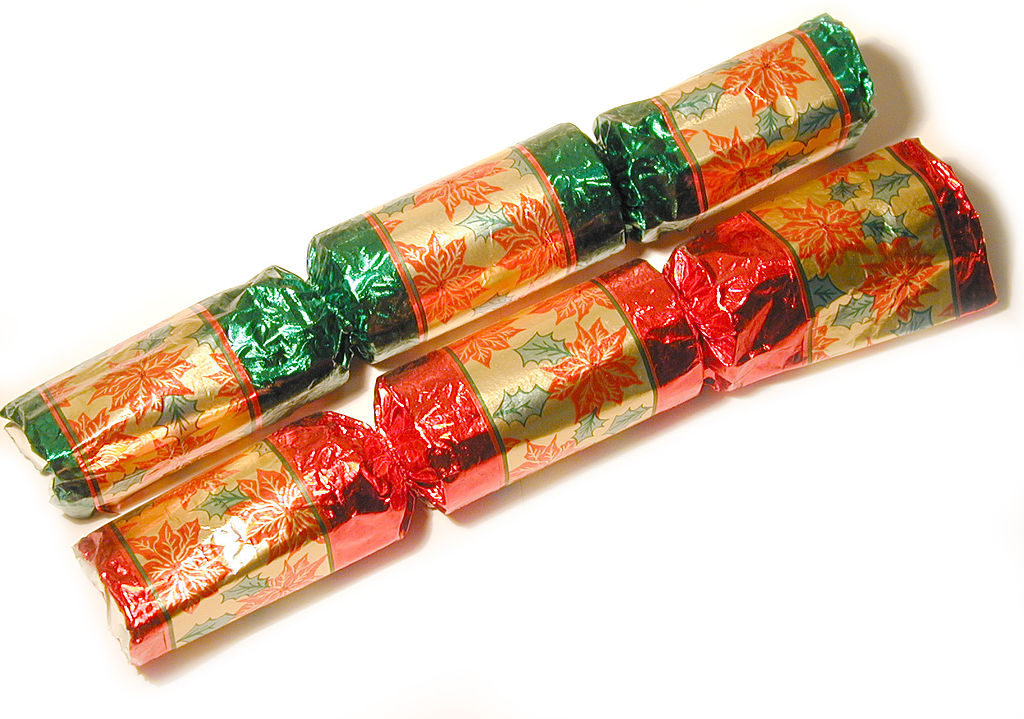 |
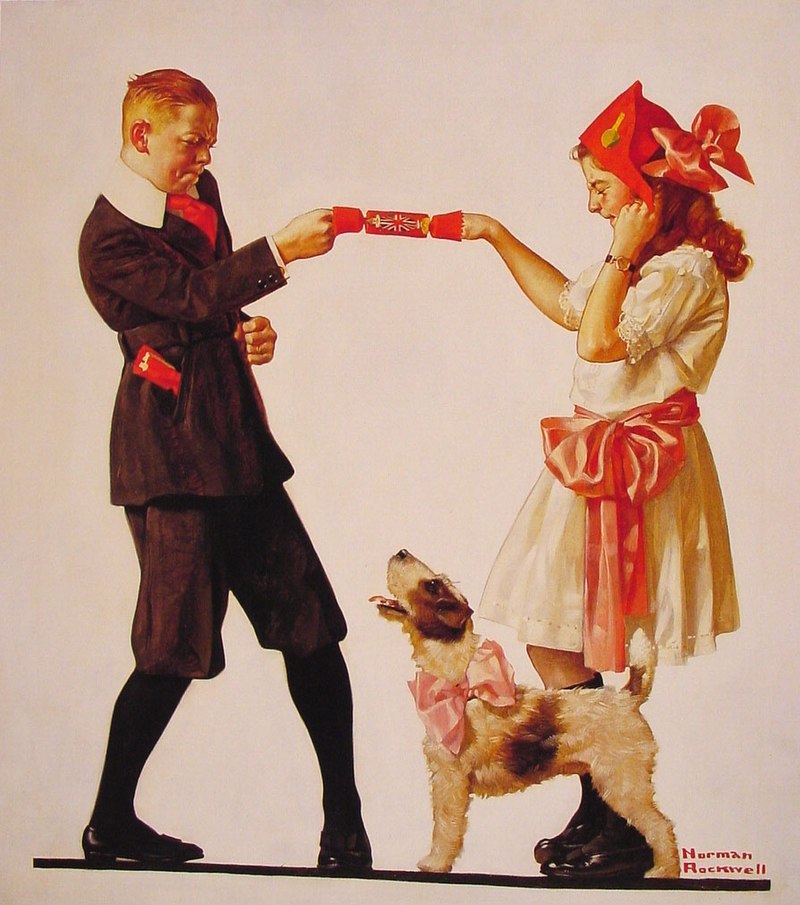 |
 |
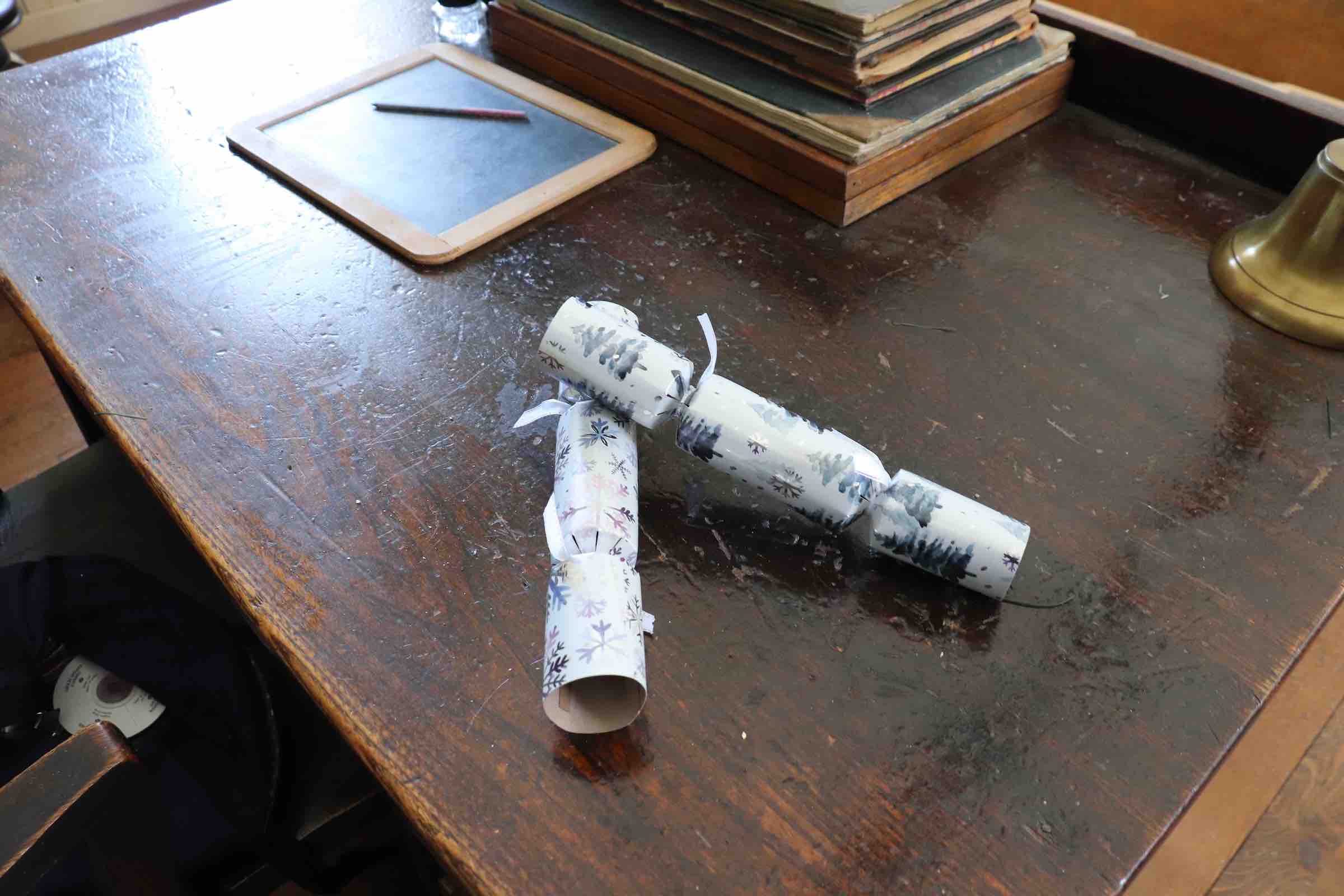 |
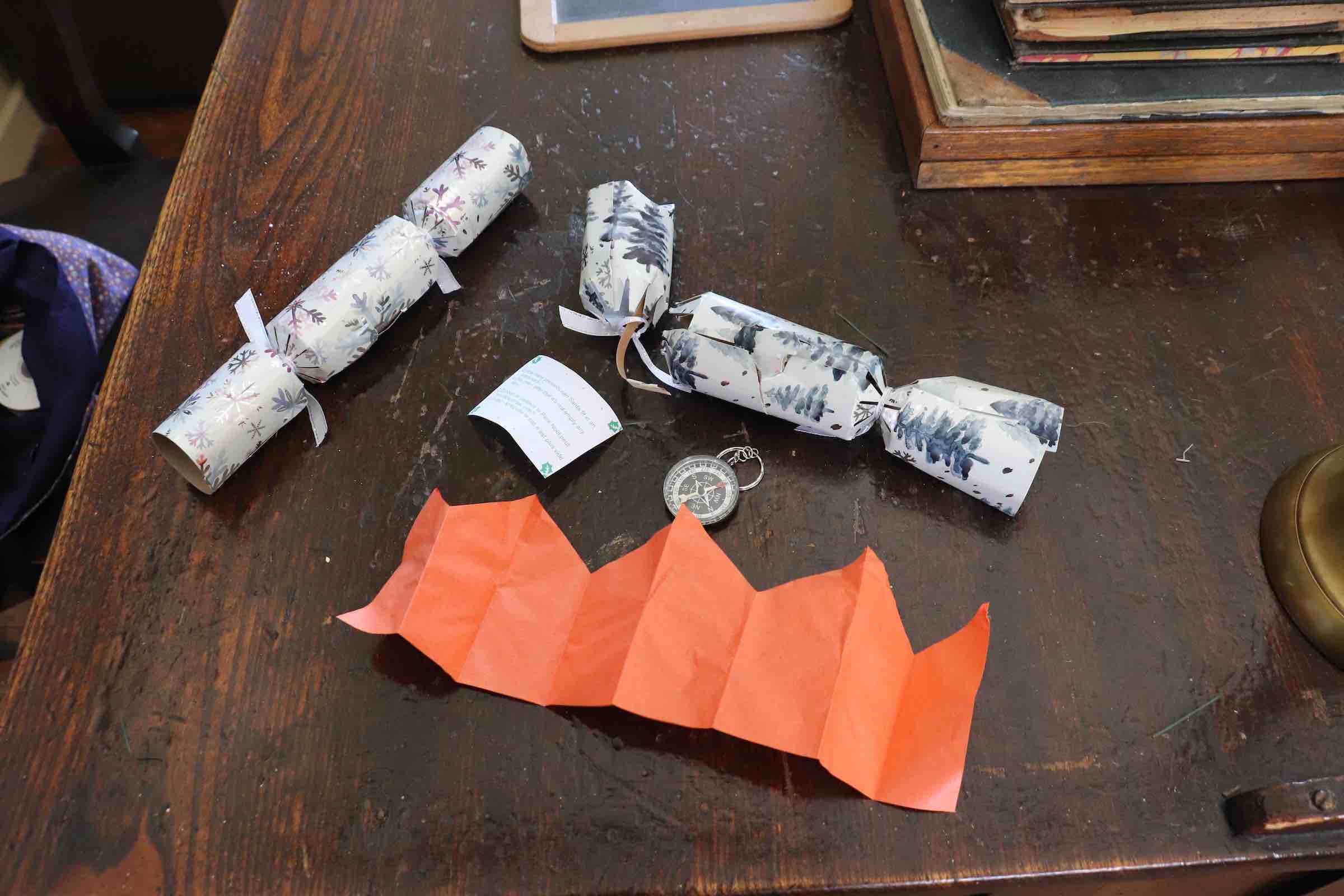 |
Food and Entertainment
Parlour Games
Have you ever played games inside your home during the holidays or at any other type of family and friend gathering? If you have, you may have played some parlour games!
Parlour games were popular forms of entertainment at any Victorian social gathering, especially on Christmas Eve and Christmas Day! Everyone would gather in the parlour (what we now call the living or the sitting room) and play games.
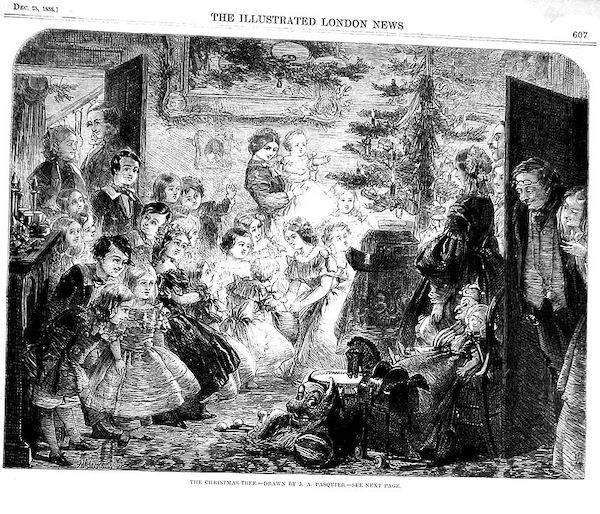 |
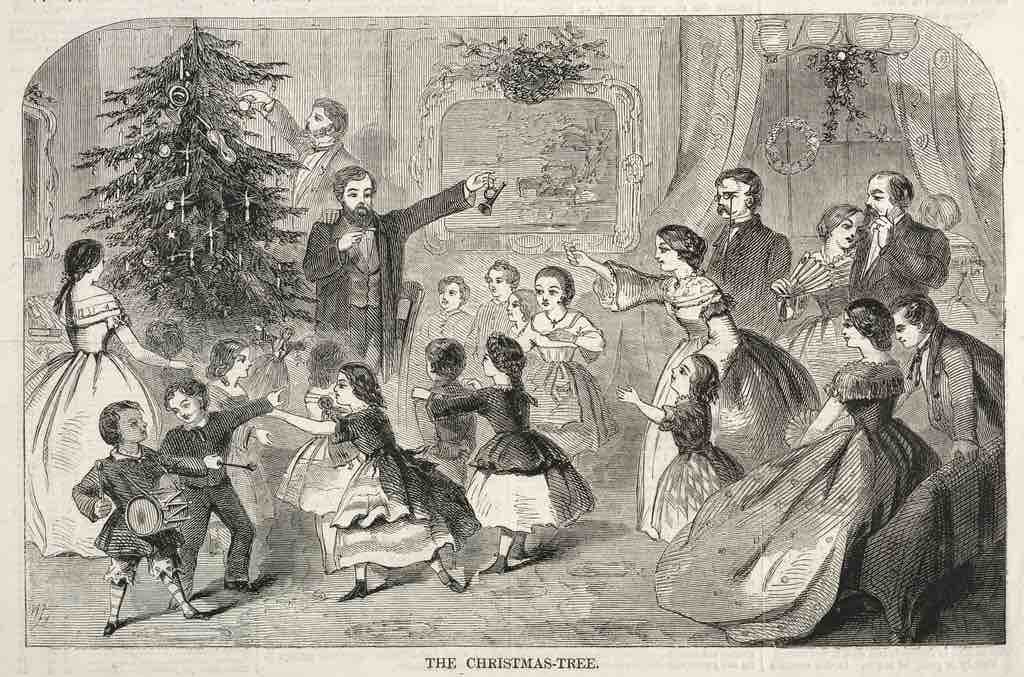 |
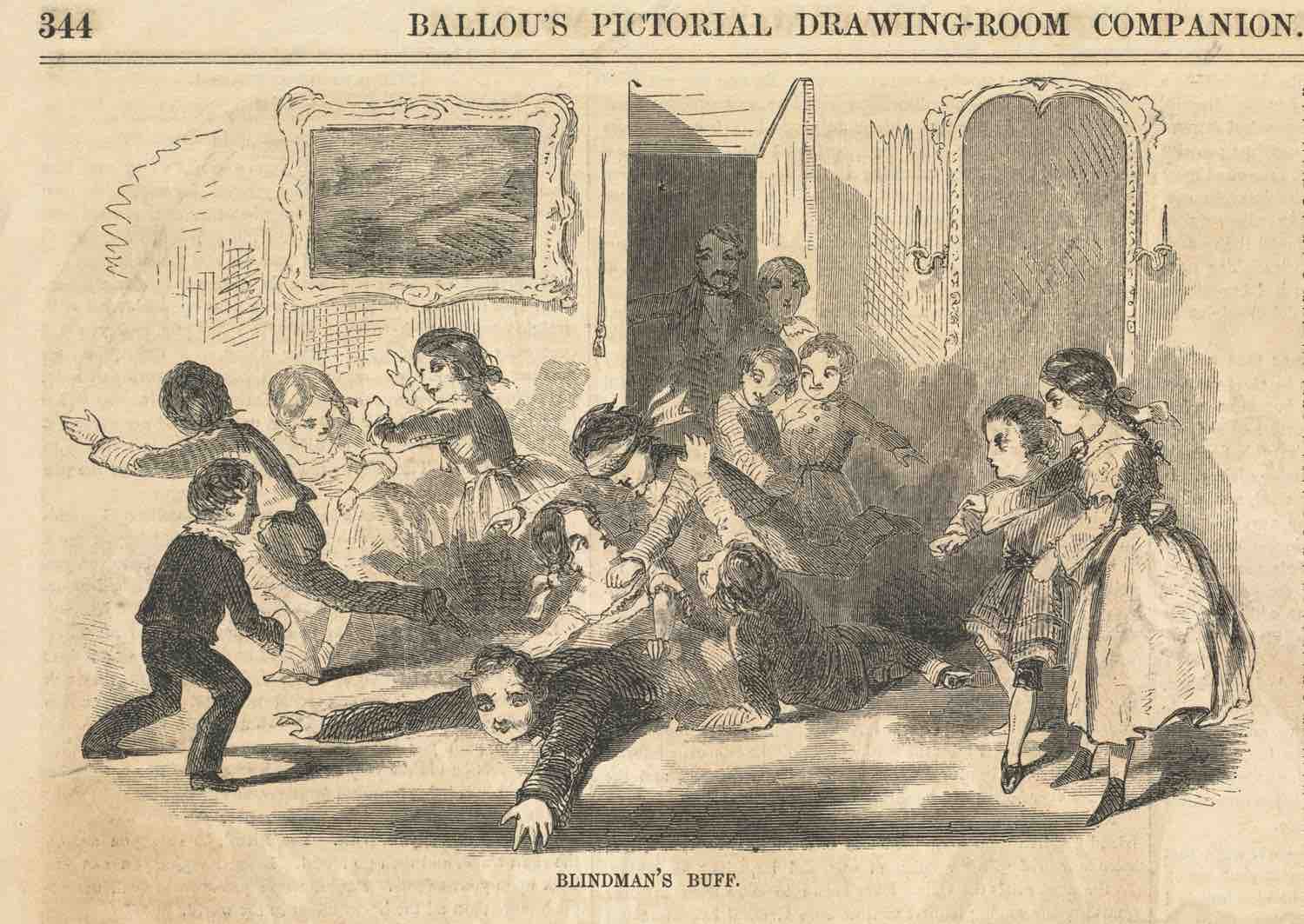 |
Many Victorian parlour games are still played today, and some of them have undergone only small changes or have different names. See if you recognize any of these popular games: Blind Man's Bluff, Thus Says the Grand Seignior, Snapdragon, The Sculptor, Charades, Pass the Slipper, Revered Crawley's Game, Kim's Game, Fictionary, Lookabout, and Forfeits.
Pantomimes
Have you ever heard of a pantomime? If you have ever been to a live musical play where they tell a story with costumed characters, funny scenes, and singing, that is very similar to a pantomime.
Pantomimes started over 500 years ago in Italy and France, where they were usually held in outdoor markets, fairgrounds, and other public spaces. People would gather around to watch costumed people tell funny stories in the form of a play with a lot of singing. Almost all pantomimes involved comedy, music, colourful displays, rhymes, silly costumes, cross dressing, and audience participation.
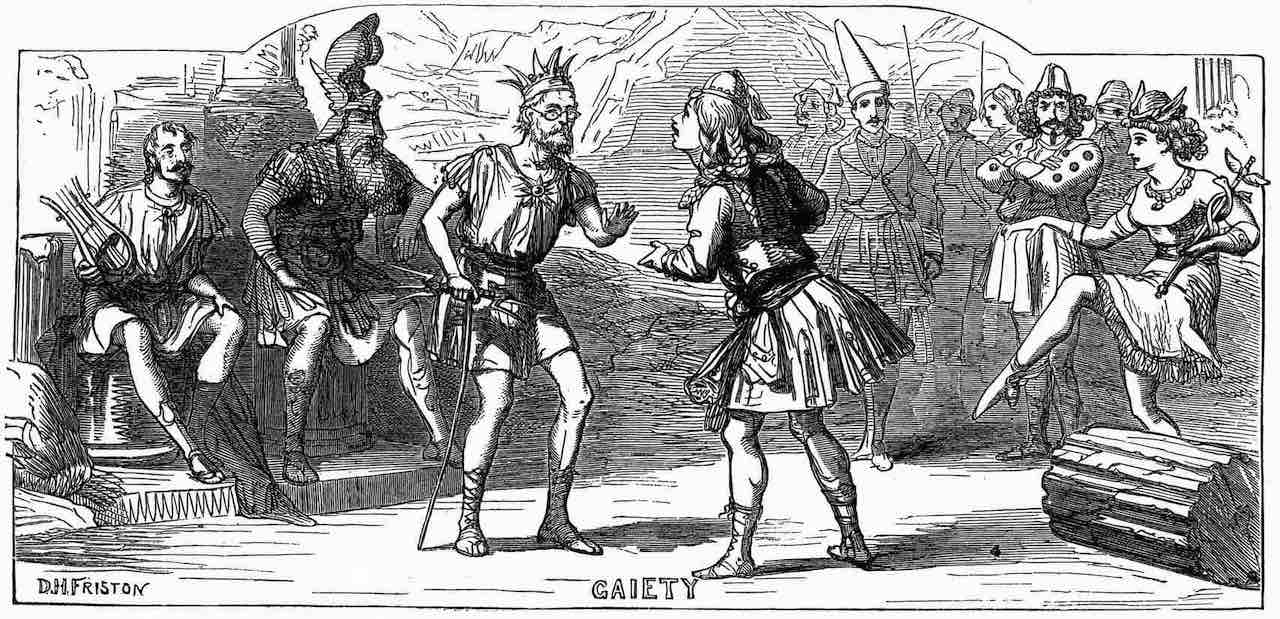 |
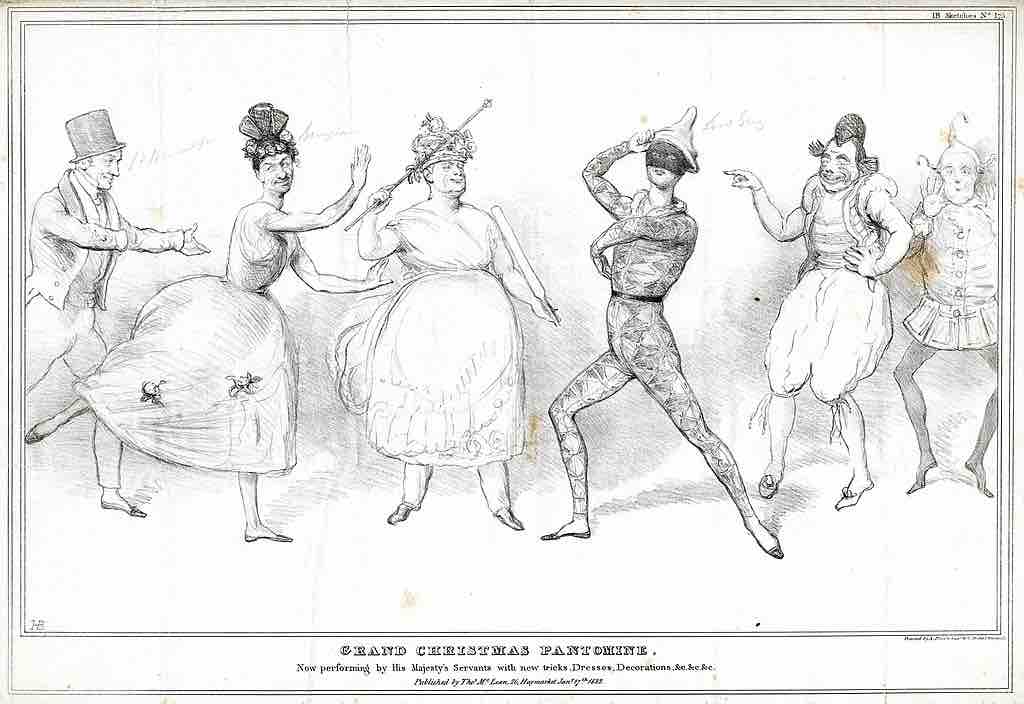 |
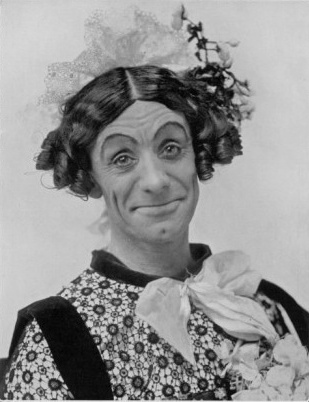 |
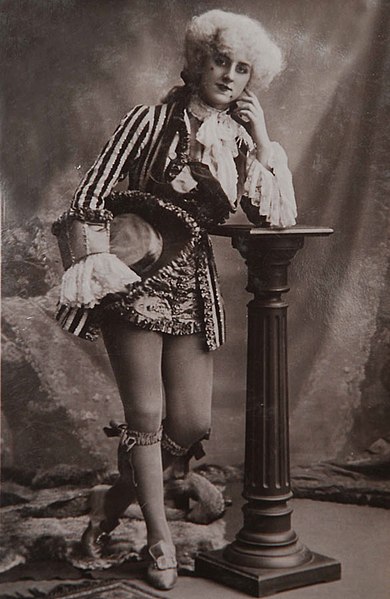 |
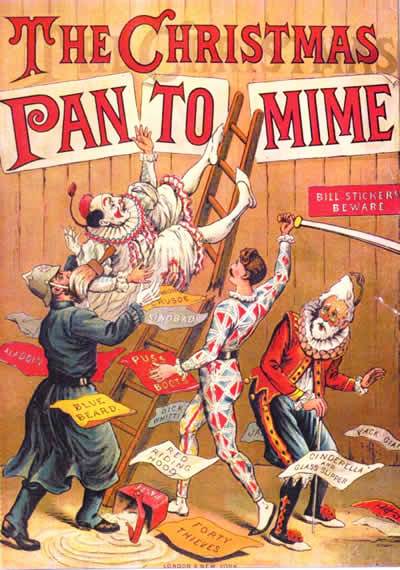 |
During the Victorian era, pantomimes became popular Christmas and Boxing Day traditions for many families to attend as part of their holiday entertainment. Pantomimes are still popular today especially around Christmas!
 DID YOU KNOW? The harlequins were a popular figure that appeared in most pantomime productions over the last few hundred years. Harlequins were colourfully dressed characters that took part in acrobatic tricks, mischievous acts, and were the funniest ones on the stage.
DID YOU KNOW? The harlequins were a popular figure that appeared in most pantomime productions over the last few hundred years. Harlequins were colourfully dressed characters that took part in acrobatic tricks, mischievous acts, and were the funniest ones on the stage.
Feasts
Do you have a big meal or a feast on special holidays in your family? The tradition of feasting during special holidays has been around for over a thousand years all over the world. It became a time for everyone to gather and enjoy rich and traditional foods that their family normally would not eat. The foods eaten at feasts usually took a long time to prepare because it did not just have to taste good, it had to look good when placed on the table.
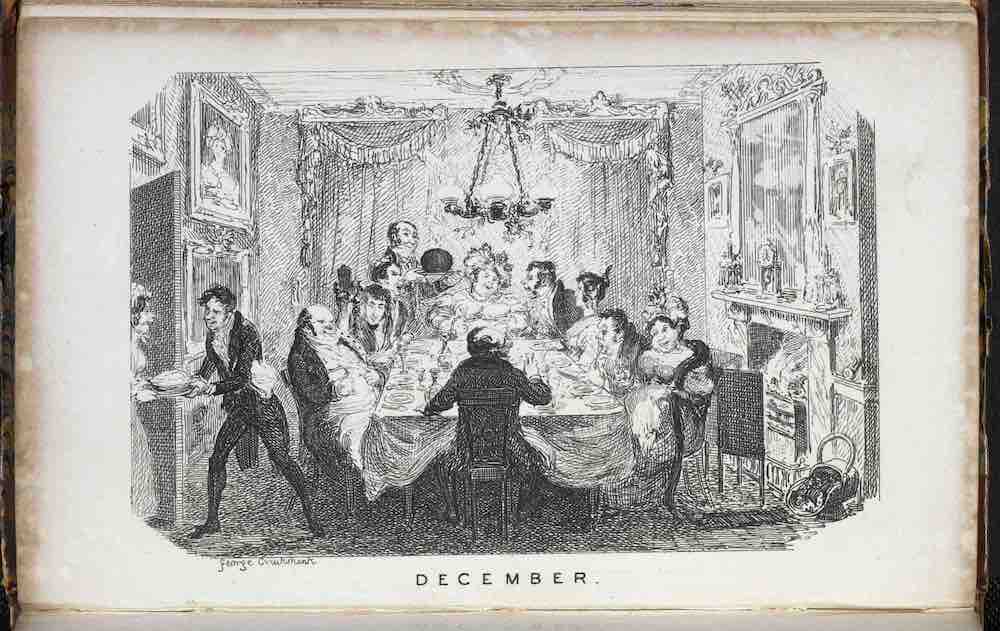 |
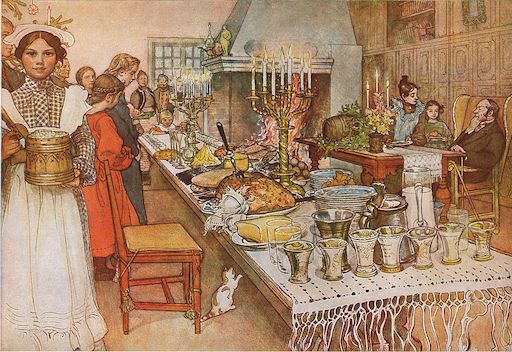 |
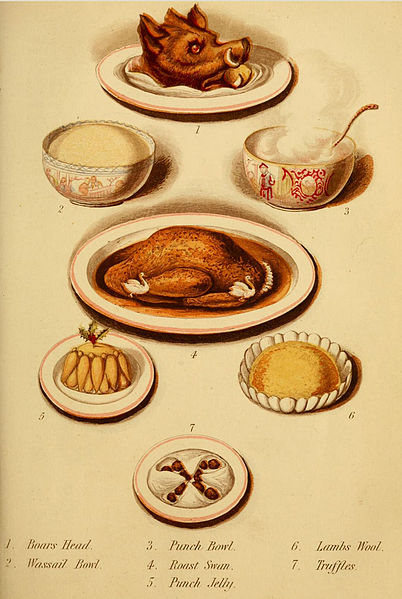 |
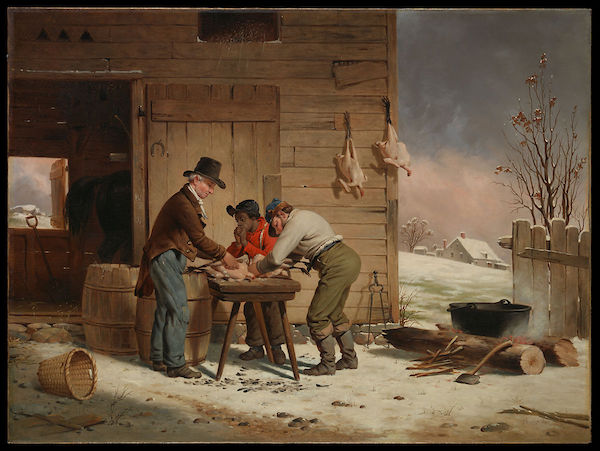 Many of the foods that people eat during major holidays including Christmas today were popular in the Victorian era while some are not so popular anymore. See if you can recognize any that your family eats: roast turkey, goose, beef, chicken, oysters, quail, wild game, mince meat pies, pudding, jellies, fruit and custards. Some wealthy families even enjoyed boar’s head and stuffed peacock.
Many of the foods that people eat during major holidays including Christmas today were popular in the Victorian era while some are not so popular anymore. See if you can recognize any that your family eats: roast turkey, goose, beef, chicken, oysters, quail, wild game, mince meat pies, pudding, jellies, fruit and custards. Some wealthy families even enjoyed boar’s head and stuffed peacock.
DID YOU KNOW? Eating turkey at Christmas or other major holidays became popular in many countries during the Victorian era. Before this time, turkeys were very expensive, as they had to be imported to many countries from the Americas. It was also hard to sell them at markets because turkeys did not travel well: they were large, clumsy, and they had to wear special boots on their feet so they wouldn’t get hurt. During the Victorian era, train transport became more popular allowing turkeys to travel farther distances more easily, reducing the cost.
Dessert
Do you eat dessert during the holidays that your family celebrates?
See if you can recognize any of these popular Victorian desserts! Plum pudding or Christmas pudding has been around for hundreds of years and is still enjoyed today. It is usually made weeks in advance by boiling beef, mutton, raisins, bread, prunes, spices, dried fruit, and ale. While it was cooking, family members all took turns stirring the pot and making wishes. Small objects such as coins, thimbles, and buttons were usually hidden inside the pudding for people to find as they ate and the finder would be rewarded with good luck!
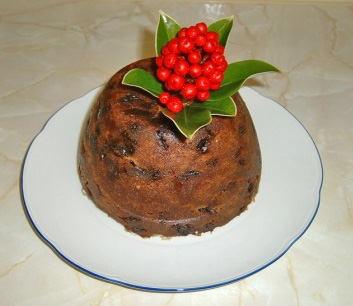 |
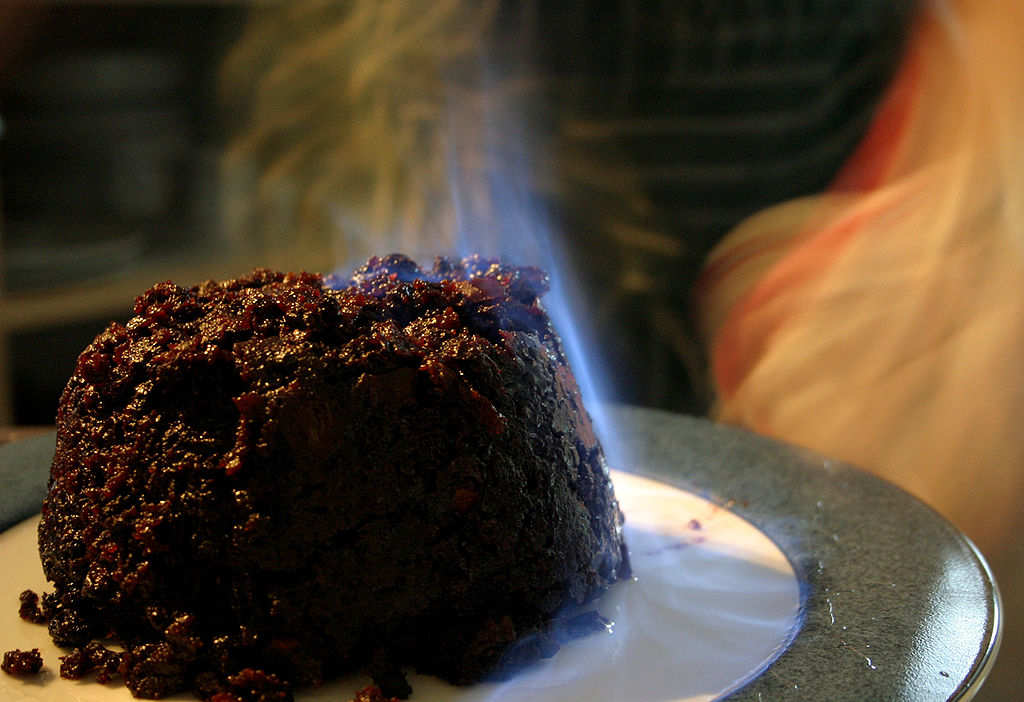 |
Have you ever had plum pudding?
Christmas cake was another very famous Victorian Christmas dessert. It was a very tall cake, with at least two layers of spiced cake and white icing spread all over it. Holly berries were usually placed on top as decoration. Do you eat cake on Christmas or any other special holidays throughout the year?
Many other desserts were eaten at Christmas time: sponge cakes, tarts, rice pudding, brown bread ice cream, custards, trifles, and cookies. Do you make any of these with your family during the holidays?
DID YOU KNOW? When plum pudding was placed on the Christmas dinner table, alcohol was poured over it and the dessert would be lit on fire. This would harden the outside, making the pudding look very beautiful on the table once the fire burned out.
Stockings and Sweets
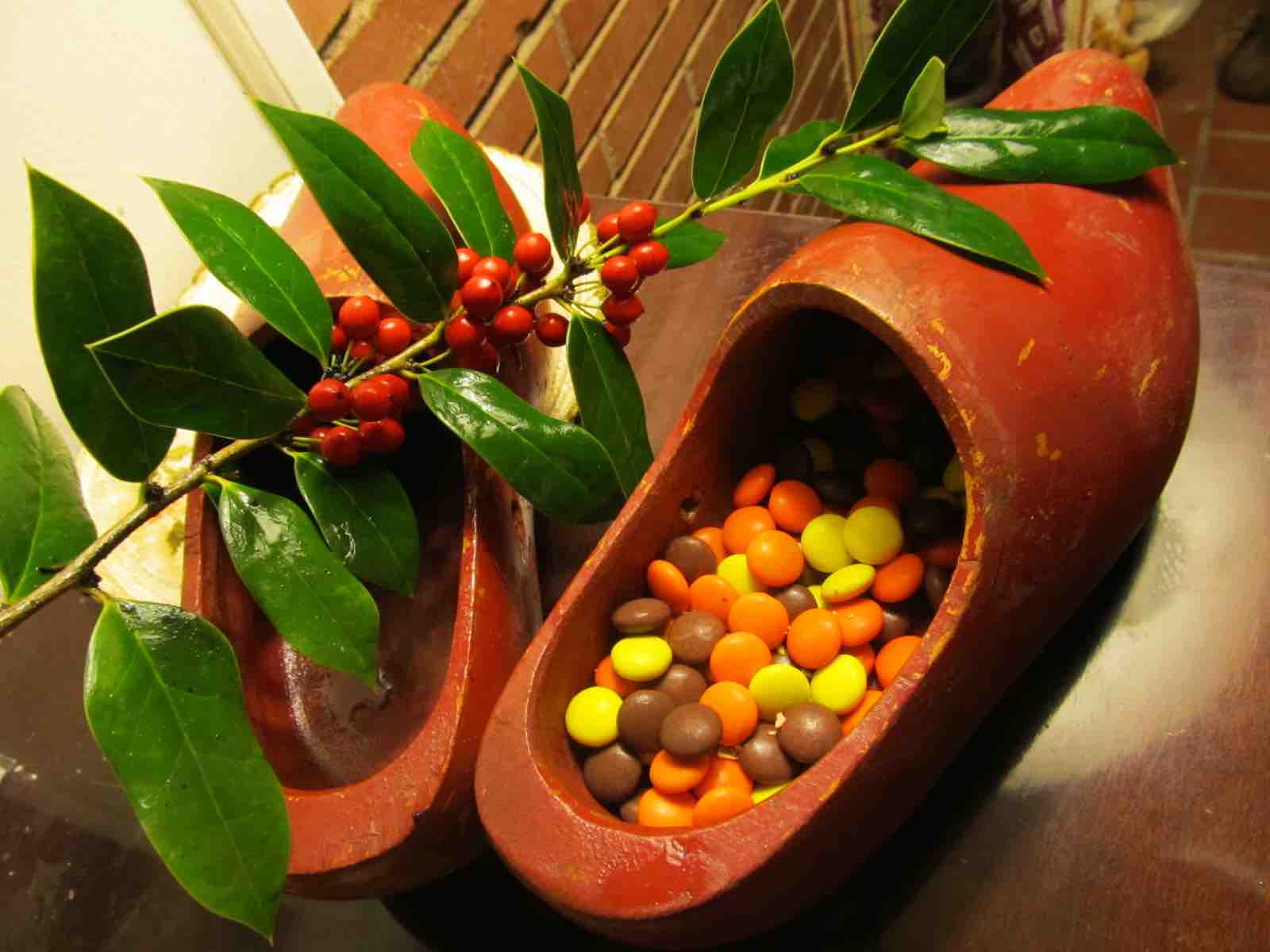 Does your family set out stockings on Christmas Eve? Where do you place them? By the tree? By the fireplace? Do you hang them on your bed?
Does your family set out stockings on Christmas Eve? Where do you place them? By the tree? By the fireplace? Do you hang them on your bed?
The tradition was first started in Belgium and the Netherlands where it was common for children to fill their wooden clogs or shoes with straw and carrots for the donkey of Sinterklaas or Saint Nicholas. In the morning, kids would wake to find their shoes filled with sweets, nuts, and fruits. This tradition is still practiced today in Belgium and the Netherlands, or by those with Dutch and Belgian family roots.
During the Victorian era, this practice was also adopted by British settlers in the United States and Canada, who decided to fill their socks or stockings with straw instead of their shoes.
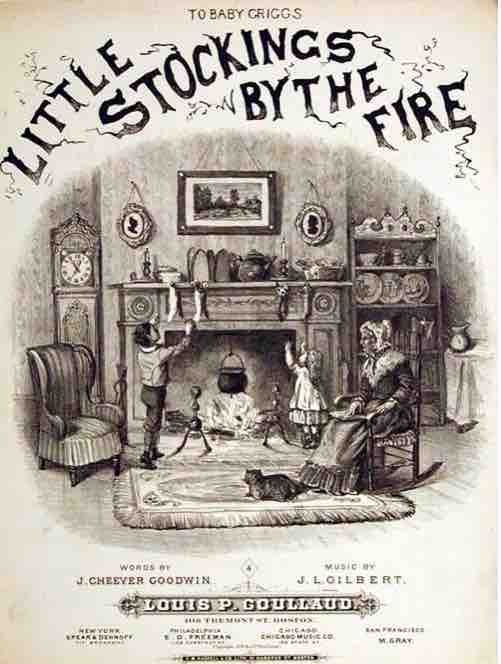 |
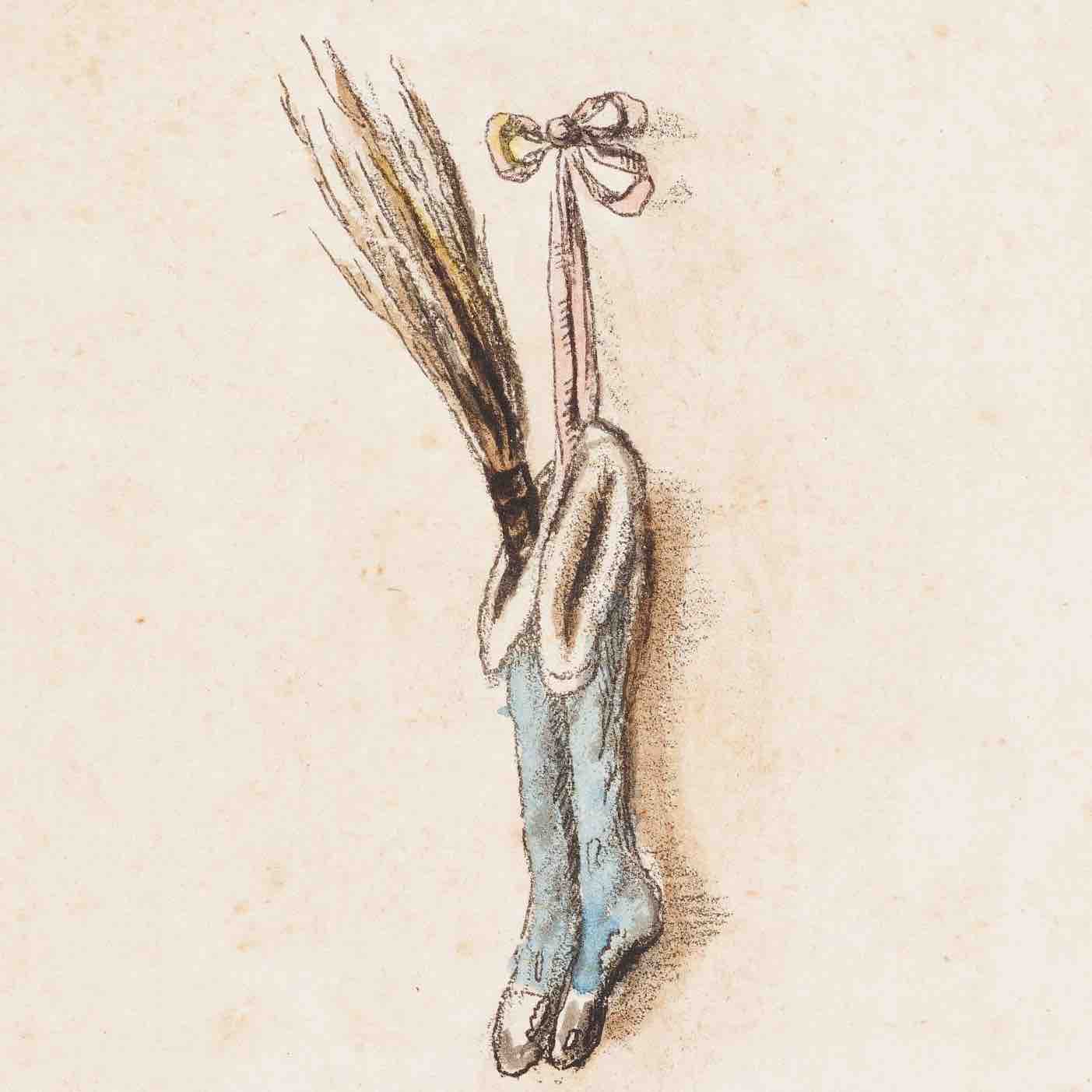 |
Candies and sweets were popular gifts to give around Christmas time and were usually found in stockings. See if you recognize any of these popular Victorian sweets:
Children’s Gifts (At Home)
What do you think Victorian era children received as gifts?
Prior to the Victorian era, gifts were usually quite small and limited. They were usually handmade and small enough to be hung on the tree instead of resting under it. Do you hang any gifts on your tree?
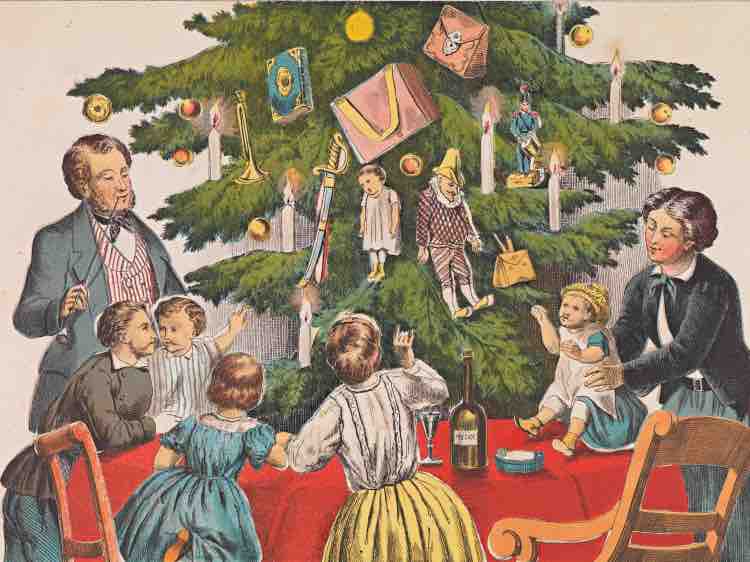 |
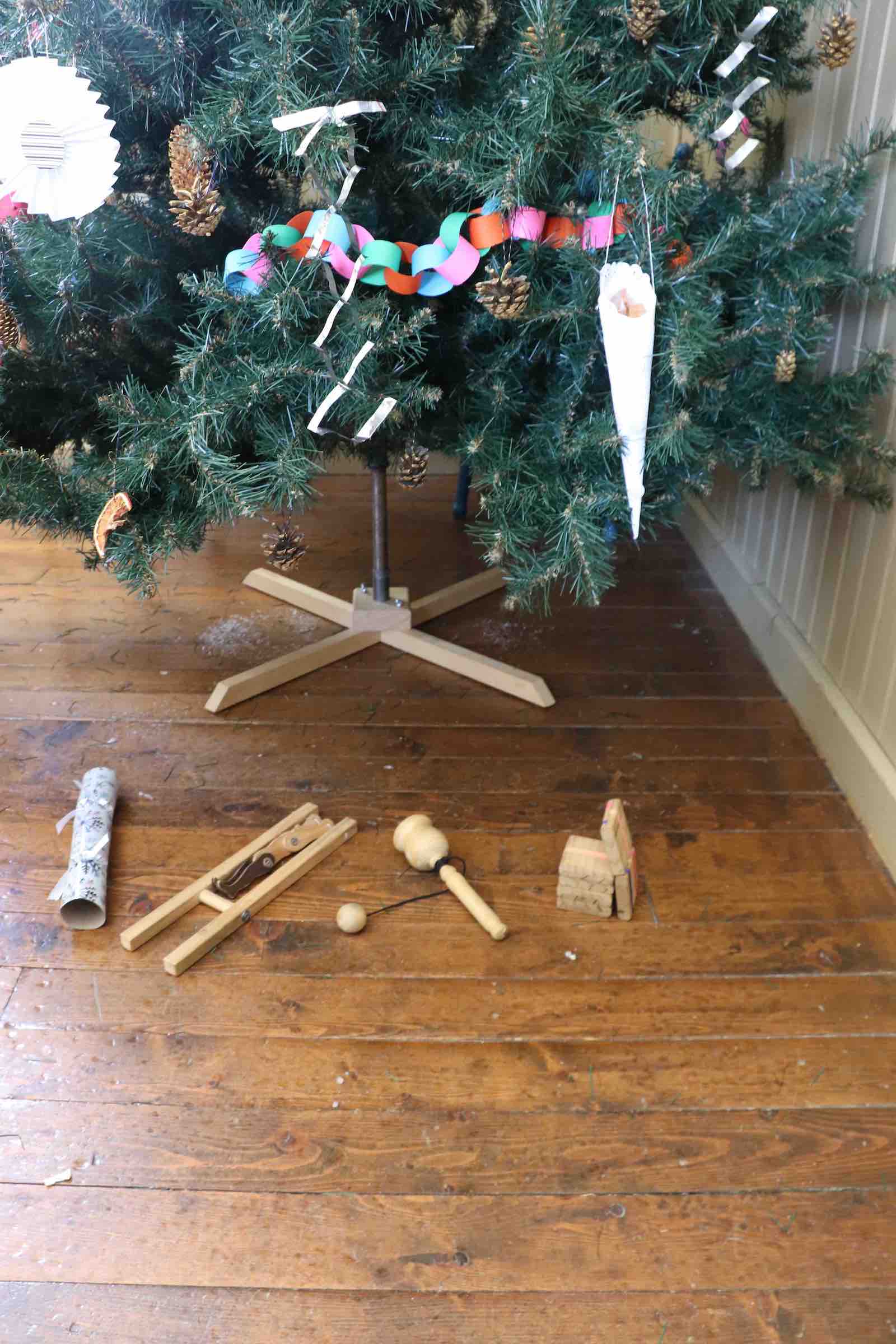 |
Traditional handmade gifts included foods, jellies, sewn or woven pieces, and paper crafts. Throughout the Victorian era, factory made toys and gifts became more popular. The type and number of gifts bought depended on the wealth of the family. Christmastime did encourage families to spend extra around the holidays though and gift shopping became its own tradition.
Popular gifts for children around the late 19th Century were dolls, doll houses, toy animals, jigsaw puzzles, musical instruments, building blocks, books, science experiment kits, hoops, marbles, toy trains, diabolo, and paper dolls. Do you recognize any of these?
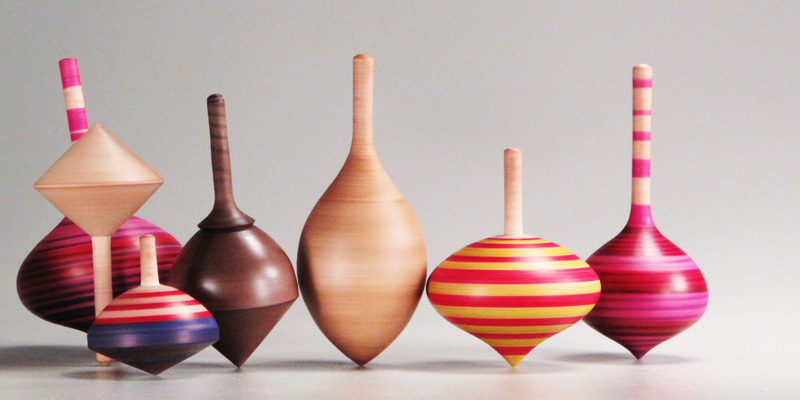 |
 |
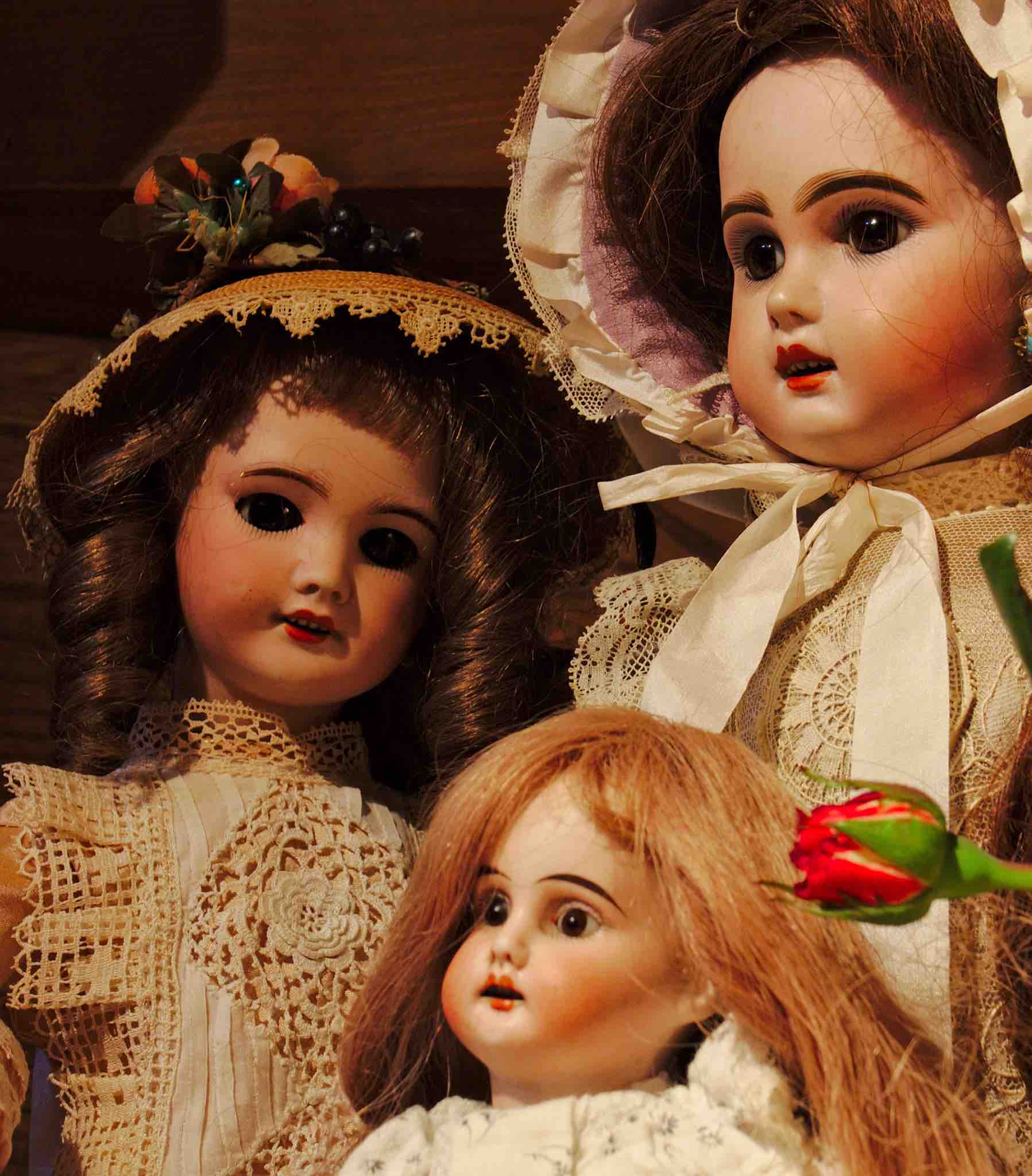 |
 |
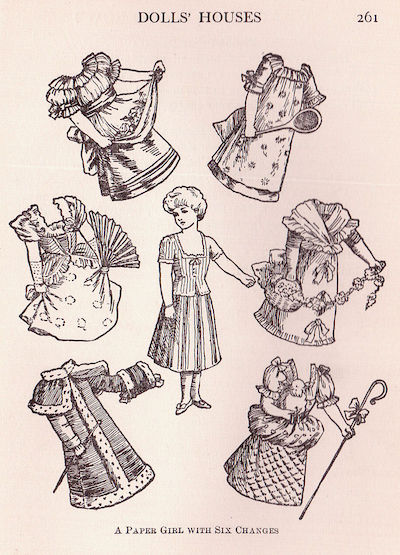 |
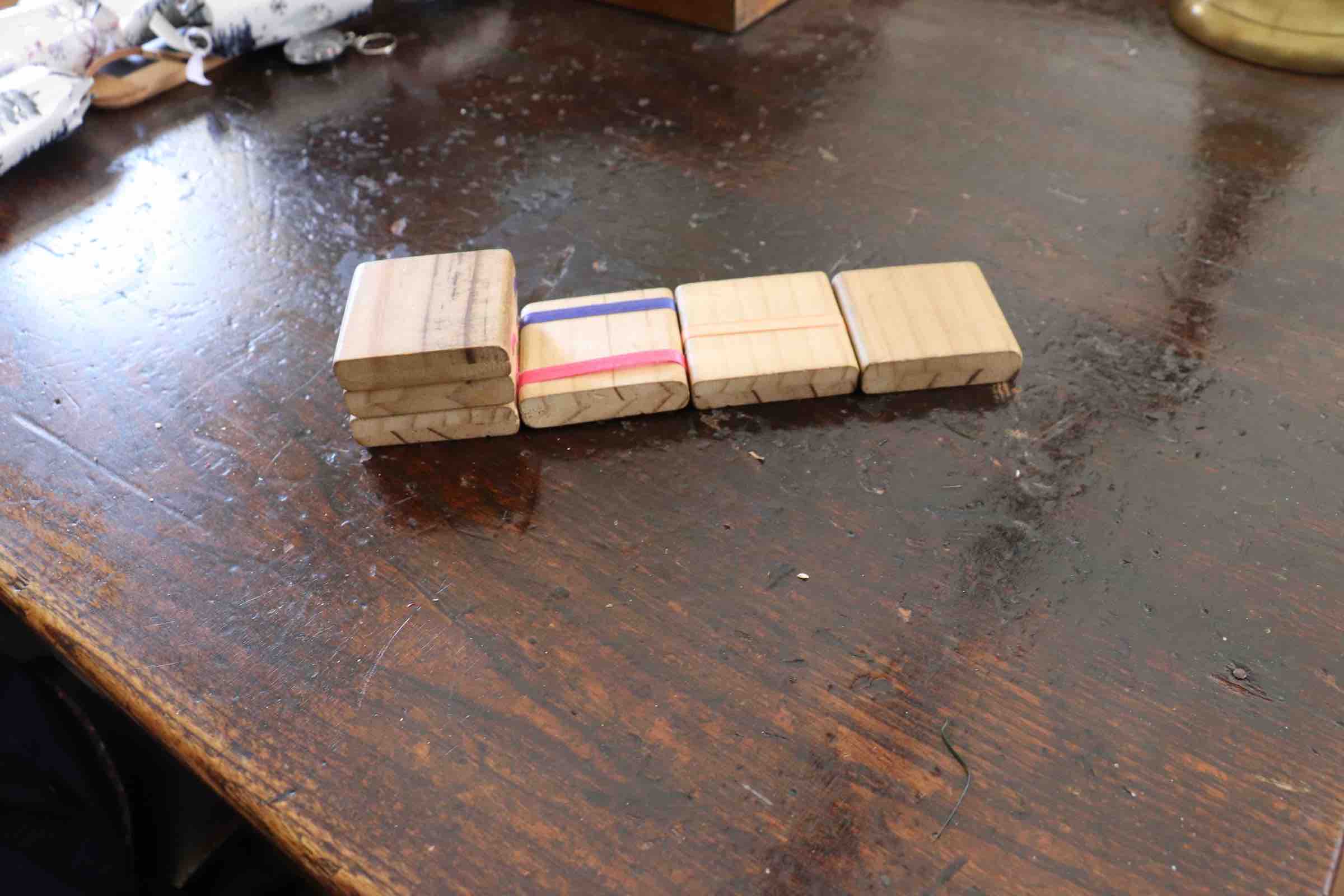 |
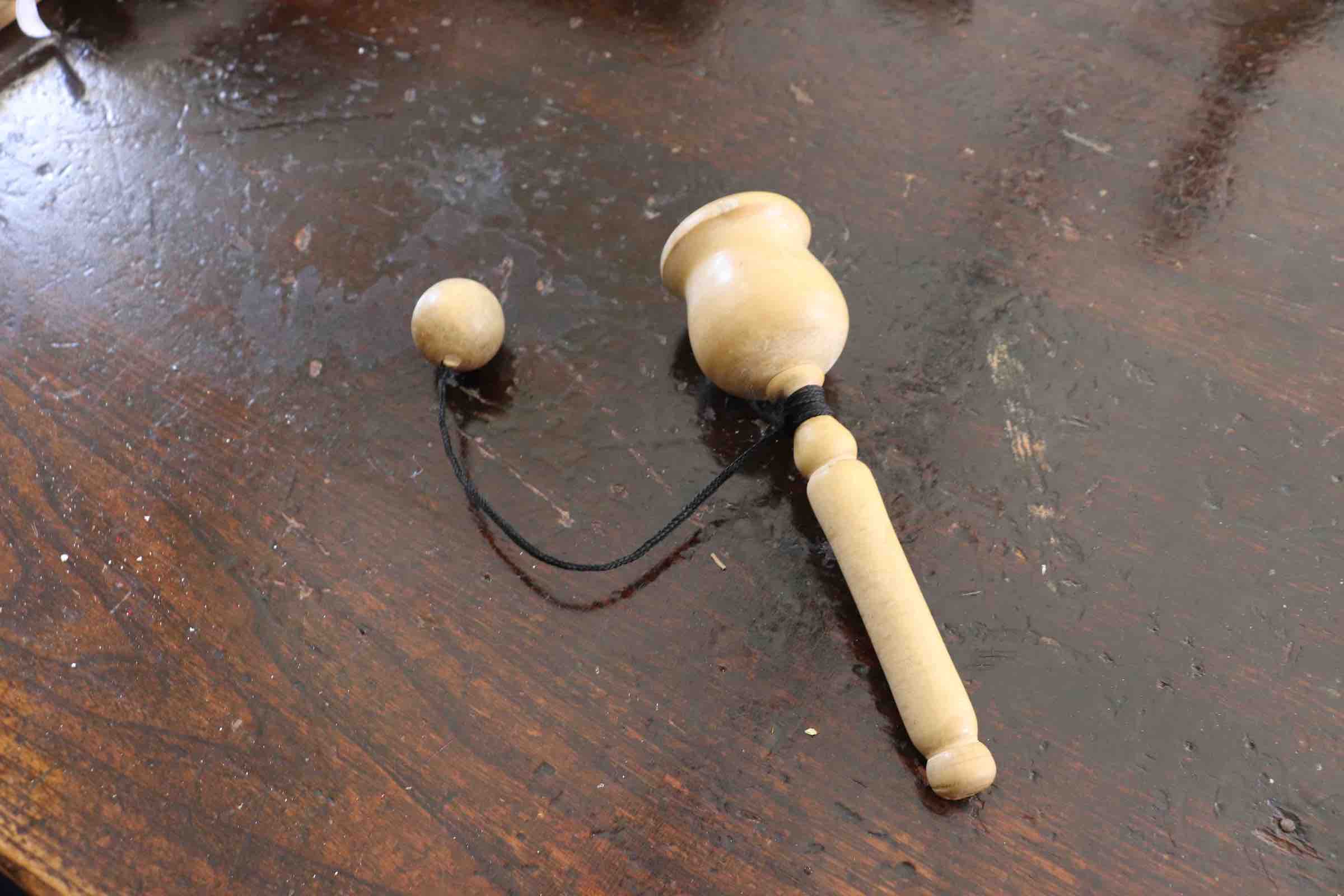 |
DID YOU KNOW? Gifts were originally exchanged on New Year’s Day and not on Christmas Day. It was in the 1840s when gift giving was moved to Christmas.
Conclusion
Thank you for visiting the virtual DCC Victorian Christmas Exhibit! We hope you enjoy completing the activities included throughout the exhibit with your family. Did you notice any similarities between your own family holiday traditions? Any differences? While the Victorian era seems like a long time ago, many of our modern holiday traditions have not changed very much.
Stay safe this holiday and we hope to see you next year at the LSS for an in-person Victorian Christmas event! Happy Holidays!
Download this template to make your own special family ornament for any holiday that your family celebrates and include your own traditions!
Supplemental Learning for Advanced Learners
For supplemental learning, here is a more detailed look at the history of Victorian Christmas, including the origins of famous Christmas figures throughout the world. This section is recommended for advanced readers who would like to learn more.
Acknowledgements
The Victorian Christmas exhibit would not be complete without the help of a network of online resources available from individual museums and DCC staff members.
Thank you to the Saskatchewan Archival Information Network (SAIN) for their huge database that documents a wide range of the history of Saskatchewan. Many of the historic photos in the exhibit were found in their collections.
We would like to extend our thank you to individual museums and historical organizations with extensive information and historical photos available to the public on their websites for use in researching for this exhibit. Their information can be found in the accompanying bibliography.
Finally, thank you to all the individuals including DCC staff members who were a major contribution to the development of this exhibit. Your dedication and contributions were greatly appreciated.
--
Kaylee Hoko, exhibit curator
Kaylee Hoko was hired as a summer student at the Diefenbaker Canada Centre and will continue to work as a Heritage Interpreter through April 2020. She is currently in her fourth year at the University of Saskatchewan, pursuing an undergraduate degree in History.
References and Disclaimer
References
A Victorian Christmas. “Yule Log.” http://www.avictorian.com/christmas_yulelog.html
Ancient History Encyclopedia. “Preparing the Yule Log.” https://www.ancient.eu/image/9617/preparing-the-yule-log/
BBC. “Victorian Christmas Activities: Holly Berries.” http://www.bbc.co.uk/victorianchristmas/activity/holly-berries.shtml
BBC. “Where Does Pantomime Really Come From.” https://www.bbc.co.uk/programmes/articles/2JZ6TSqnd480n90dzN77r1Q/where-does-pantomime-really-come-from
Britannica. “A Visit from Saint Nicholas.” https://www.britannica.com/topic/A-Visit-from-St-Nicholas#:~:text=Nicholas%2C%20in%20full%20Account%20of,Sentinel%20on%20December%2023%2C%201823.
Britannica. “Christmas Tree.” https://www.britannica.com/plant/Christmas-tree#ref106886
Britannica. “Saint Nicholas Day.” https://www.britannica.com/topic/Saint-Nicholas-Day
Canadian Encyclopedia. “Boxing Day.” https://www.thecanadianencyclopedia.ca/en/article/boxing-day
Castelow, Ellen. Historic UK. “Pantomime.” https://www.historic-uk.com/CultureUK/Pantomime/
Coca-Cola Australia. “The Definitive History of Santa Claus.” https://www.coca-colacompany.com/au/news/definitive-history-of-santa-claus
Cocoa and Heart. “Victorian Sweets.” https://www.cocoaandheart.co.uk/blog/read_178016/victorian-sweets.html
Copeman, Dawn. Time Travel Britain. “Who is Father Christmas?” https://www.timetravel-britain.com/articles/christmas/santa.shtml
Dodd, Sara M. "Conspicuous Consumption and Festive Follies: Victorian Images of Christmas." In Christmas, Ideology and Popular Culture, by Whiteley Sheila, 32-49. Edinburgh: Edinburgh University Press, 2008. Accessed December 8, 2020. http://www.jstor.org/stable/10.3366/j.ctt1r1xq8.7.
Dorling, Danny & Pattie, Charles & Pitts, Martin. "Christmas feasting and social class: Christmas feasting and everyday consumption." Food, Culture & Society 10, no. 3 (2007): 410. Gale General OneFile. https://link-gale-com.cyber.usask.ca/apps/doc/A174820138/ITOF?u=usaskmain&sid=ITOF&xid=ff93981f.
Durham University. “Victorian Durham.” https://community.dur.ac.uk/4schools.resources/victoriandurham/home6.html.
Flanders, Judith. The British Library. “Victorian Christmas” (2014). https://www.bl.uk/romantics-and-victorians/articles/victorian-christmas#
Goss, David W. “Christmas Past: A Victorian Garland.” Beaver 73, no. 6 (December 1993): 4. http://search.ebscohost.com.cyber.usask.ca/login.aspx?direct=true&db=31h&AN=9403290384&site=ehost-live.
Hadley, Lizzie M. "CHRISTMAS CUSTOMS." The Journal of Education 38, no. 24 (949) (1893): 395-96. http://www.jstor.com/stable/44038860.
Hendry, Hamish. Holidays and Happy Days, (London: Grant Richards, 1901; Project Gutenburg, 2011), https://www.gutenberg.org/files/37216/37216-h/37216-h.htm
Interpreter Guide for the Magic Schoolhouse Program
Interpreter Guide for the 2018 Victorian Christmas Program
Jane Austen Centre. “Snapdragon.” https://janeausten.co.uk/blogs/games-to-play/snapdragon
Klein, Christopher. History. “Why is the day after Christmas called Boxing Day?” https://www.history.com/news/why-is-the-day-after-christmas-called-boxing-day
Mimi Mathews. “A Victorian Ladies Christmas Gift Guide.” https://www.mimimatthews.com/2016/12/19/a-victorian-ladys-christmas-gift-guide/.
McKay, George. "Consumption, Coca-colonisation, Cultural Resistance – and Santa Claus." In Christmas, Ideology and Popular Culture, by Whiteley Sheila, 50-68. Edinburgh: Edinburgh University Press, 2008. Accessed December 8, 2020. http://www.jstor.org/stable/10.3366/j.ctt1r1xq8.8.
MET Museum. “Santa Claus in Camp by Thomas Nast” https://www.metmuseum.org/art/collection/search/427502?searchField=All&sortBy=Relevance&ft=thomas+nast&offset=0&rpp=20&pos=18
Moore, Clemment Clarke. A Visit From Saint Nick, 1823. https://books.google.ca/books?id=xEtMAQAAIAAJ&source=gbs_navlinks_s.
"Outlines of Work for Each School Year." The Elementary School Teacher 5, no. 10 (1905): 614-615. http://www.jstor.com/stable/992445.
Powers, Ella Marie. "CHRISTMAS FOR THE LITTLE ONES." The Journal of Education 44, no. 22 (1896): 392. https://www.jstor.org/stable/44046941.
Raats, Hilary Naomi. "Visualizing the Victorian Christmas: Evolving Iconography and Symbolism in the Wake of Nineteenth-Century Commercialism." The General Brock University Undergraduate Journal of History 2 (2017): The General Brock University Undergraduate Journal of History, 04/17/2017, Vol.2, 49.
St. Nicholas Centre. “Saint Nicholas and the Origin of Santa Claus.” https://www.stnicholascenter.org/who-is-st-nicholas/origin-of-santa
Storey, John. “The Invention of the English Christmas” In Christmas, Ideology and Popular Culture, ed. By Sheila Whiteley. (Edinburgh: Edinburgh University Press, 2008), 18. http://www.jstor.com/stable/10.3366/j.ctt1r1xq8.6.
Sullivan, Jill. The Politics of the Pantomime : Regional Identity in the Theatre 1860–1900. (Hertfordshire: University Of Hertfordshire Press, 2011.) Accessed July 14, 2020. ProQuest Ebook Central. https://search-proquest-com.cyber.usask.ca/legacydocview/EBC/716214?accountid=14739.
Tikkanen, Amy. Britannica. “Krampus.” https://www.britannica.com/topic/Krampus
Tille, Alexander. "German Christmas and the Christmas-Tree." Folklore 3, no. 2 (1892): 169. www.jstor.org/stable/1253194.
"Tradition of Helping; St. Stephen's Day." Chronicle - Herald, Dec 26, 2016. http://cyber.usask.ca/login?url=https://search.proquest.com/docview/1855722023?accountid=14739.
Willis, Mathew. “What Santa Claus Really Looks Like” https://daily.jstor.org/what-santa-claus-looks-like/.
Why Christmas. “Christmas in the Netherlands.” https://www.whychristmas.com/cultures/holland.shtml
Why Christmas. “The Christmas Pickle.” https://www.whychristmas.com/customs/christmaspickle.shtml
Victorian and Albert Museum. “Victorian Christmas Traditions.” https://www.vam.ac.uk/articles/victorian-christmas-traditions
Victoria and Albert Museum. “The First Christmas Card.” https://www.vam.ac.uk/articles/the-first-christmas-card
Victoria and Albert Museum. “The Christmas Cracker.” https://www.vam.ac.uk/articles/the-christmas-cracker
Victorianna. “Old Fashioned Victorian Christmas.” http://www.victoriana.com/christmas/default.htm

